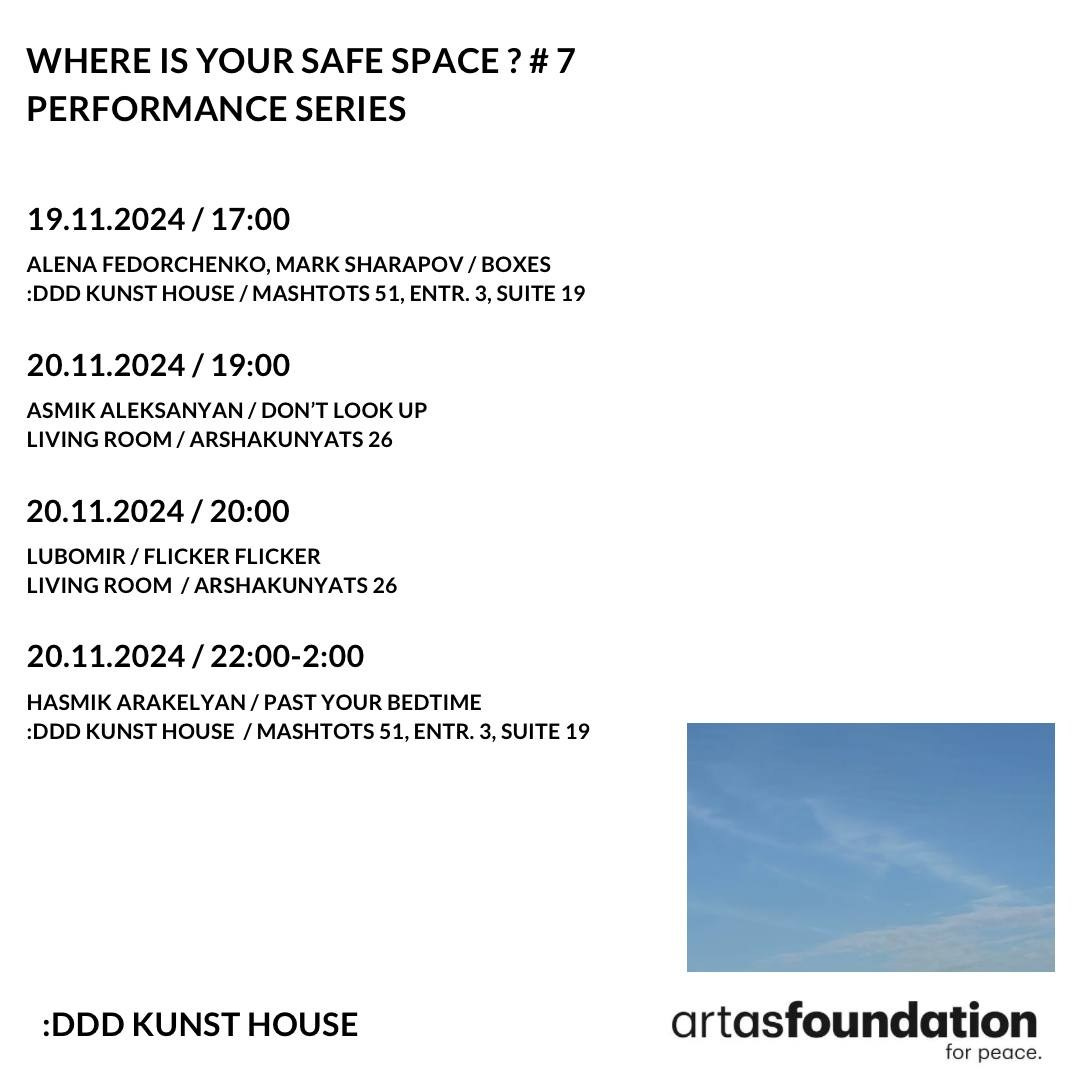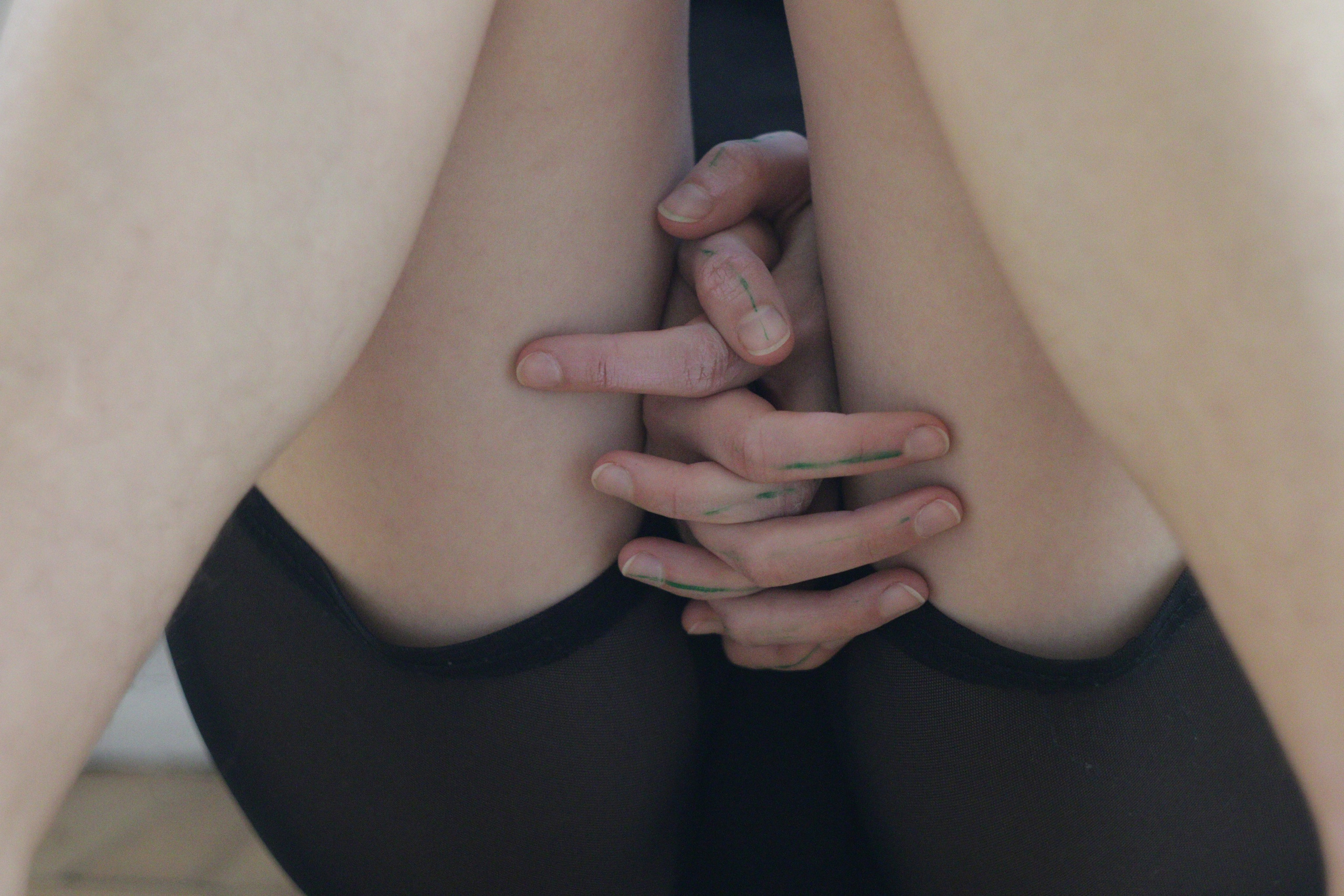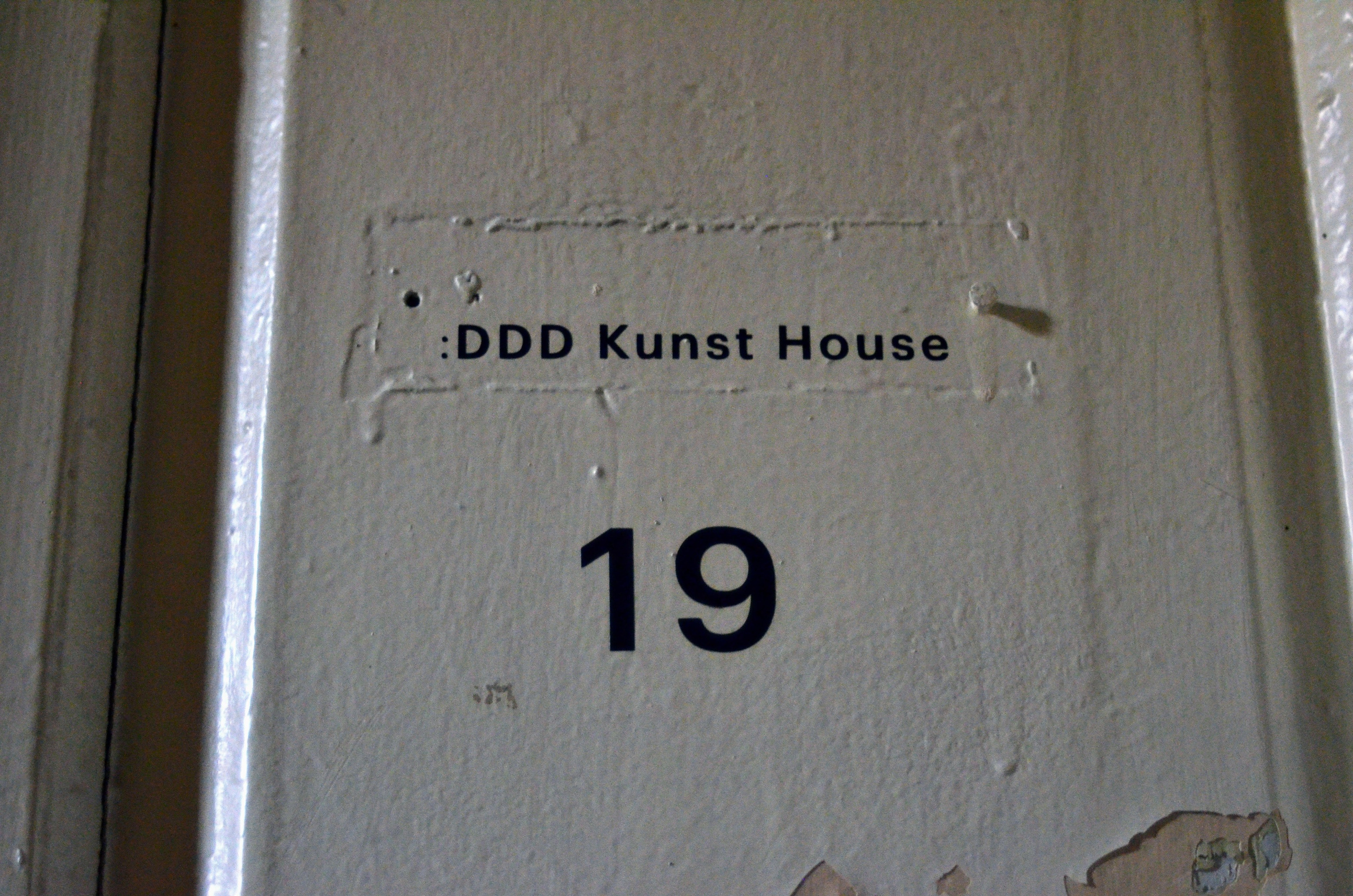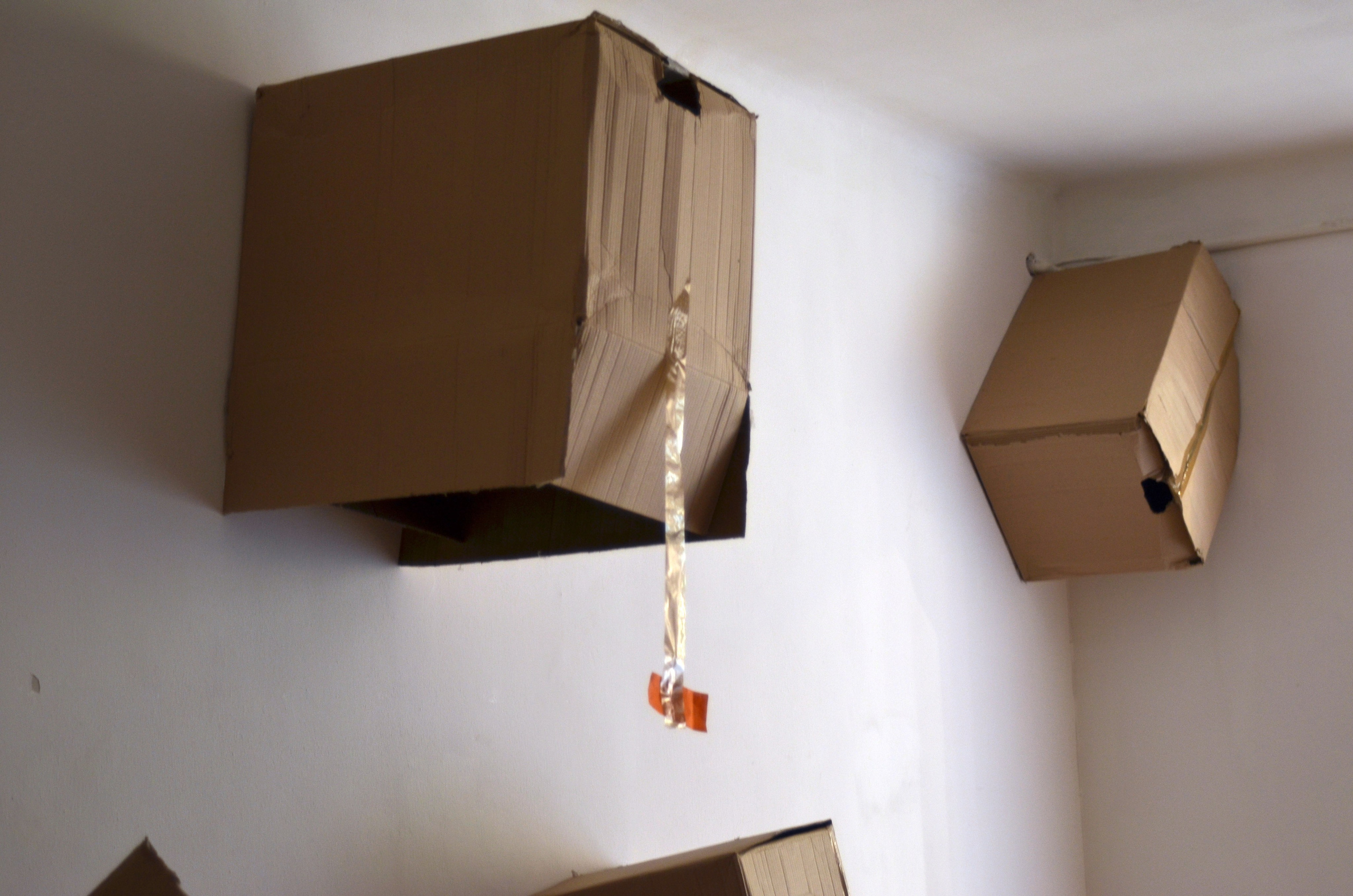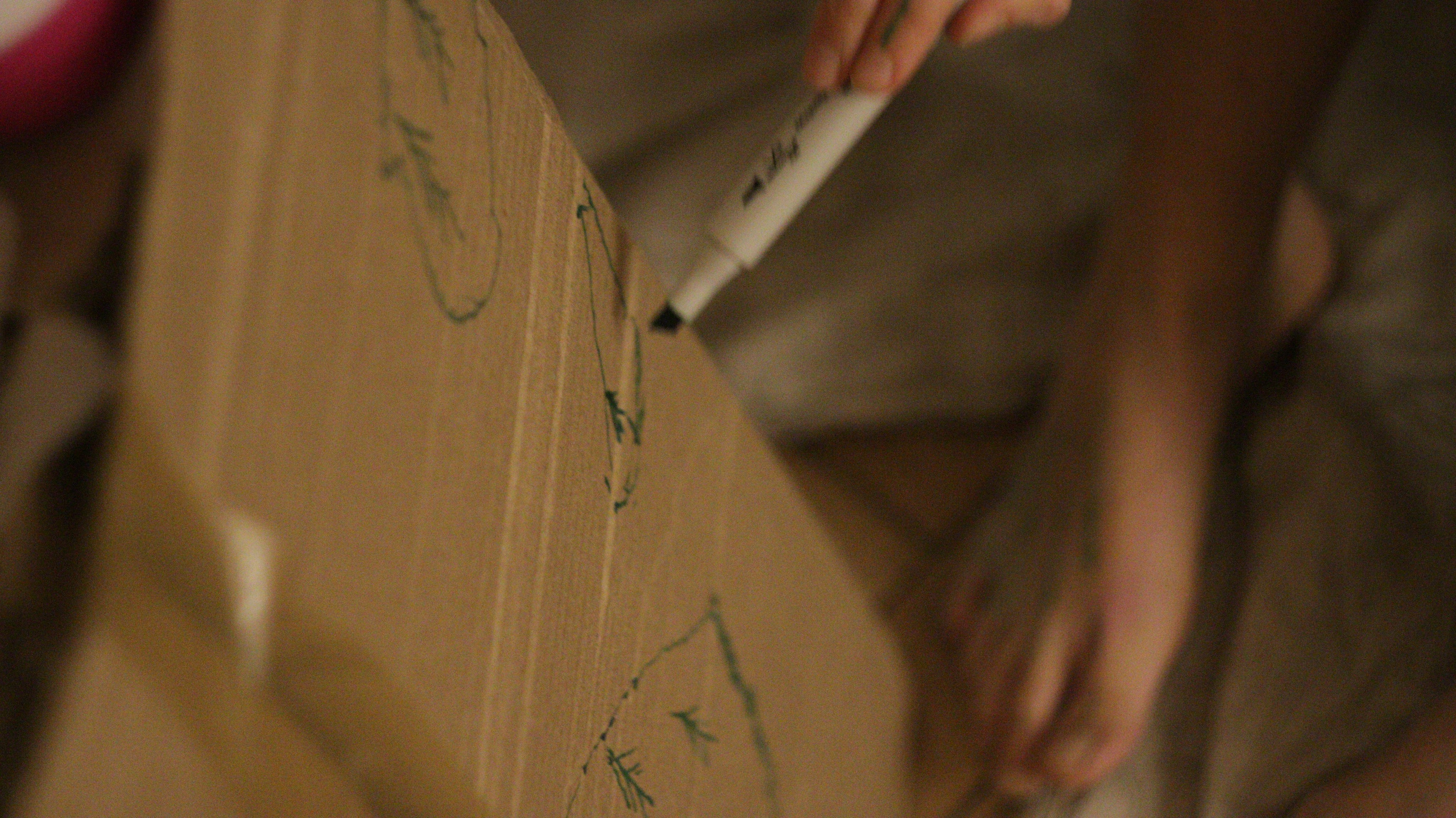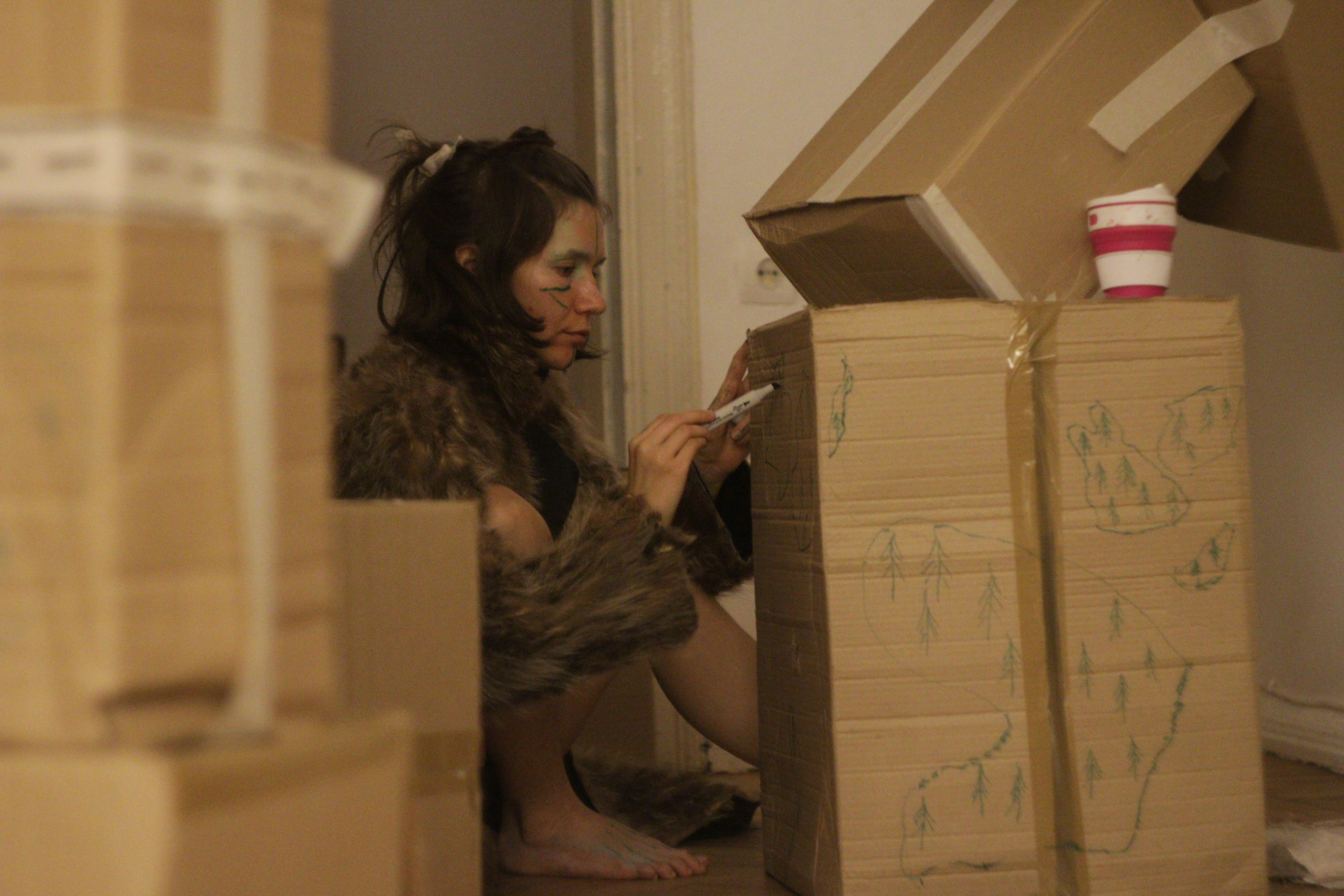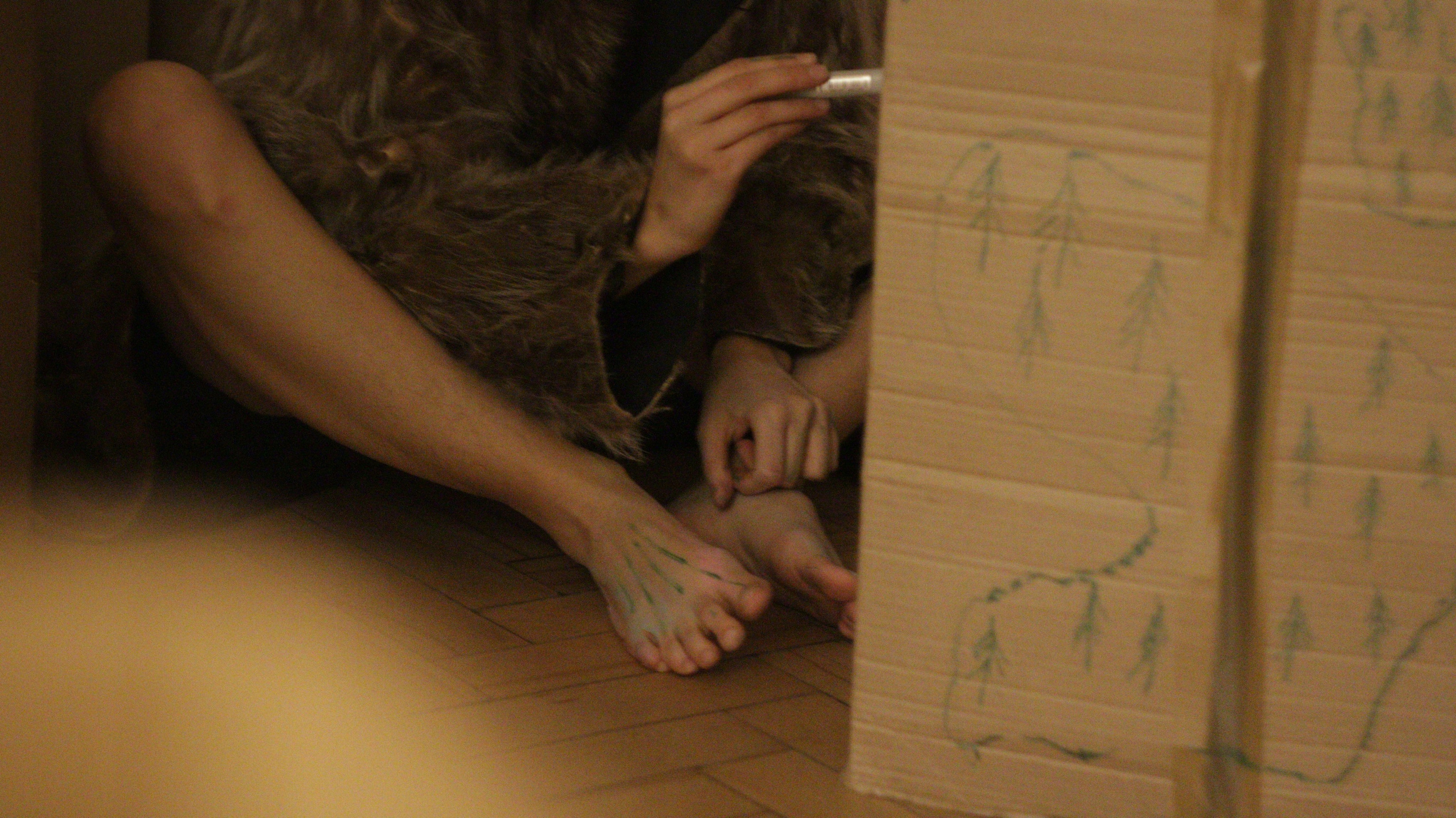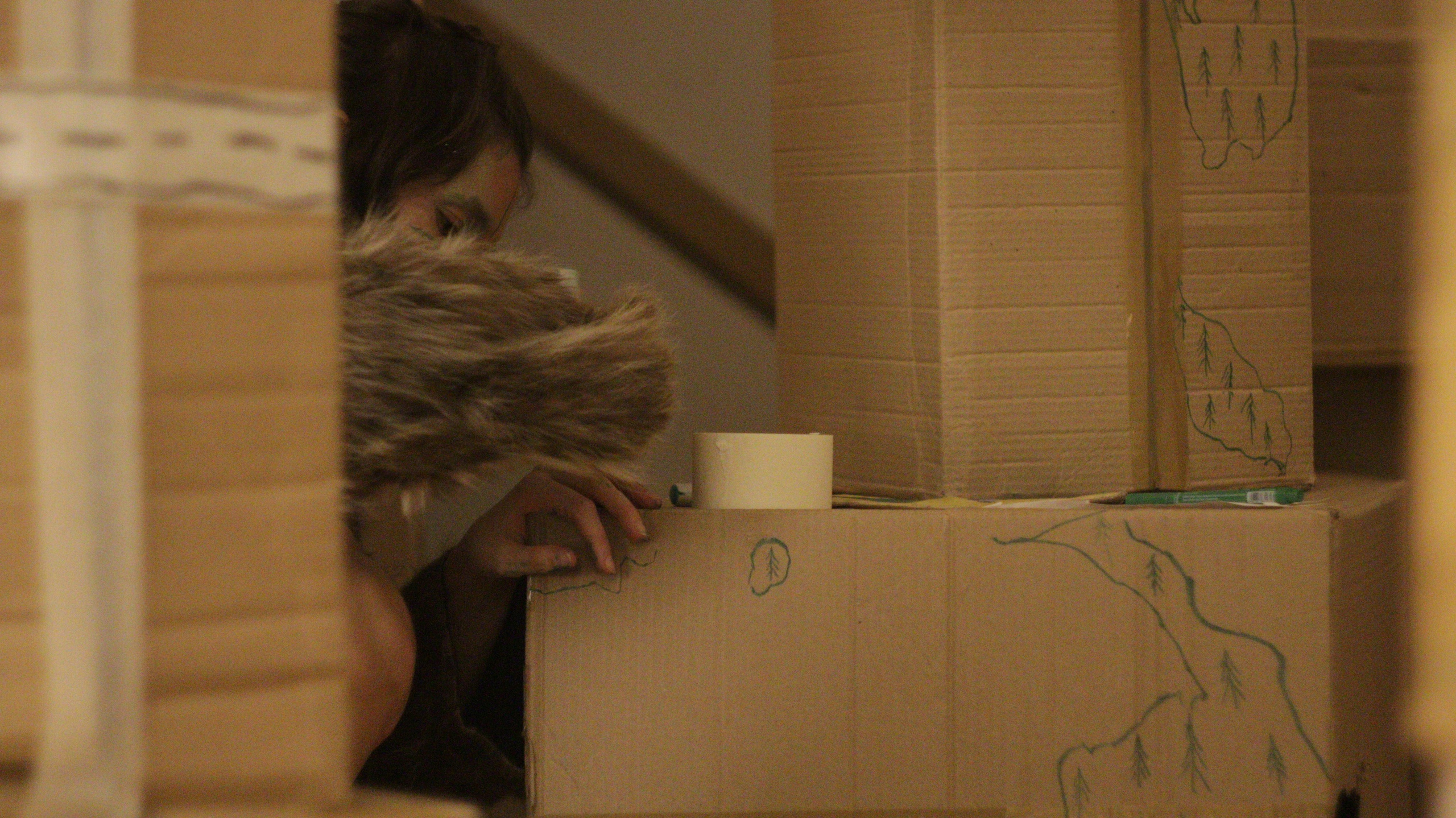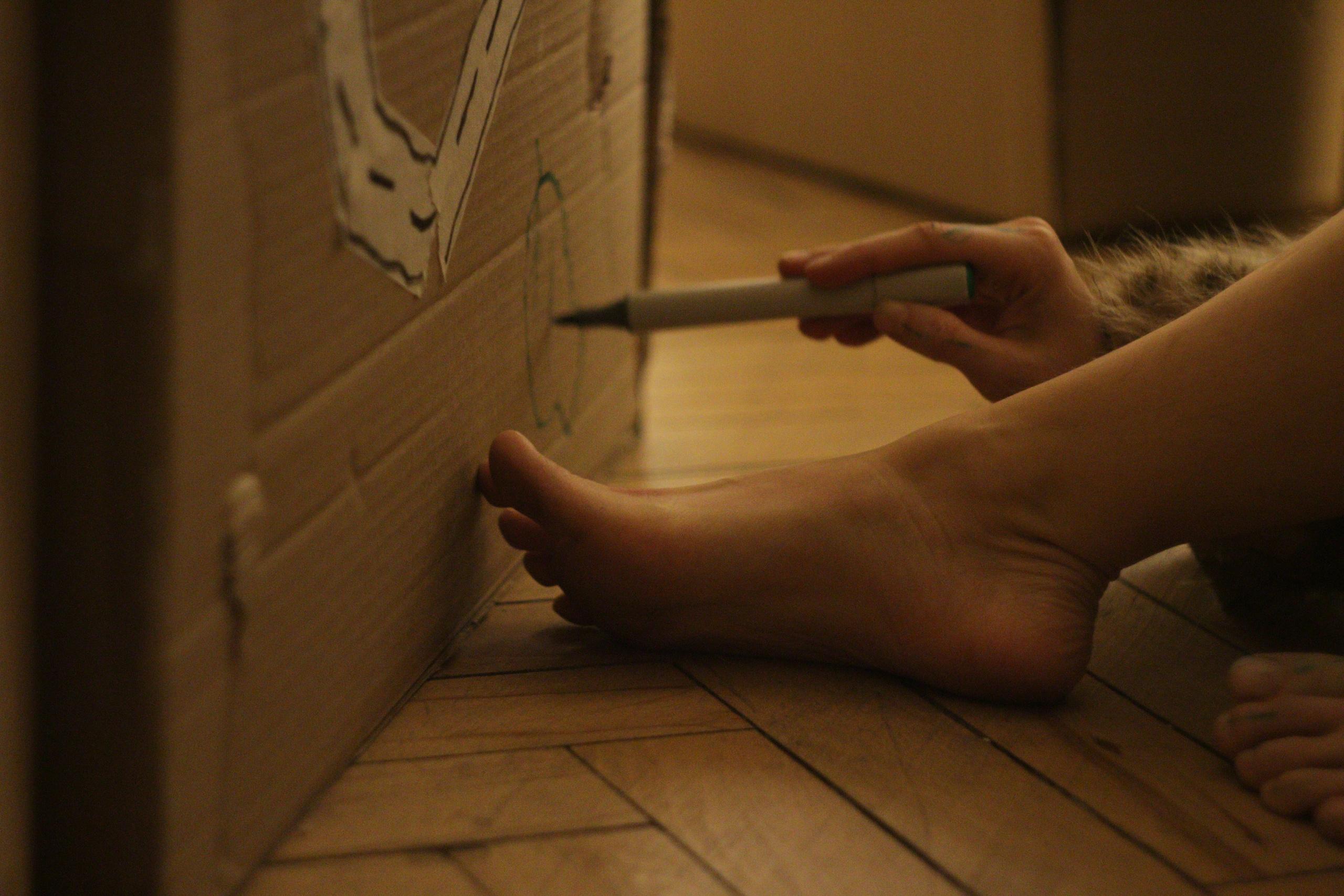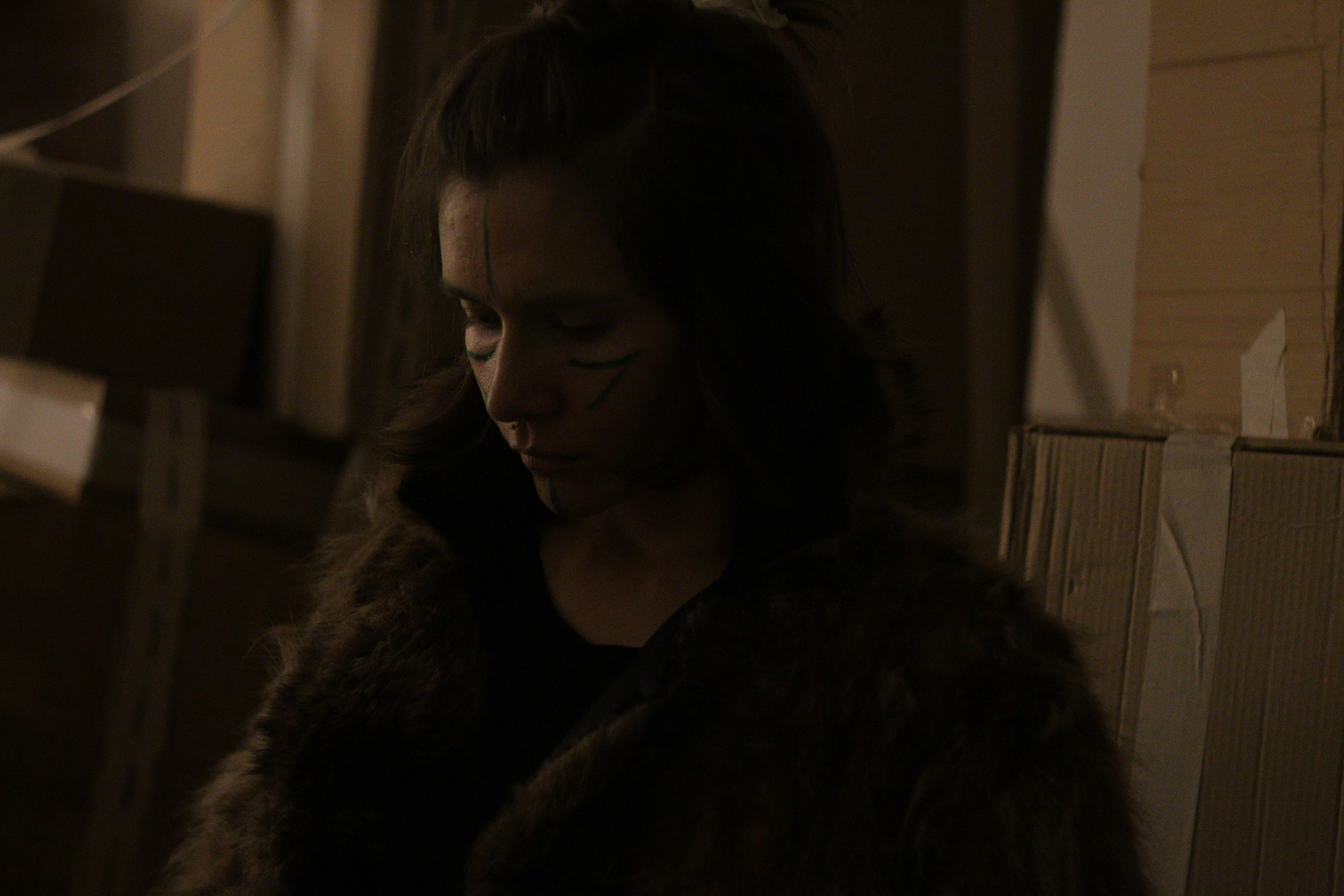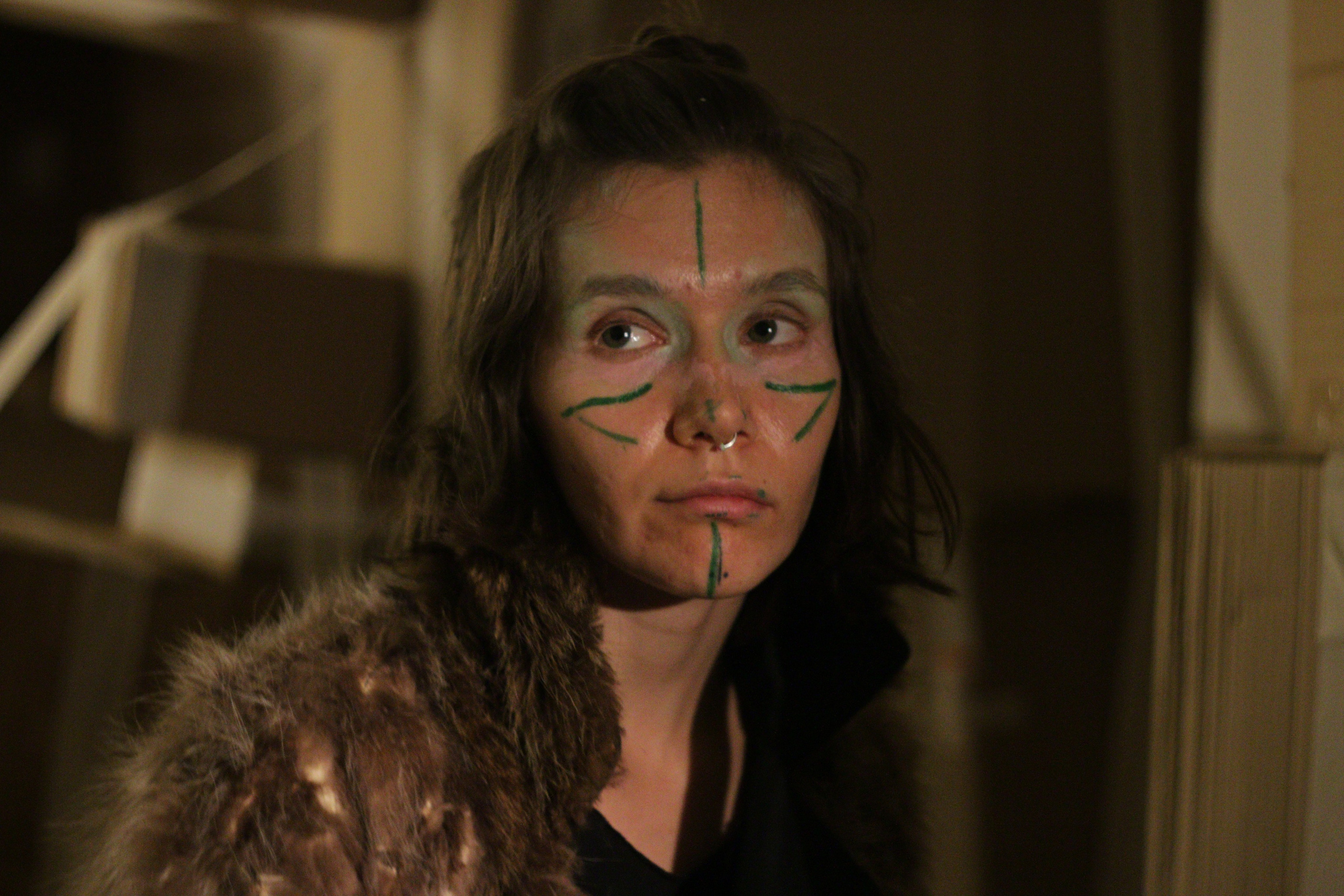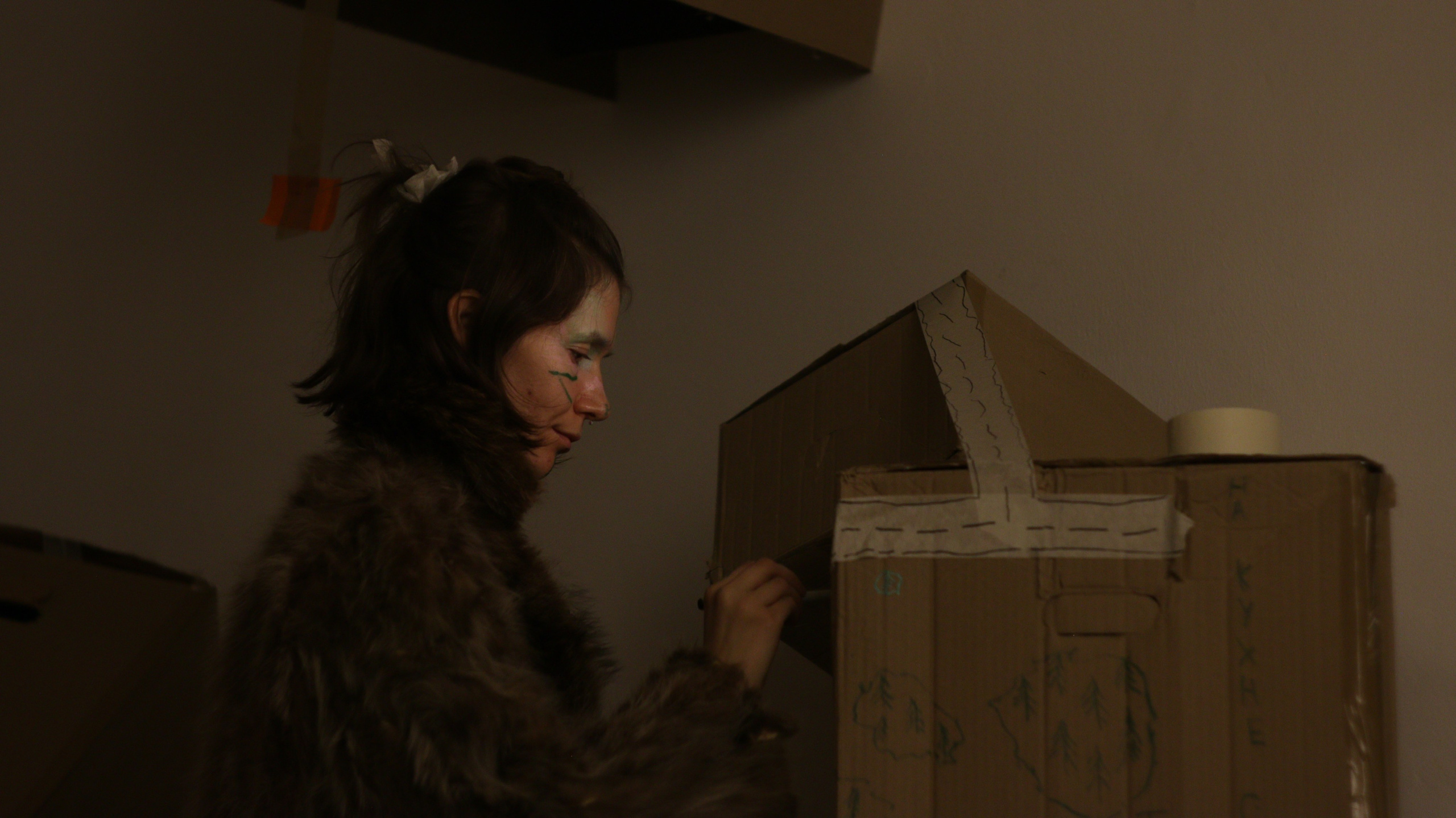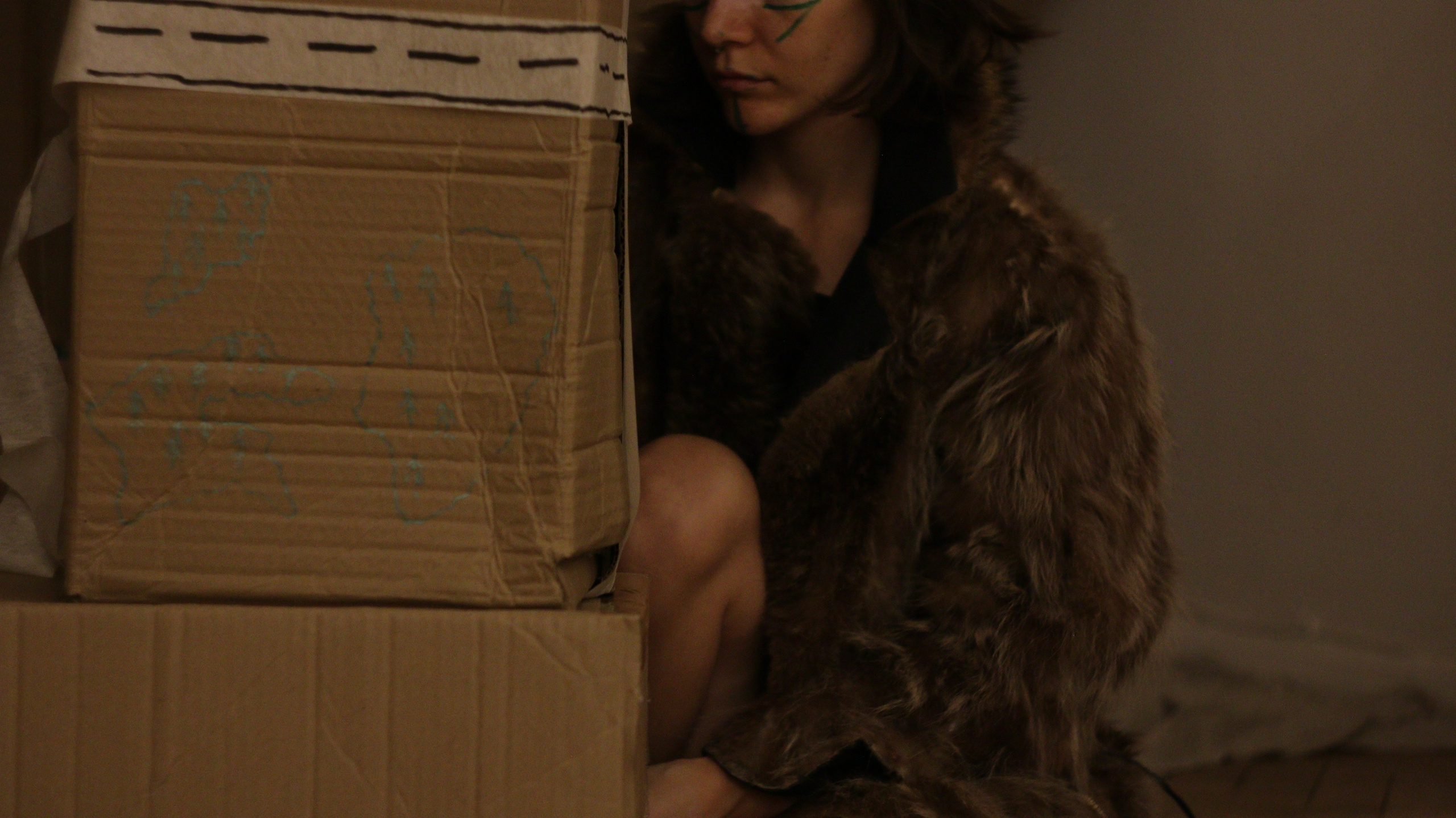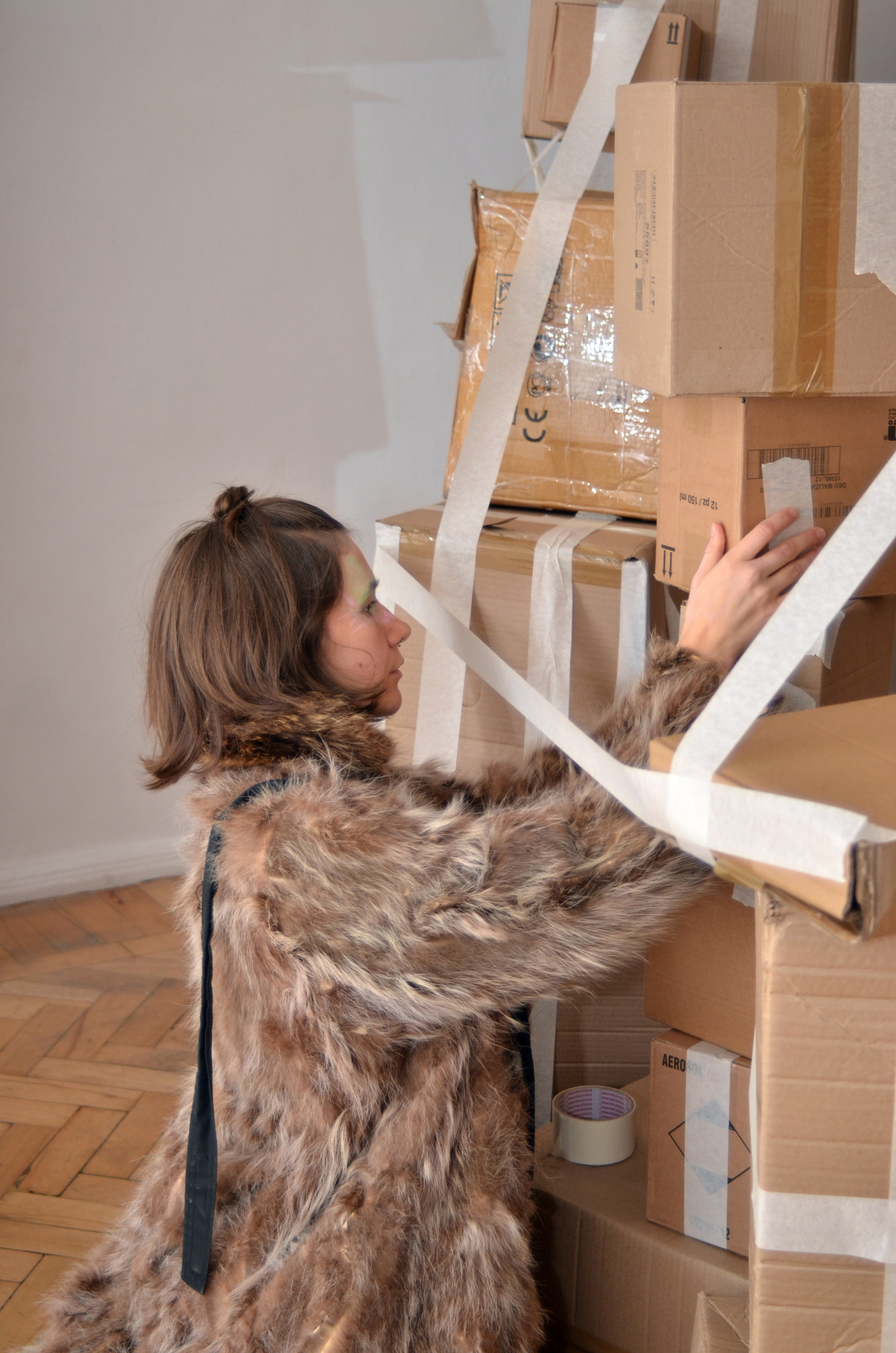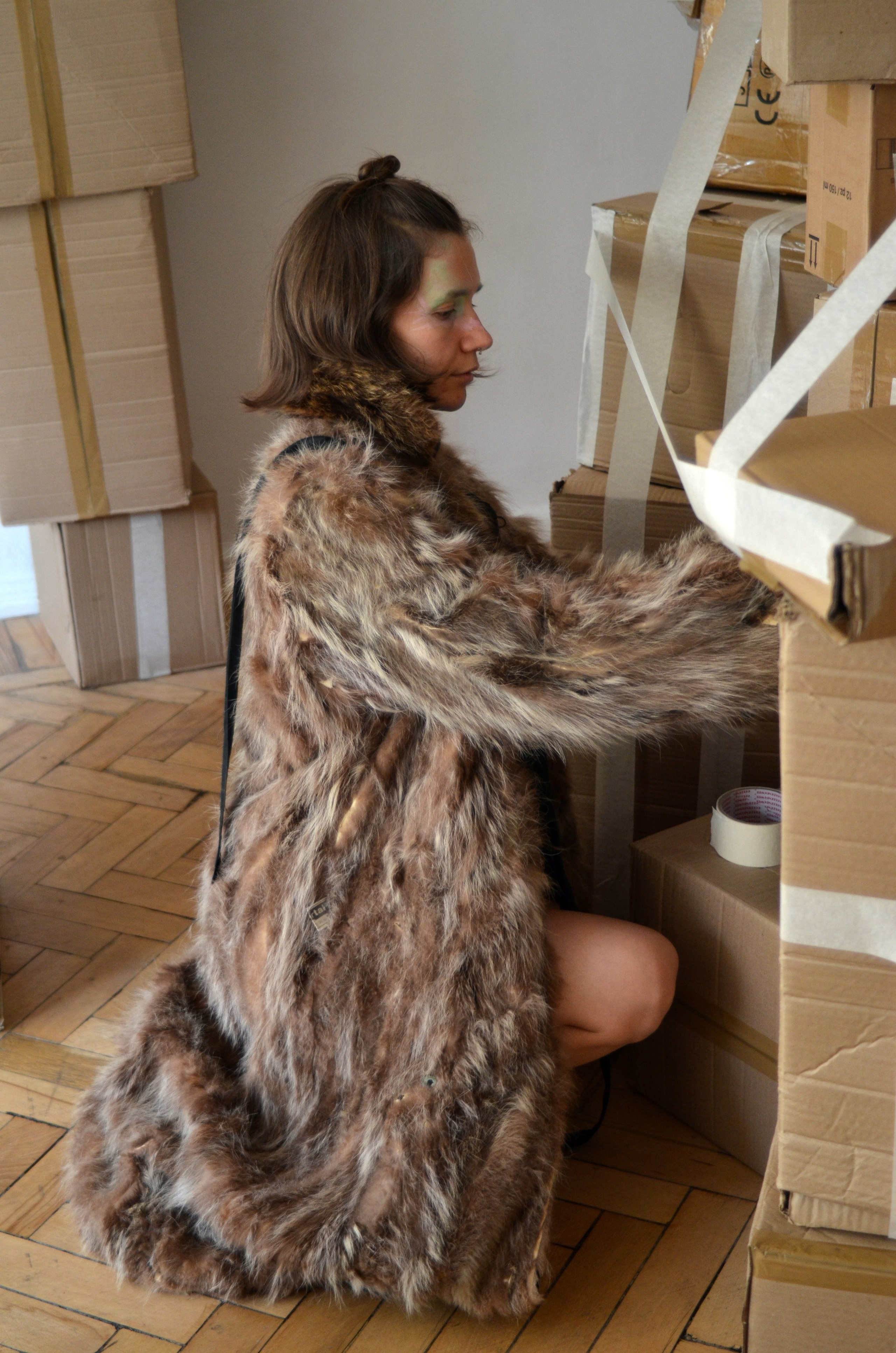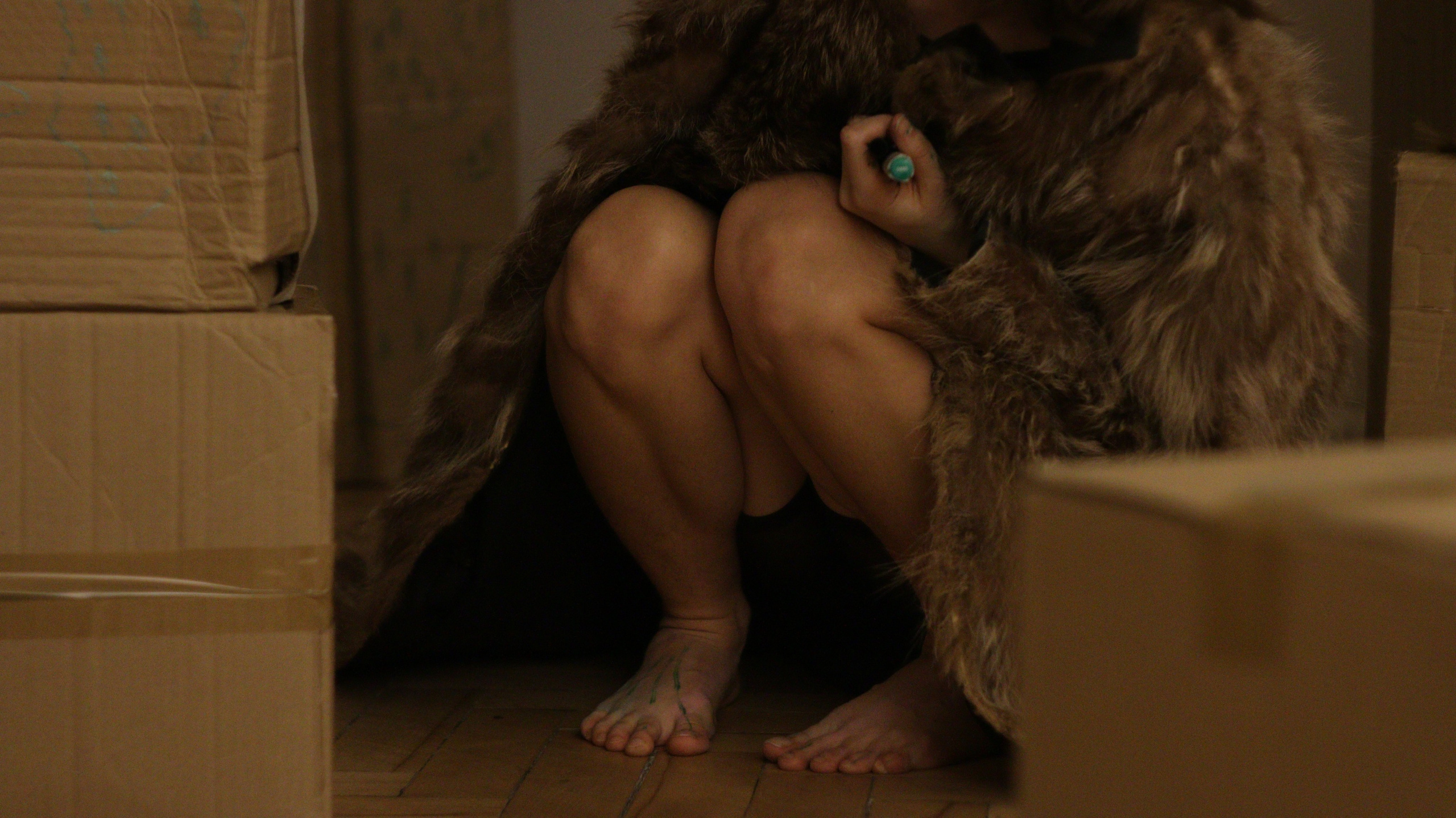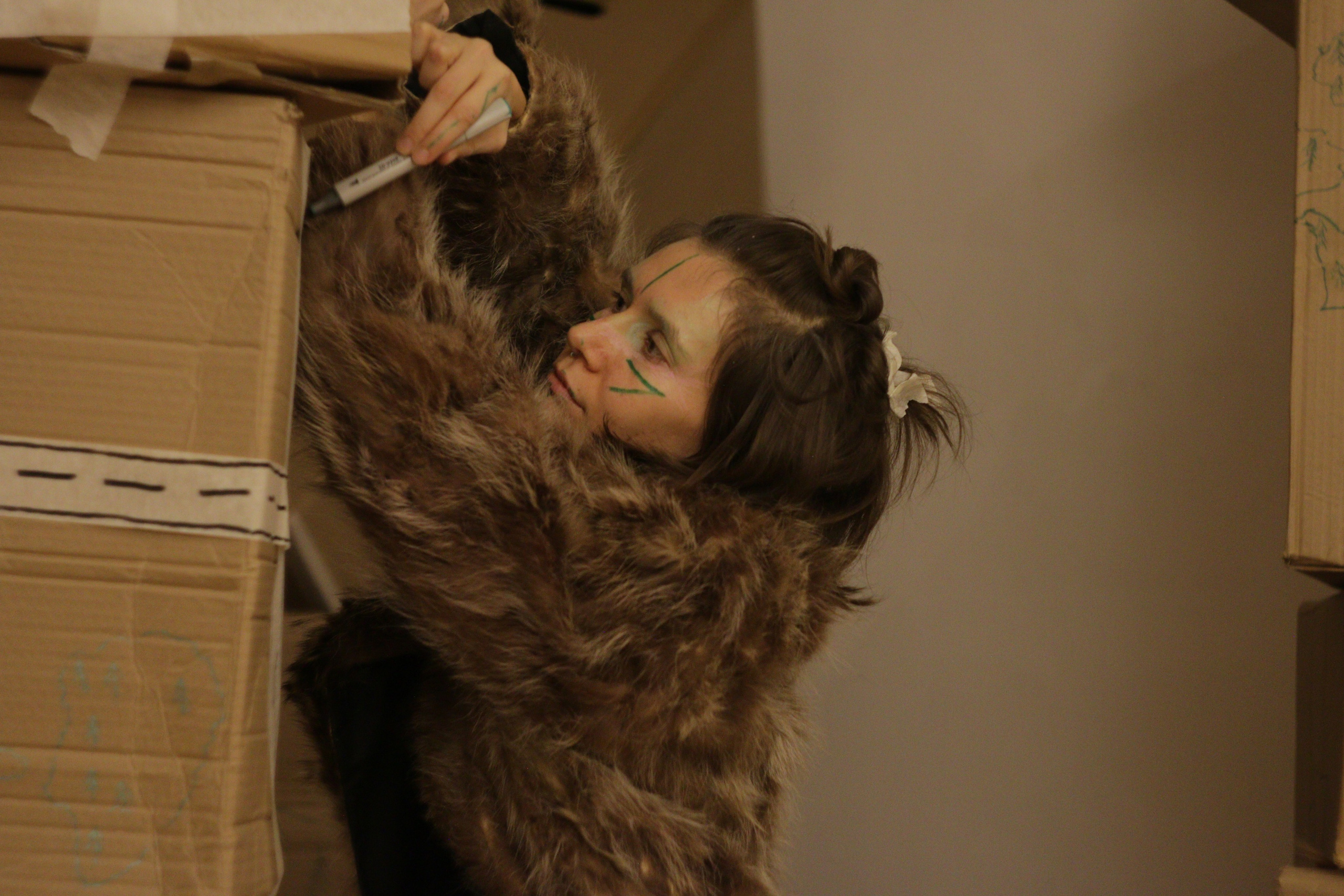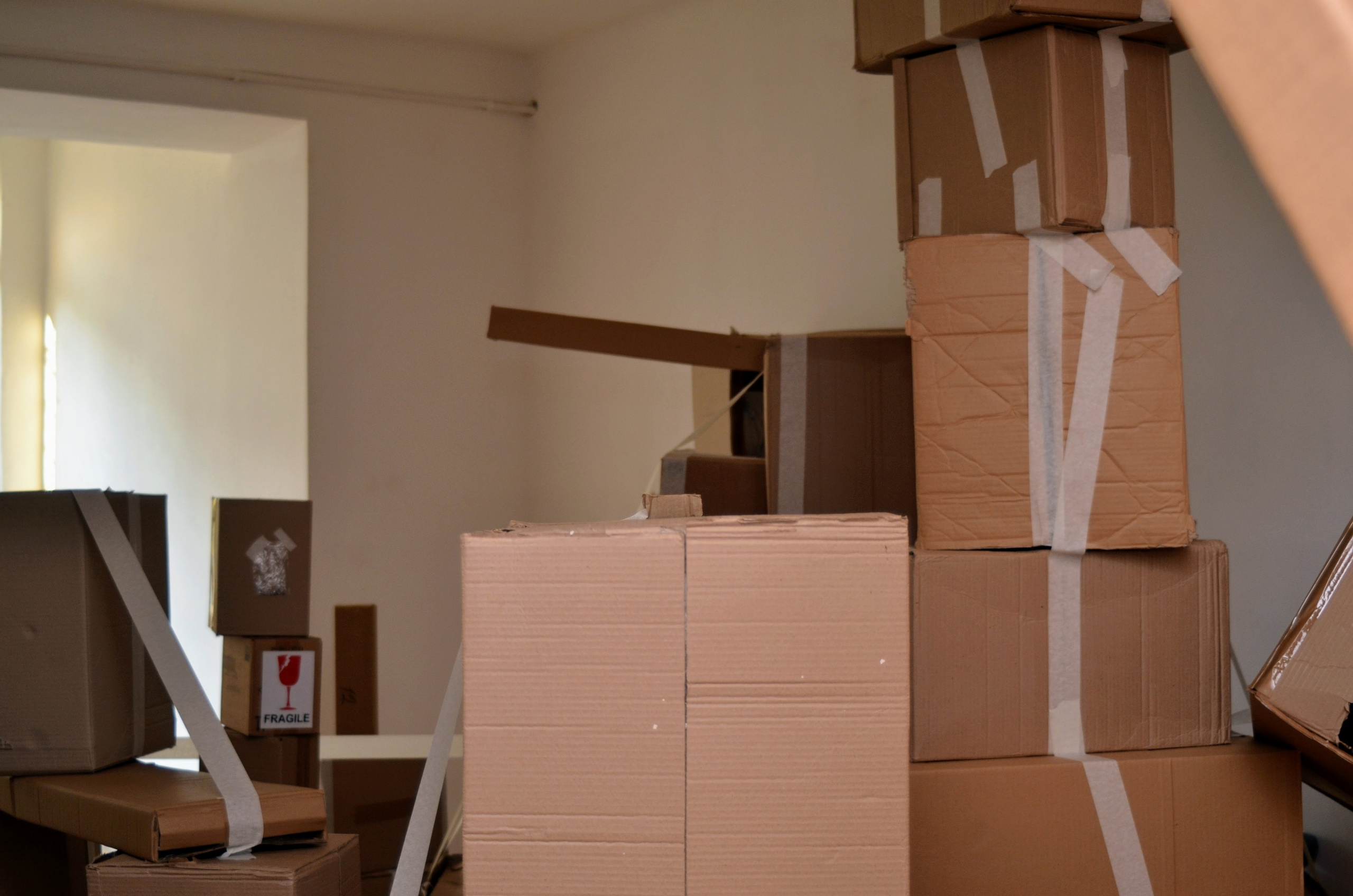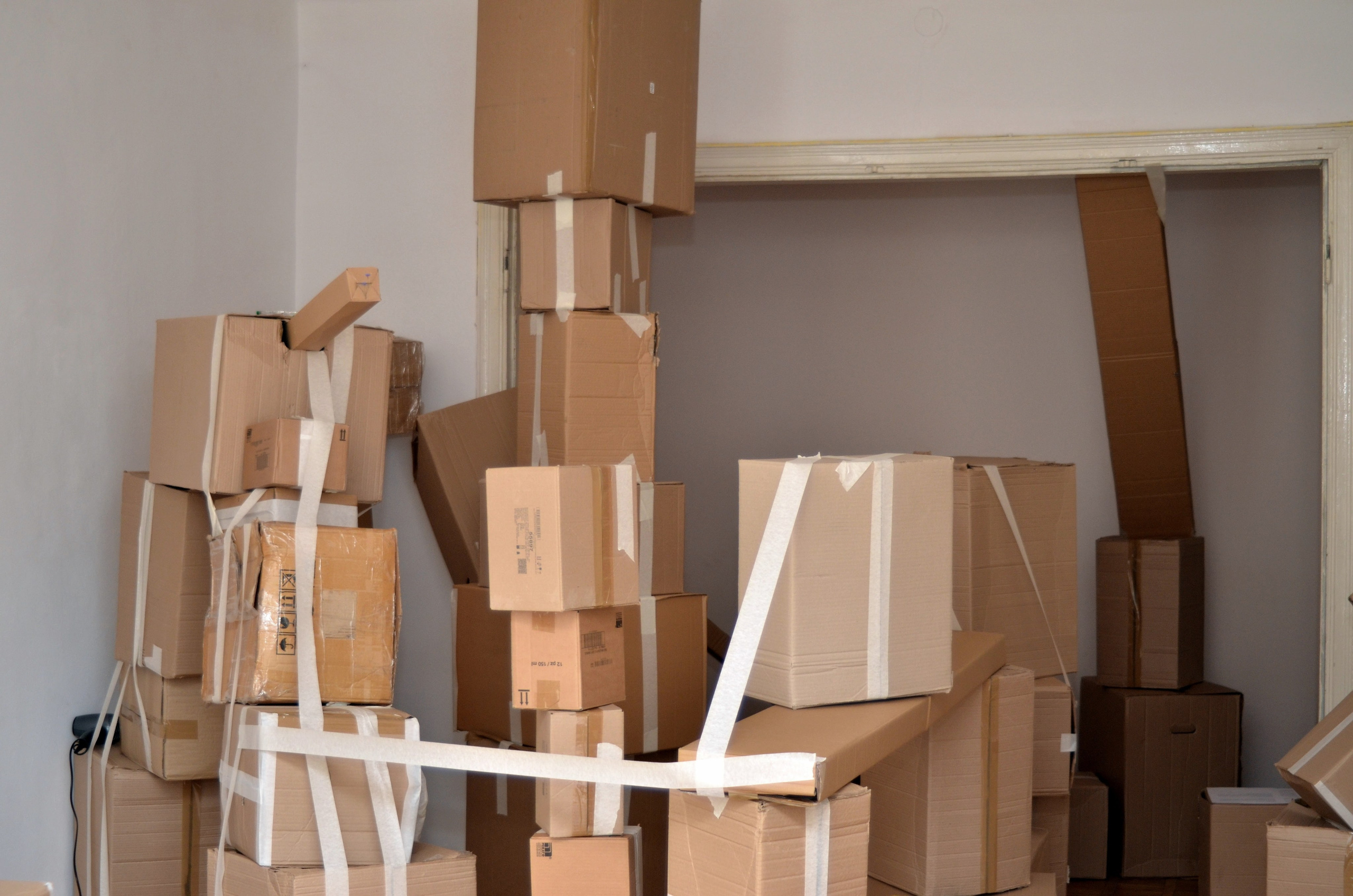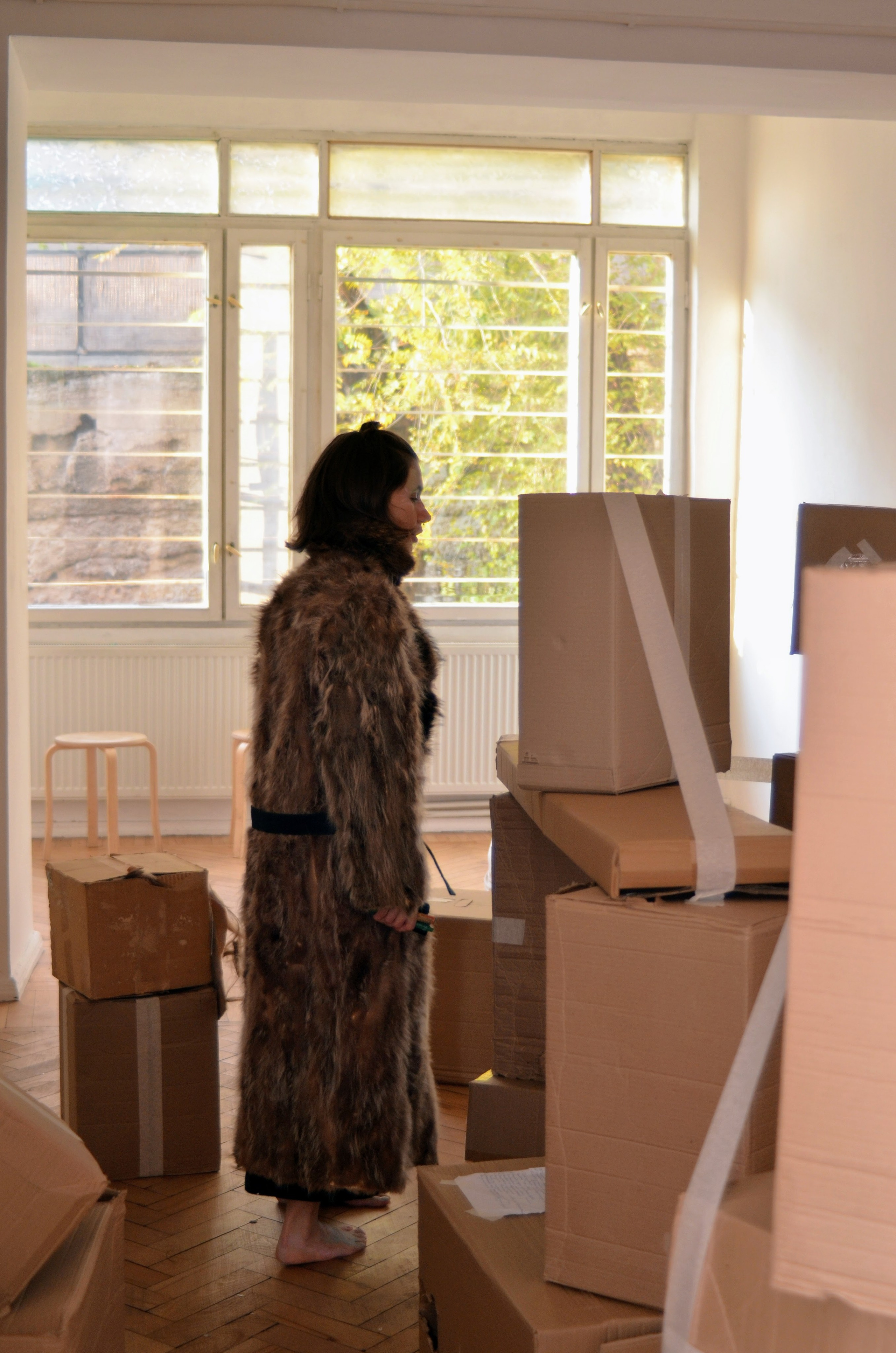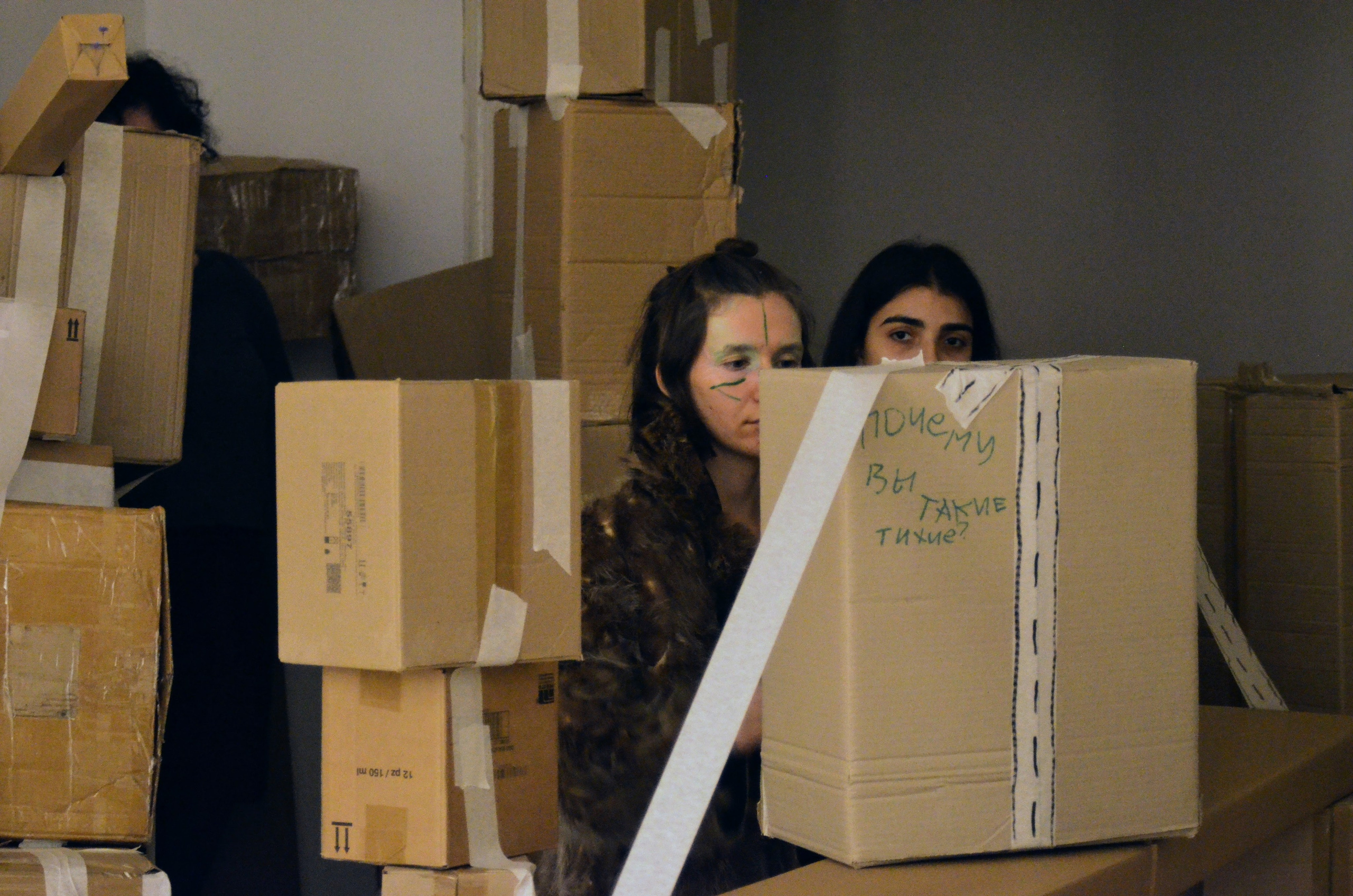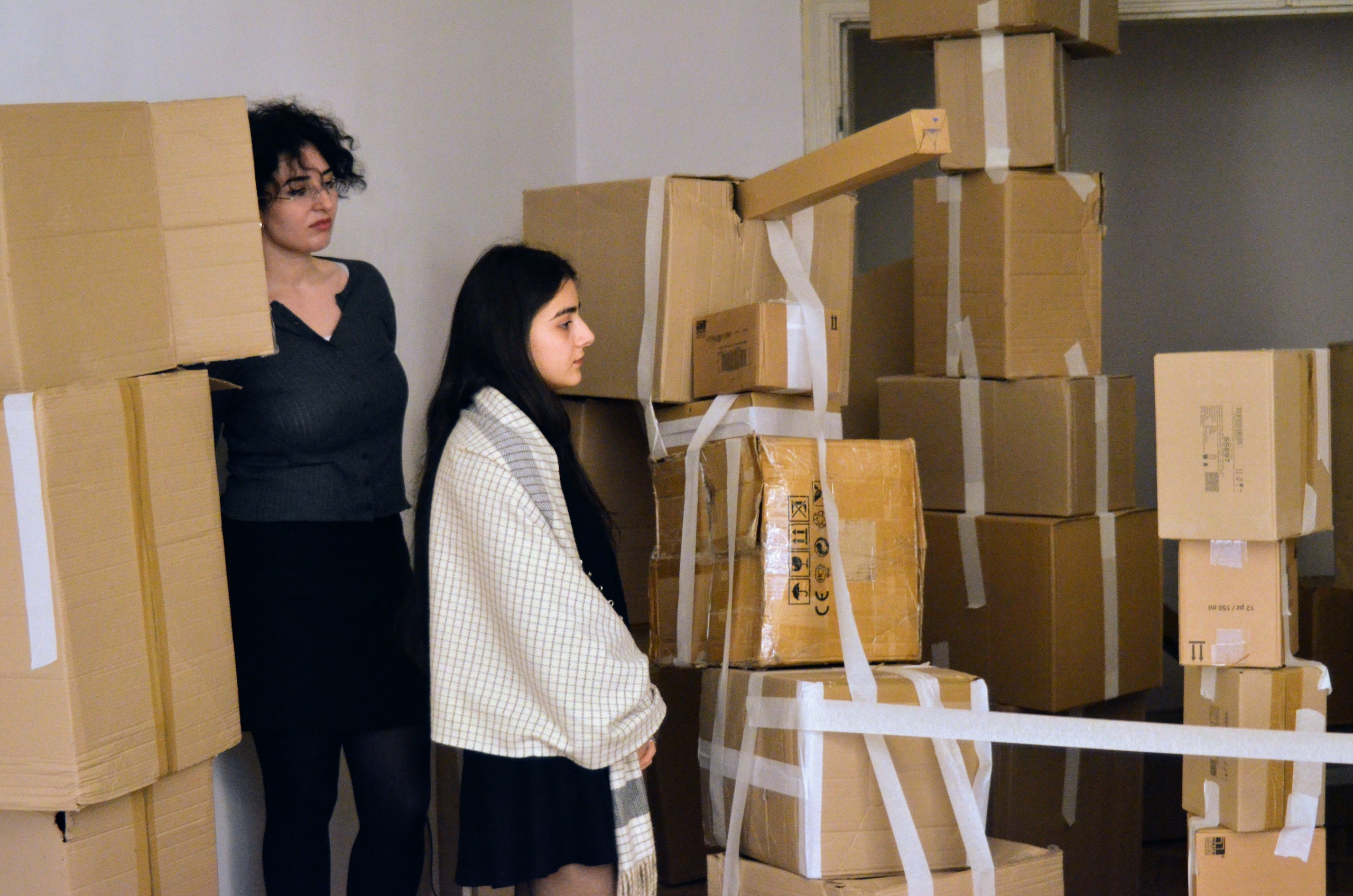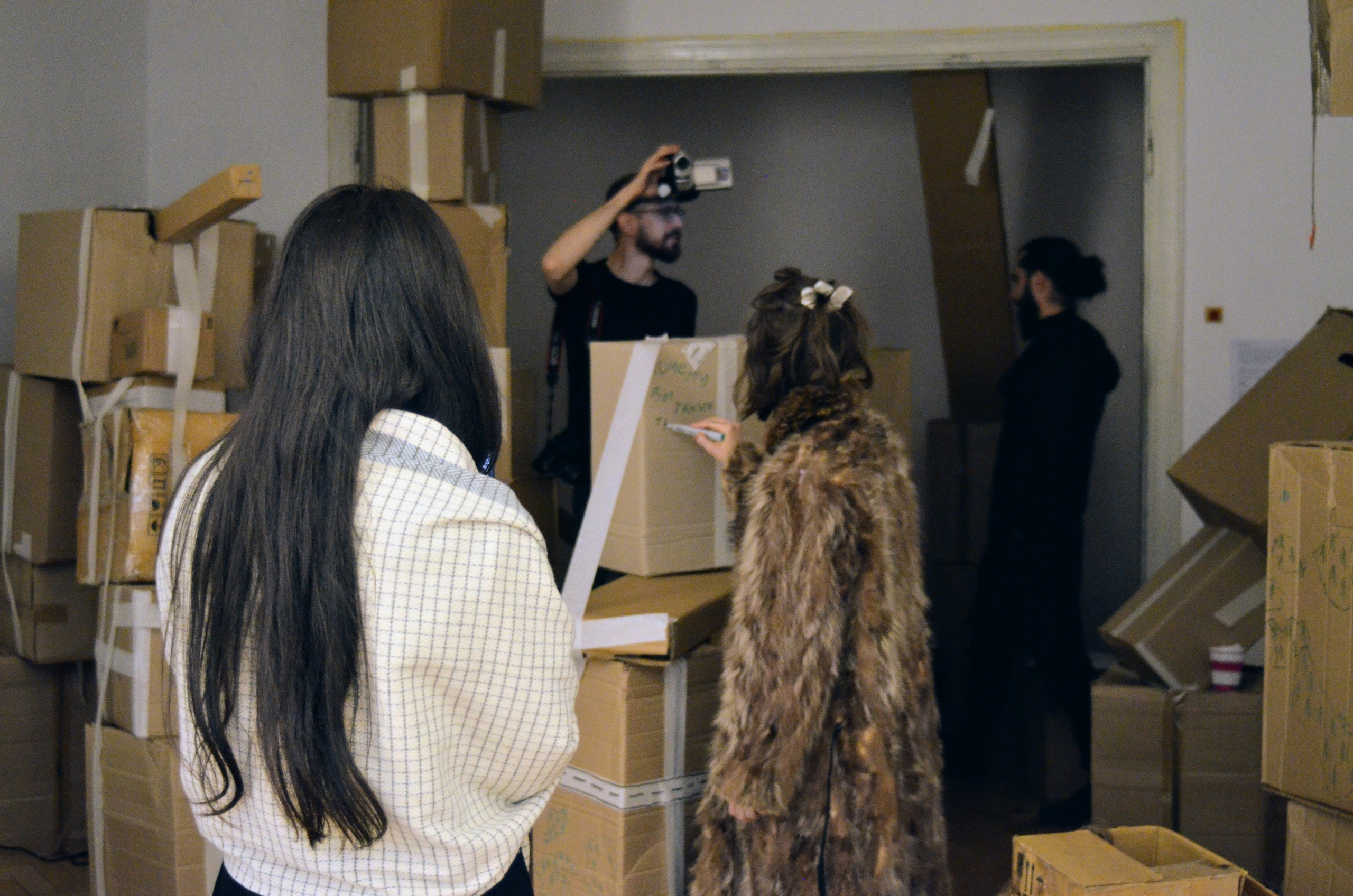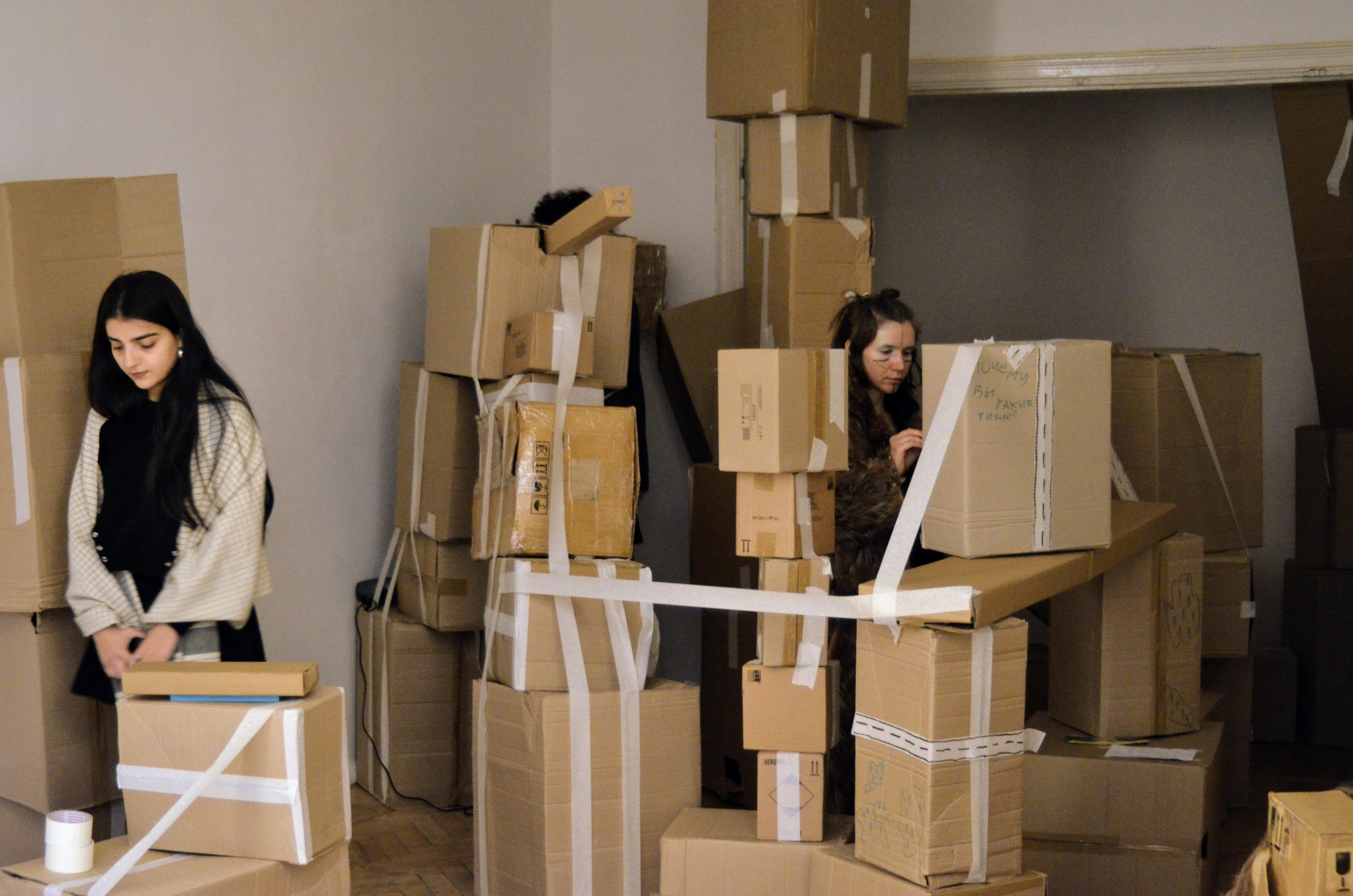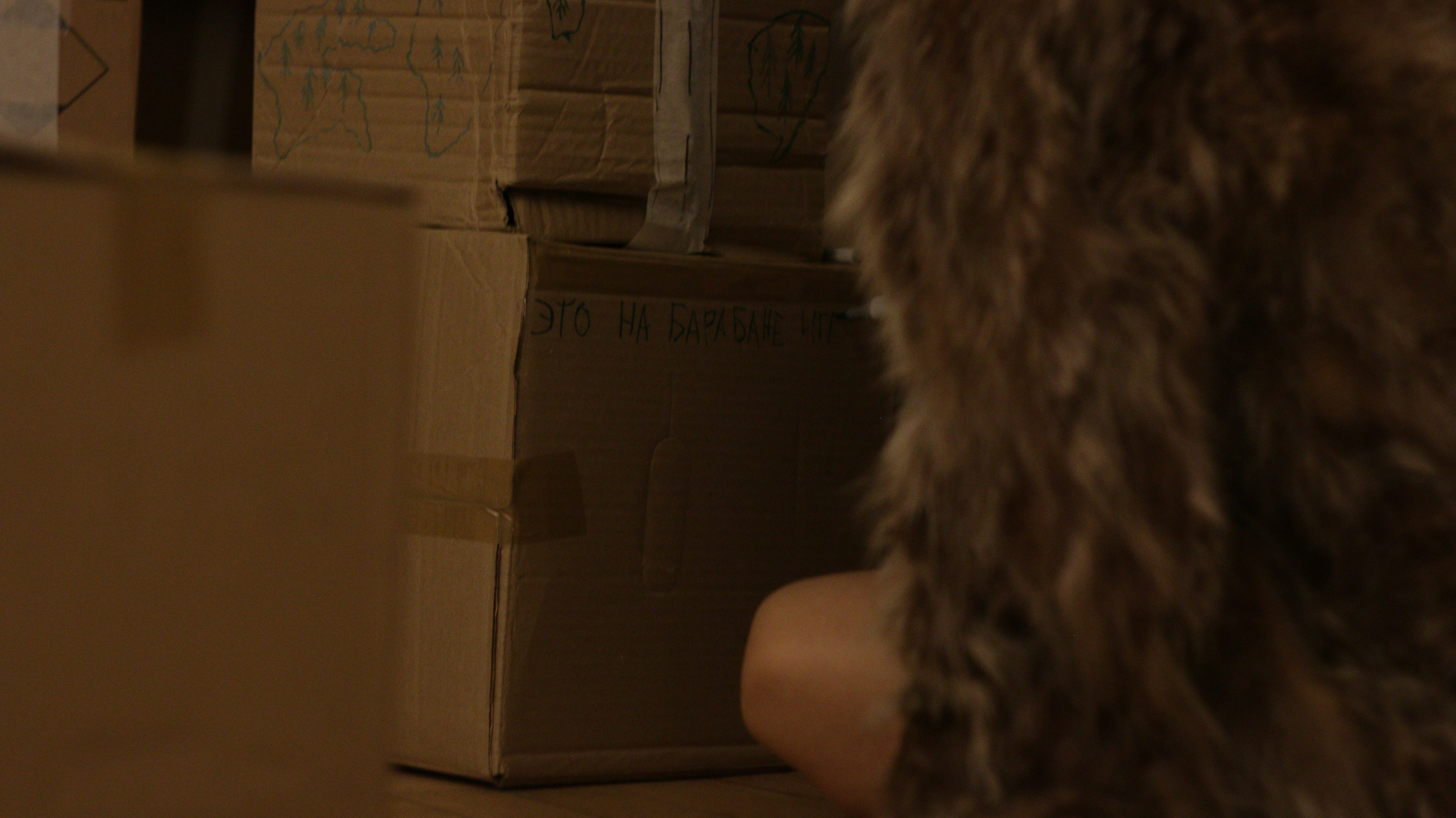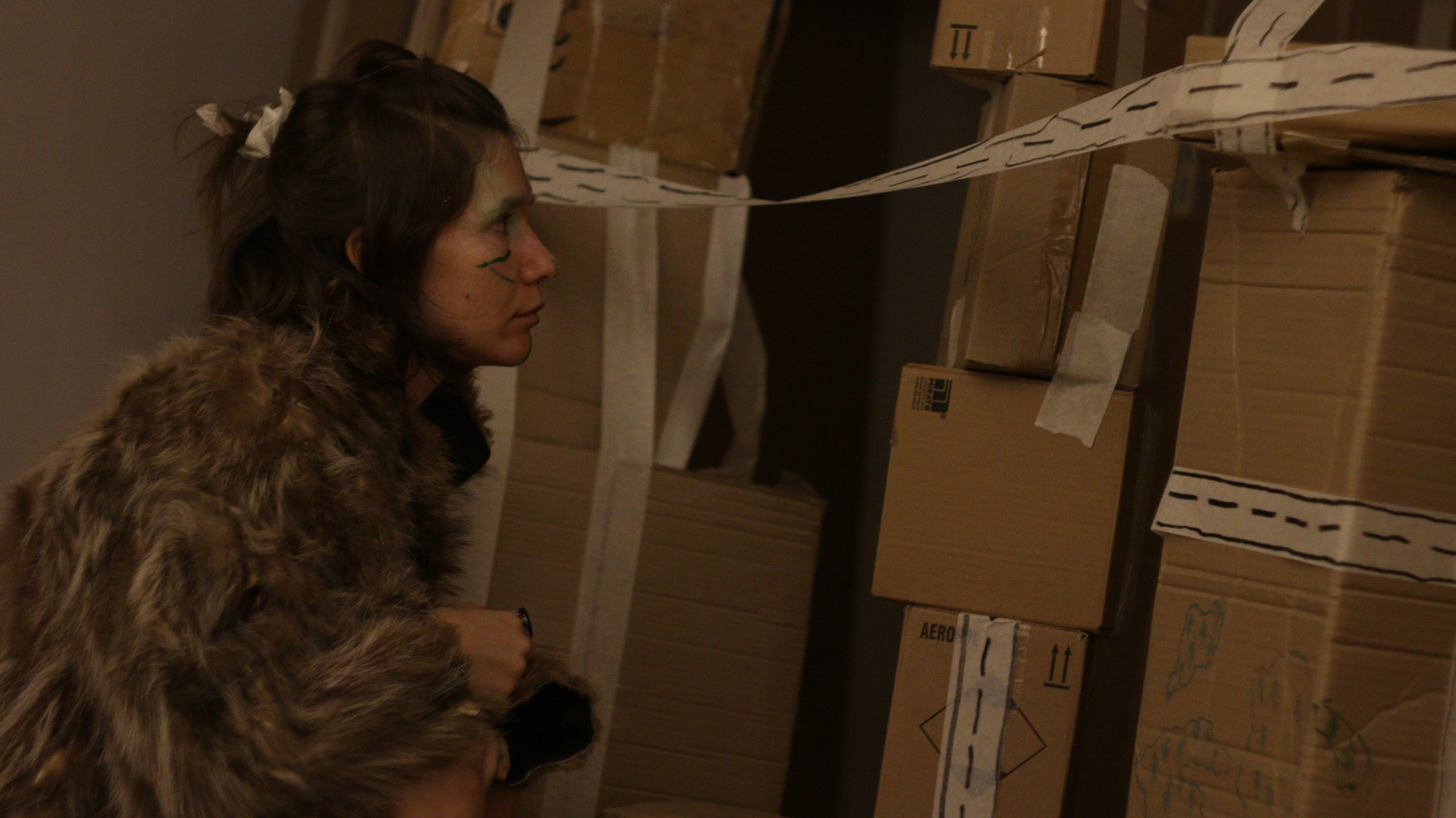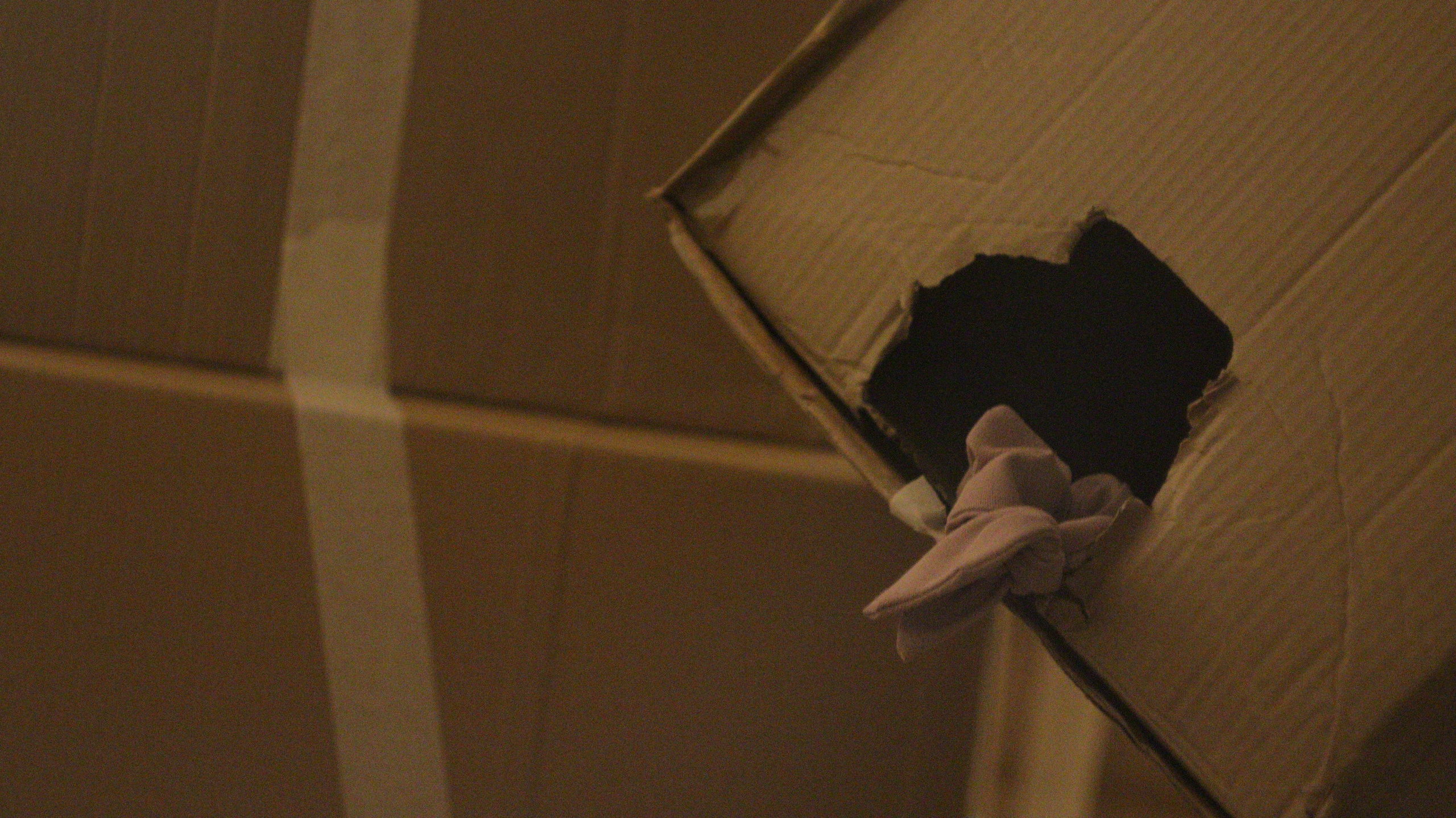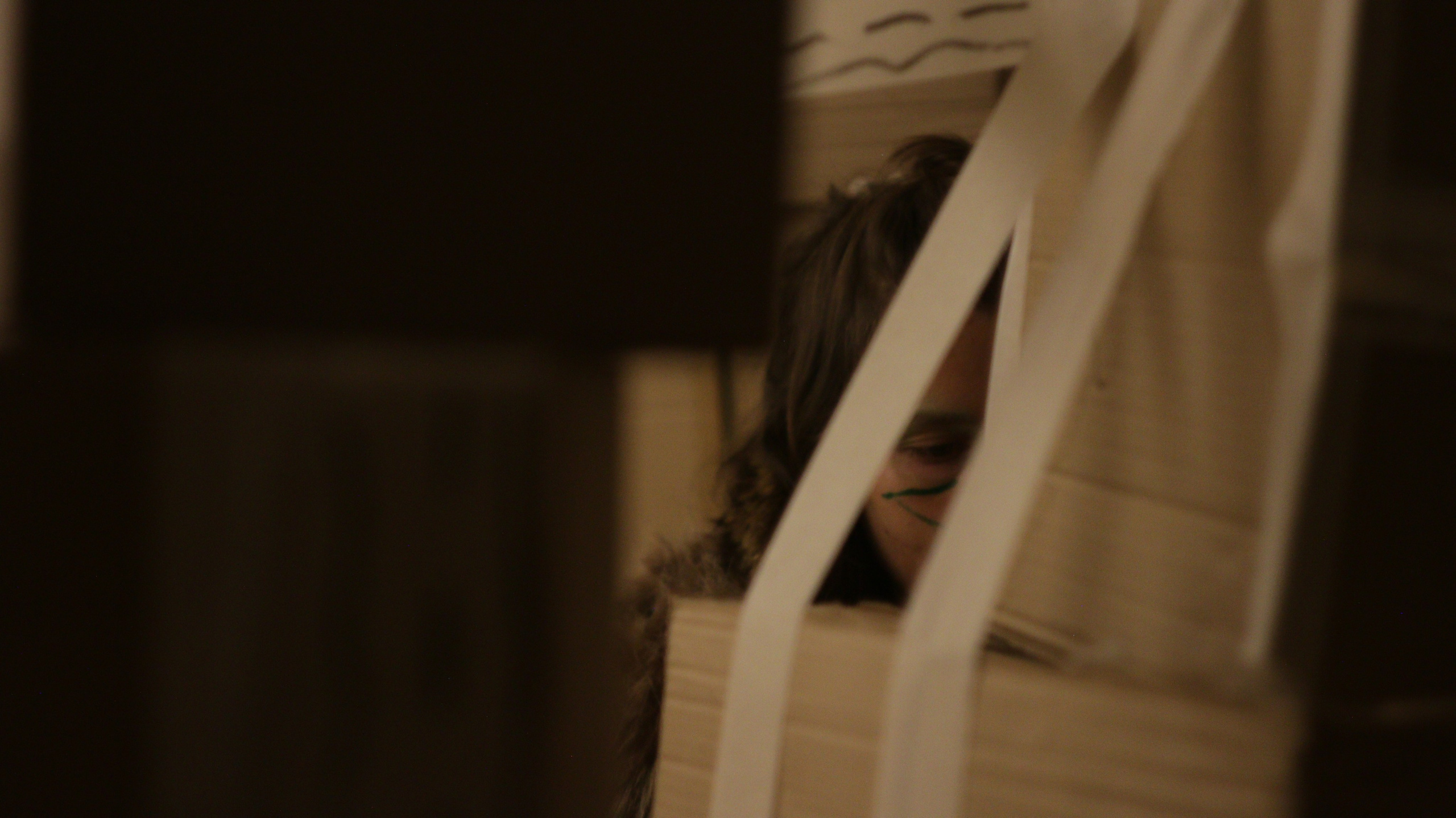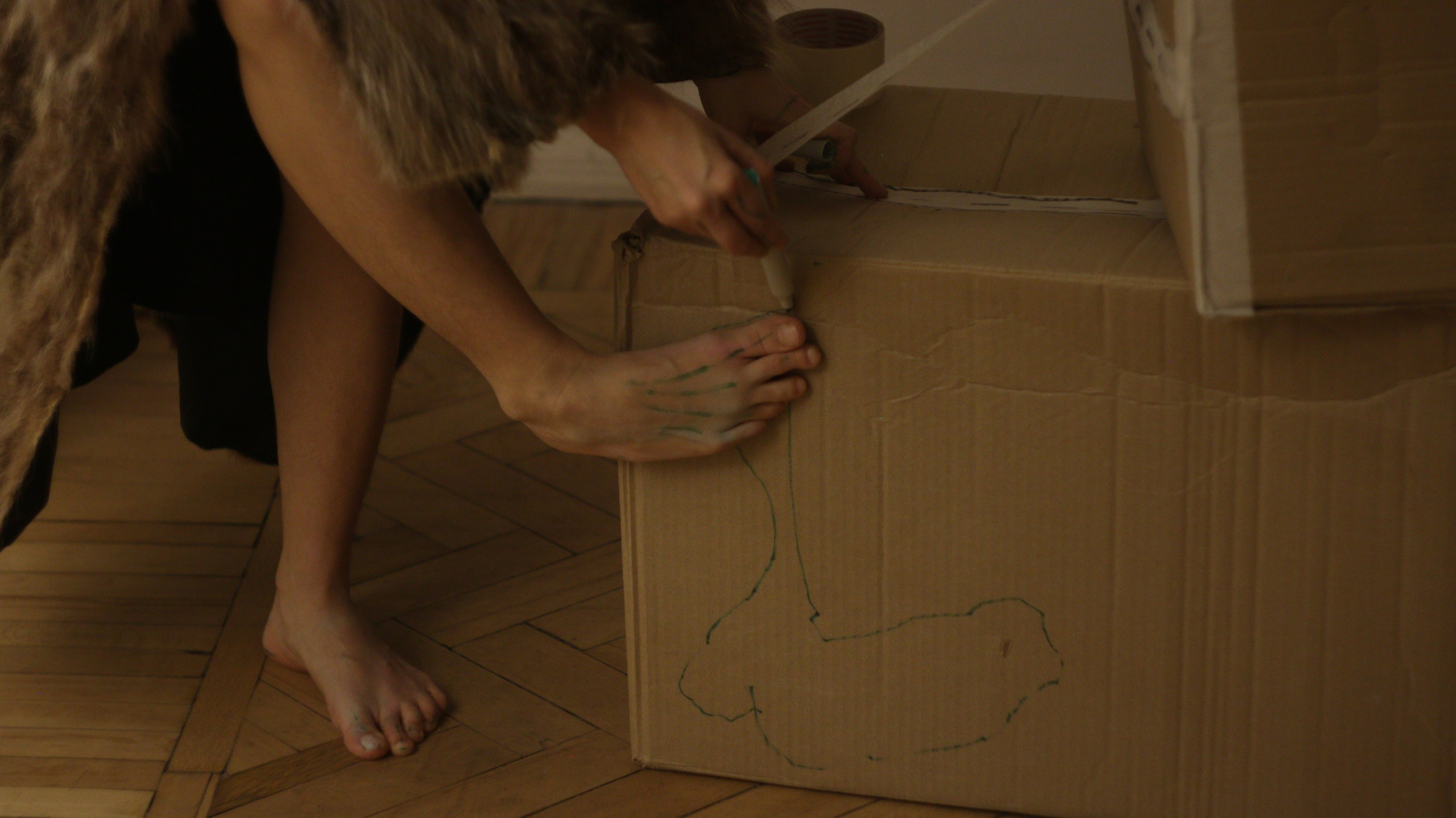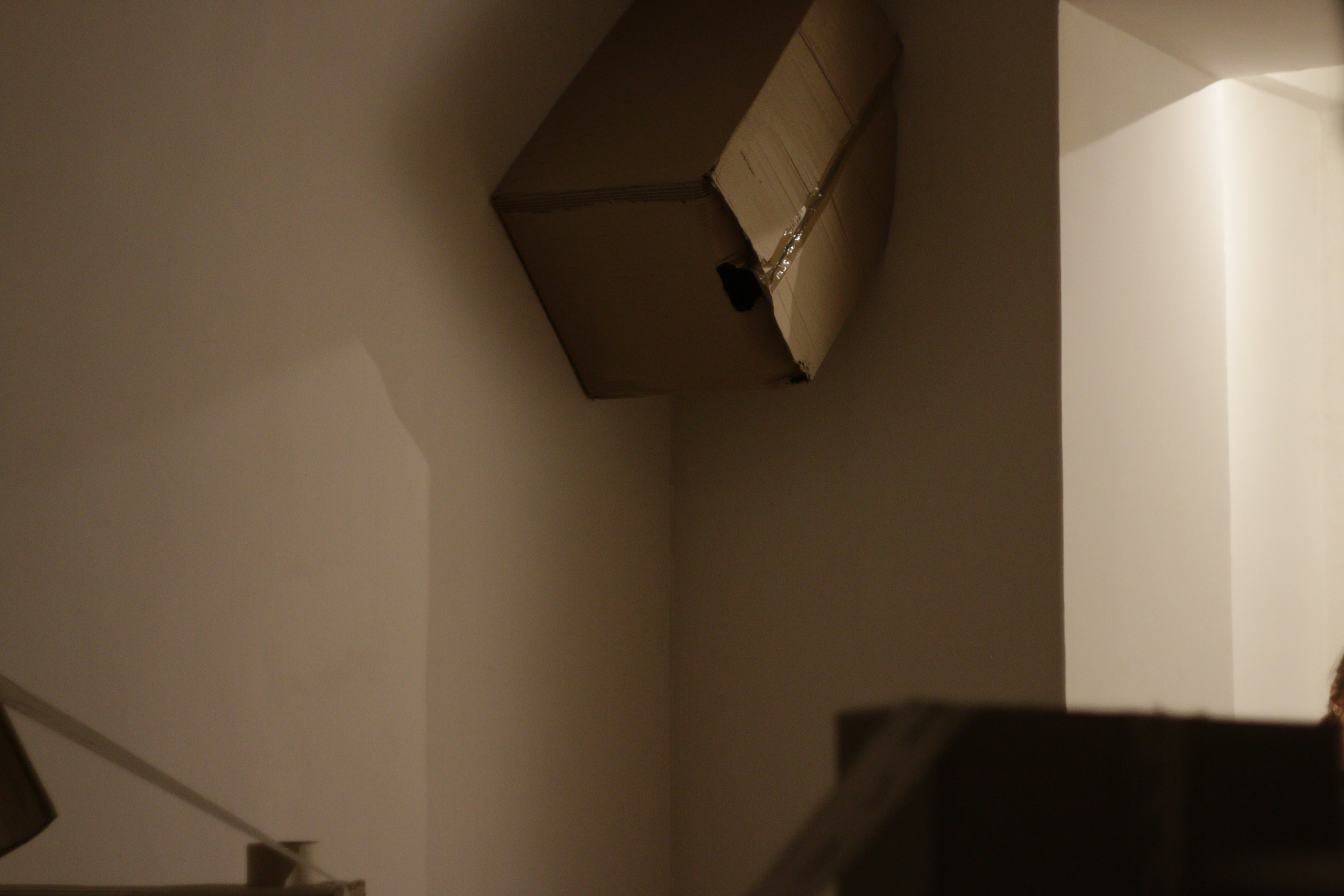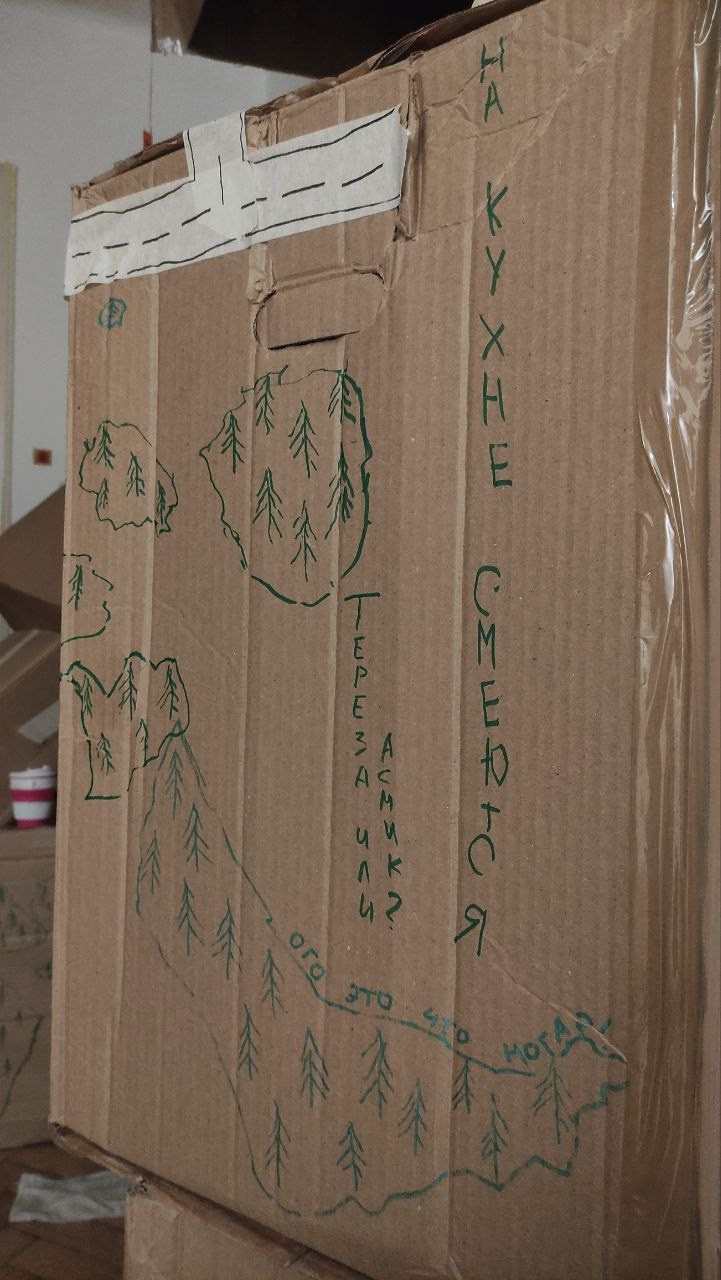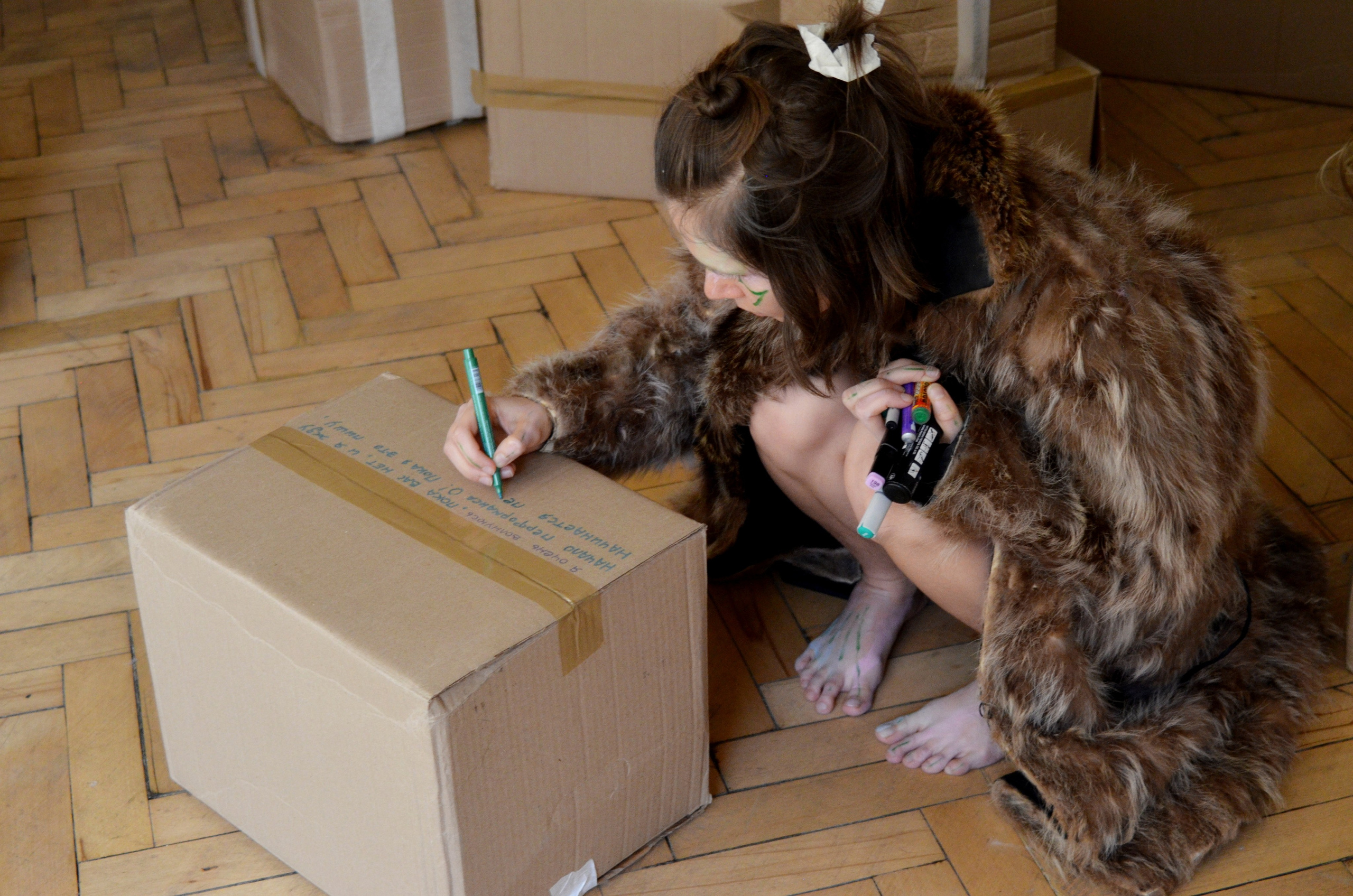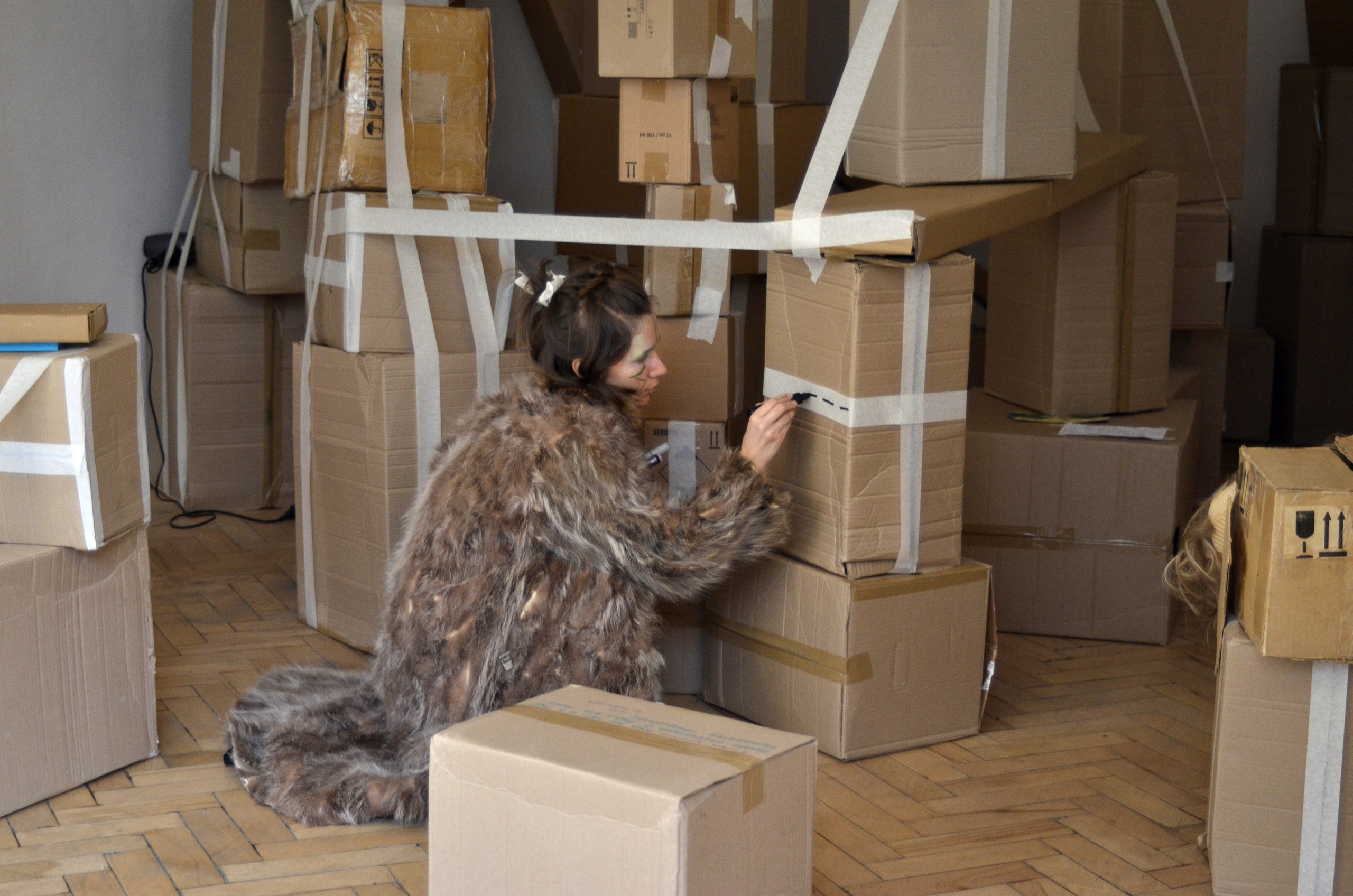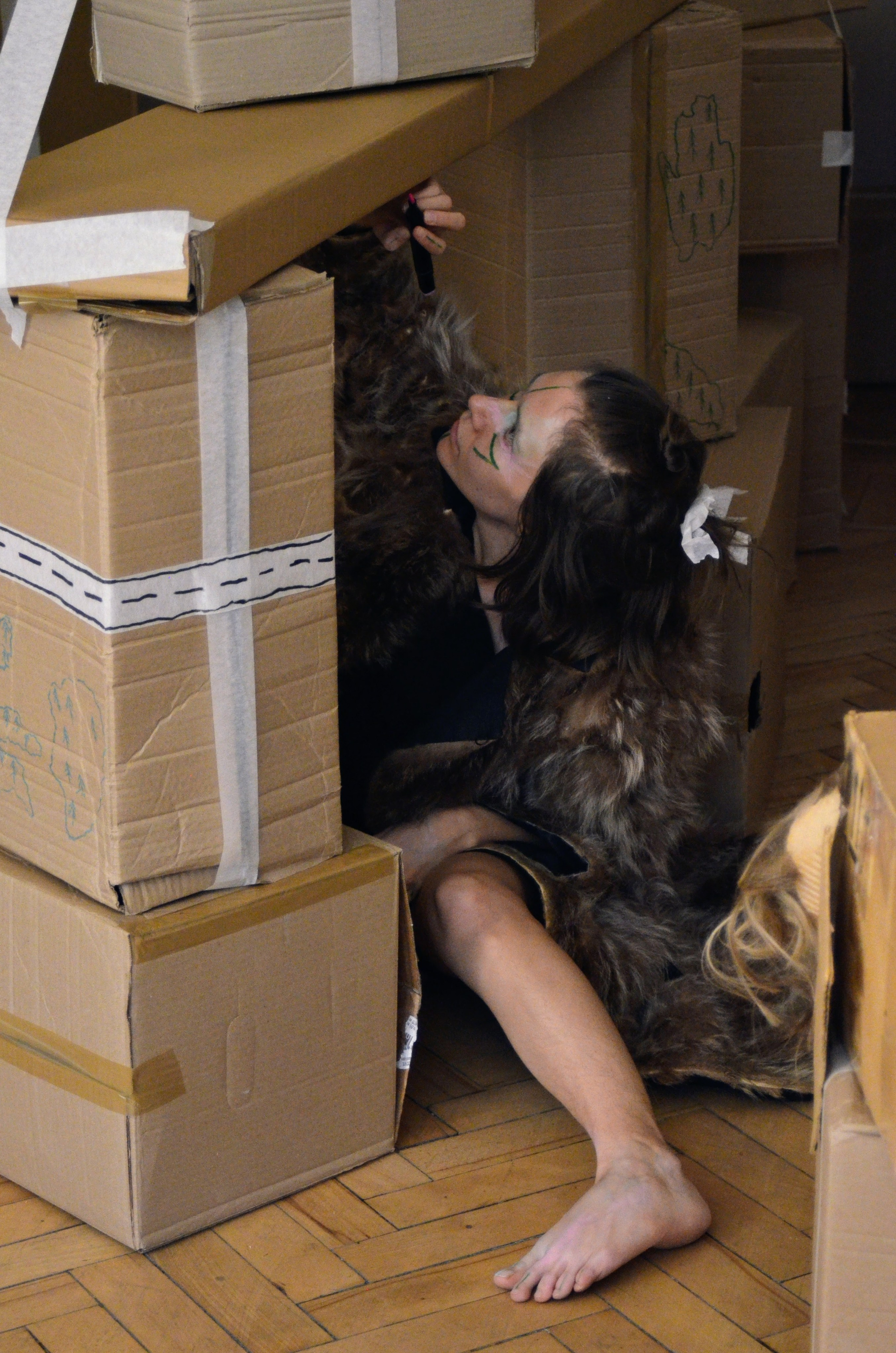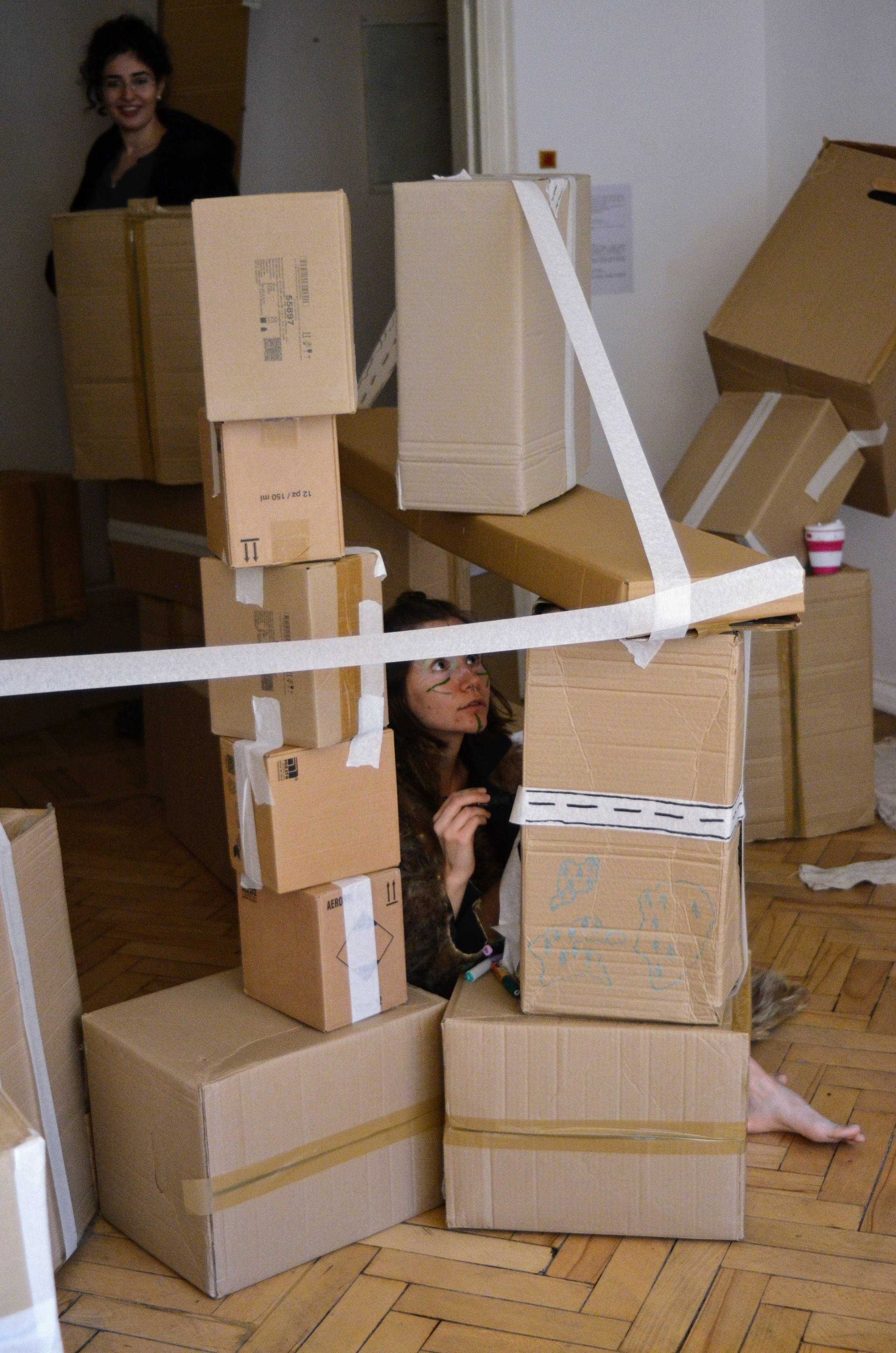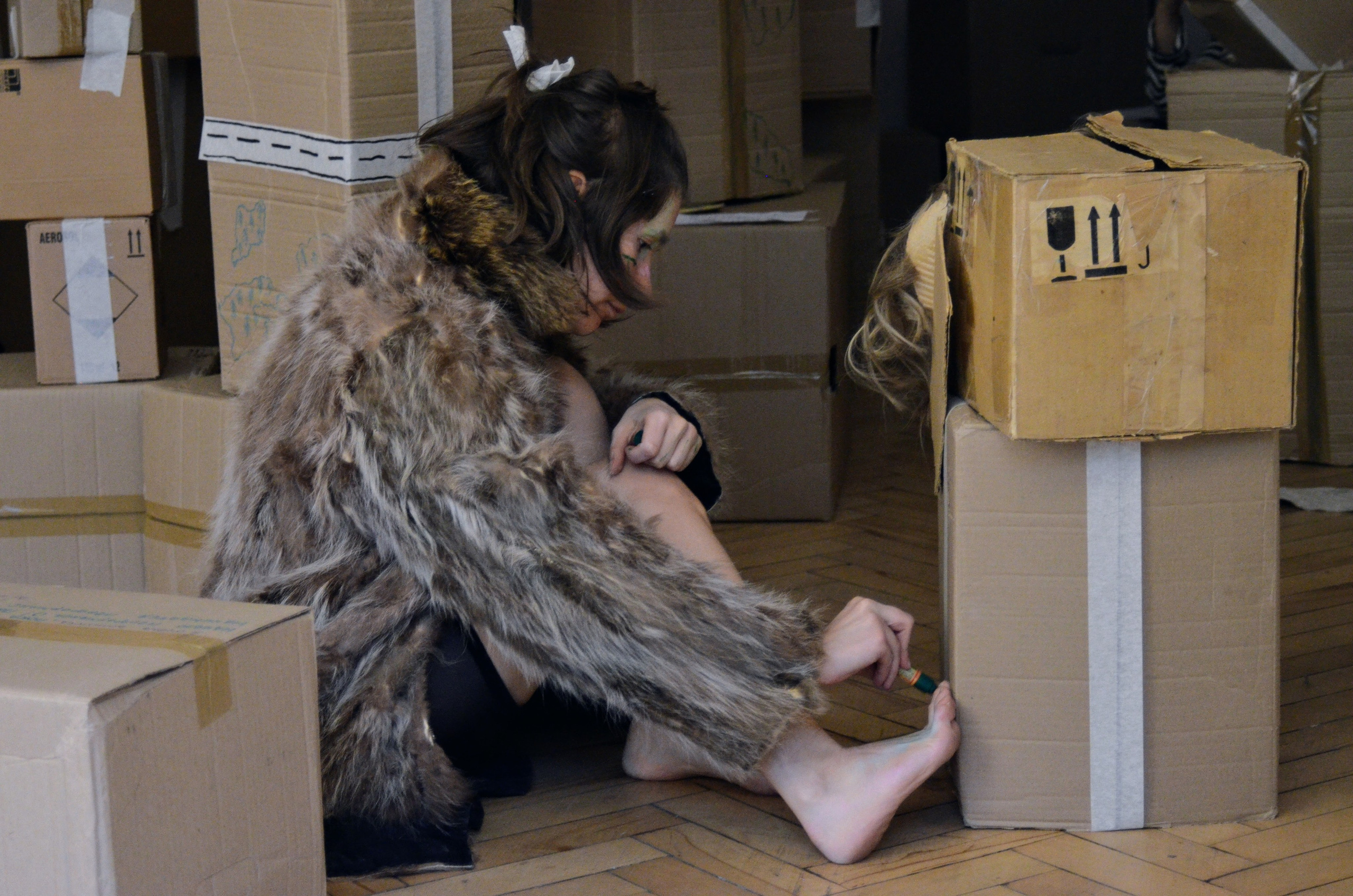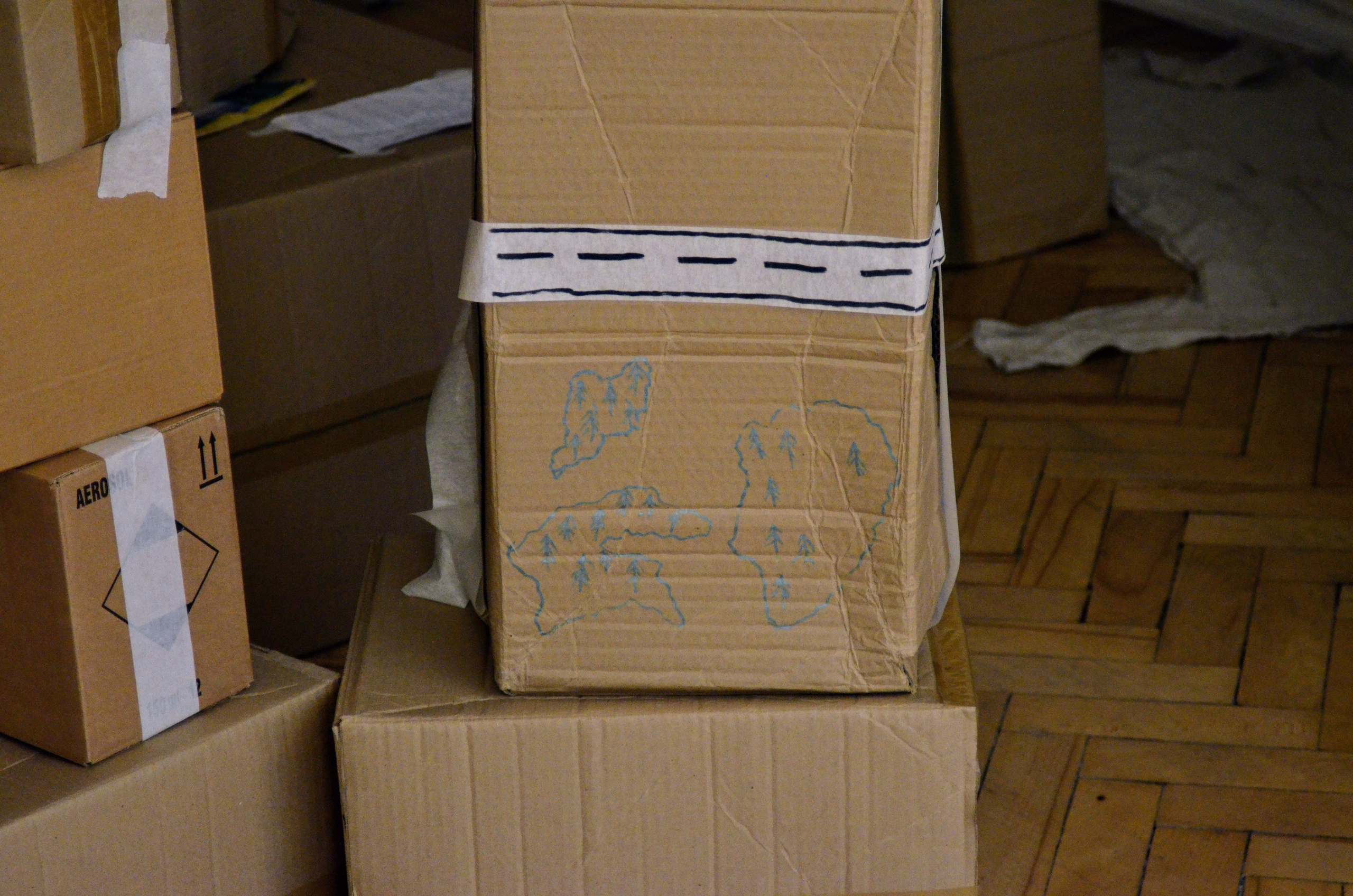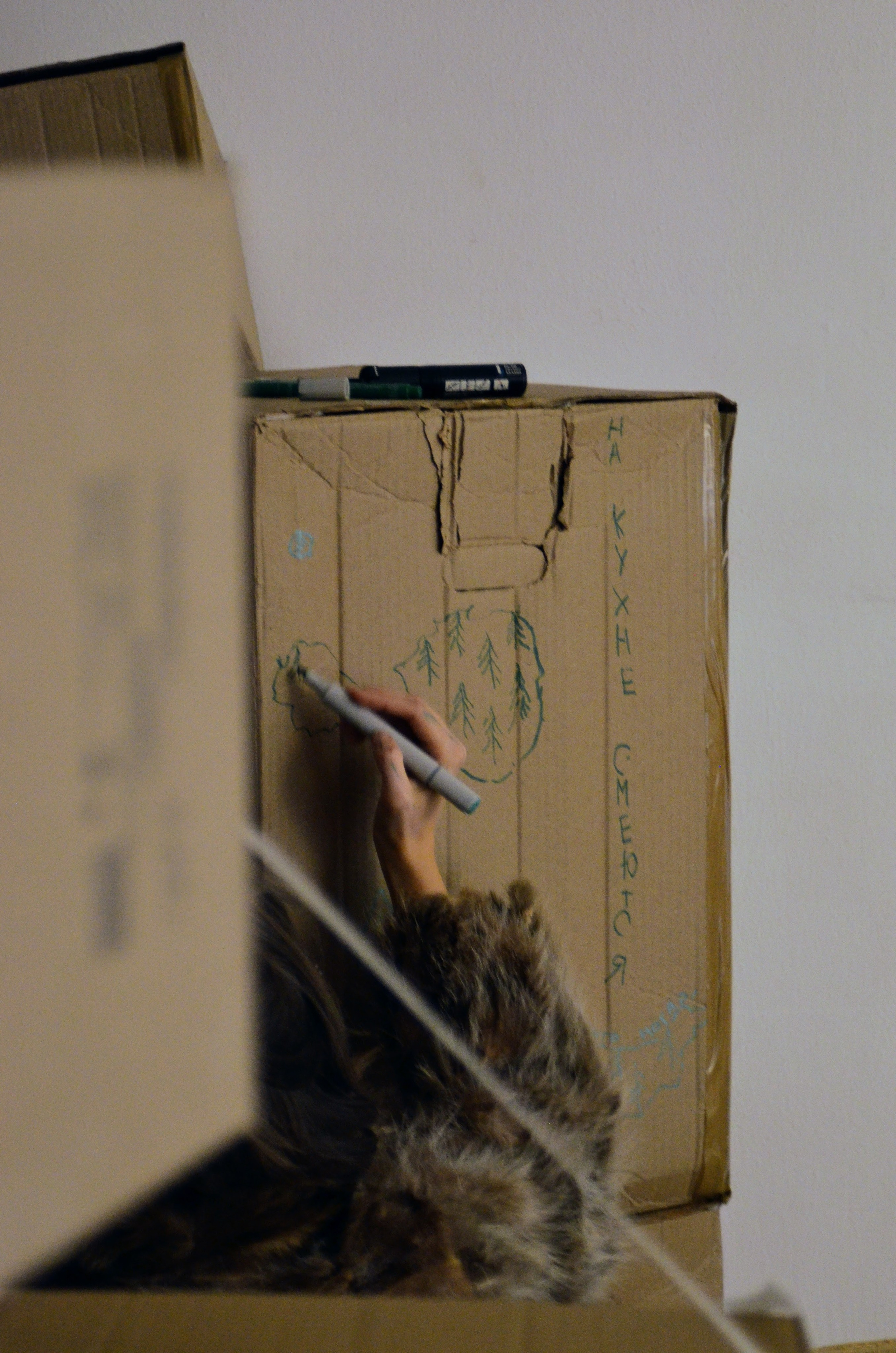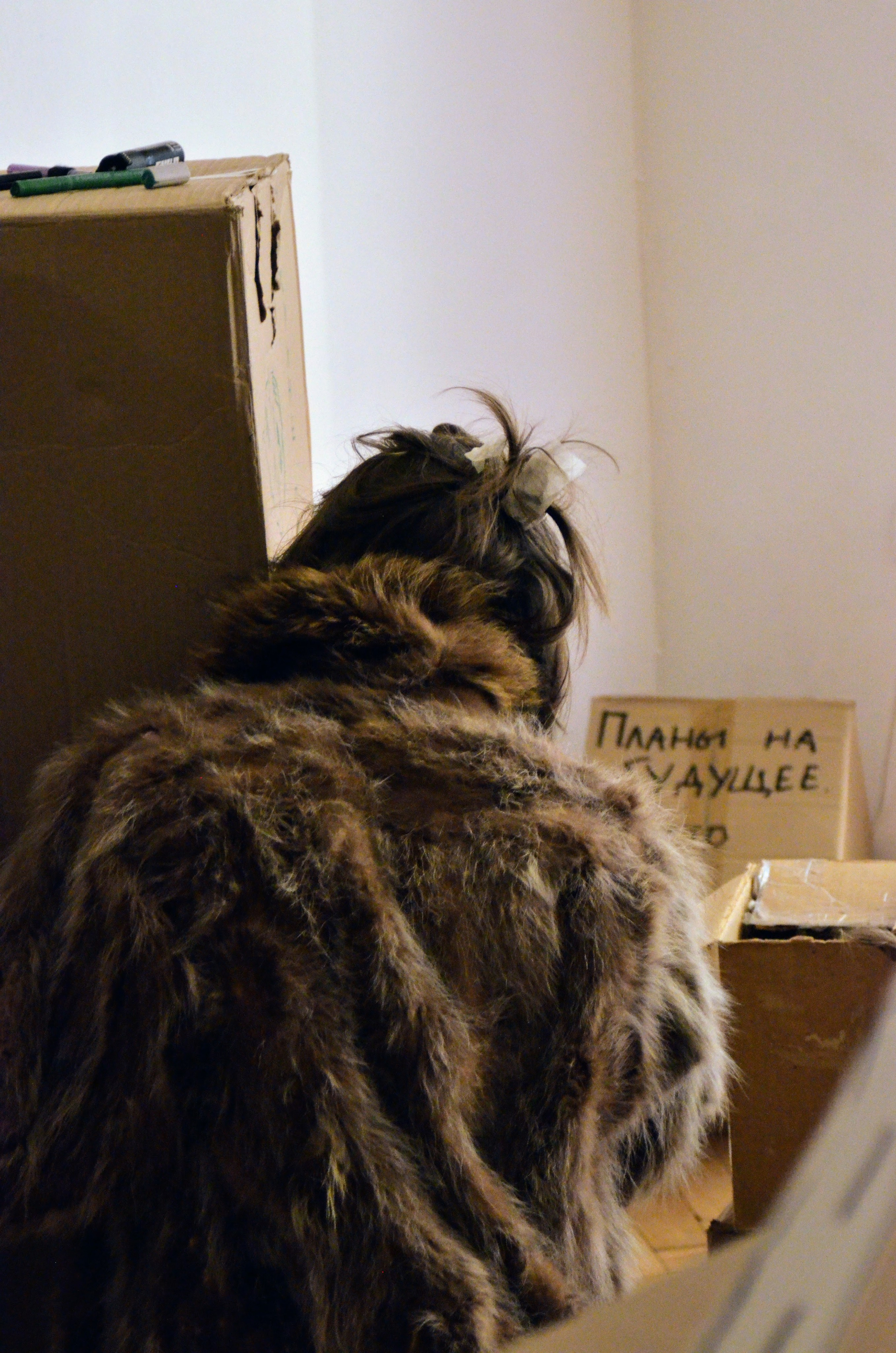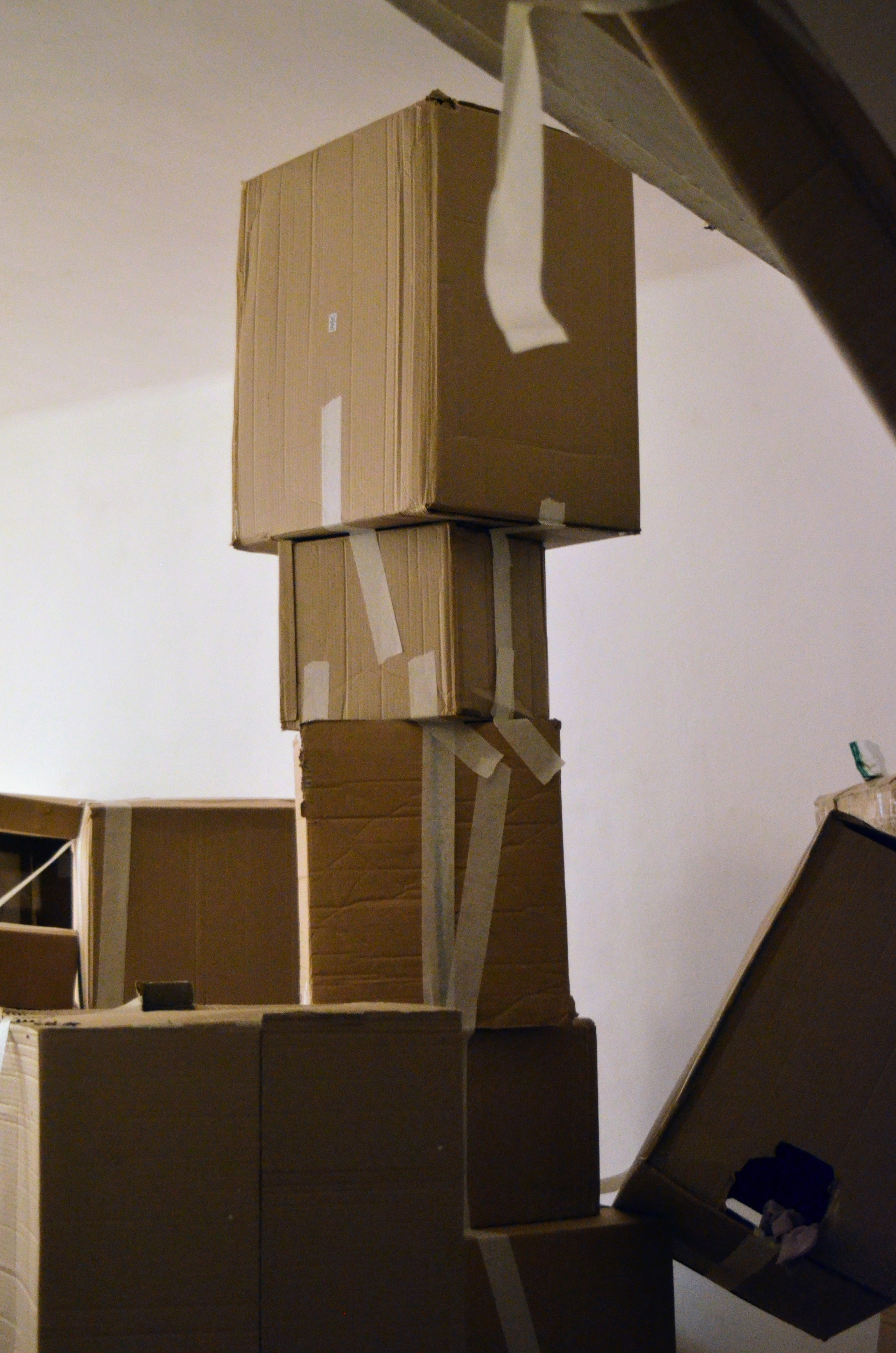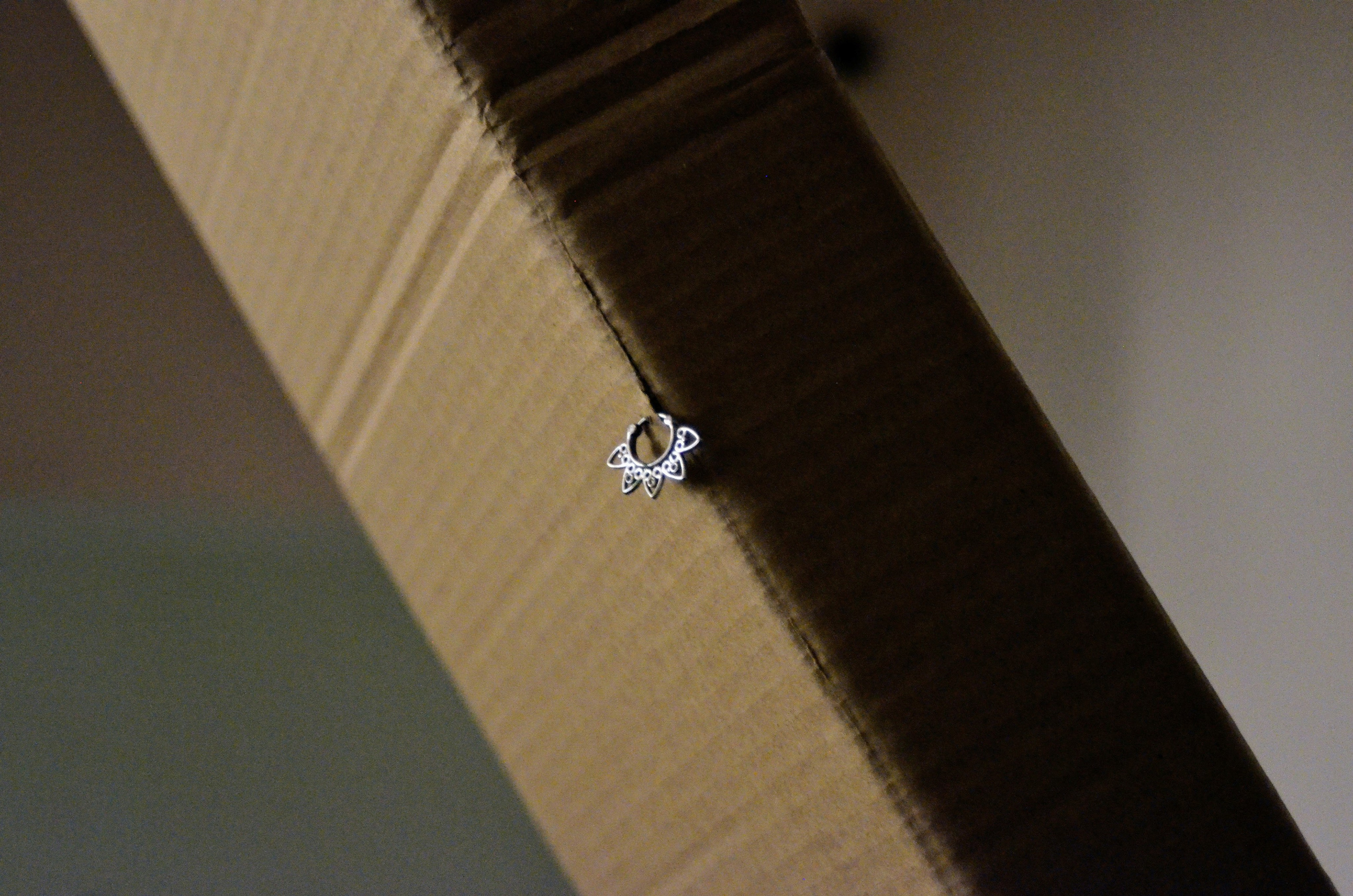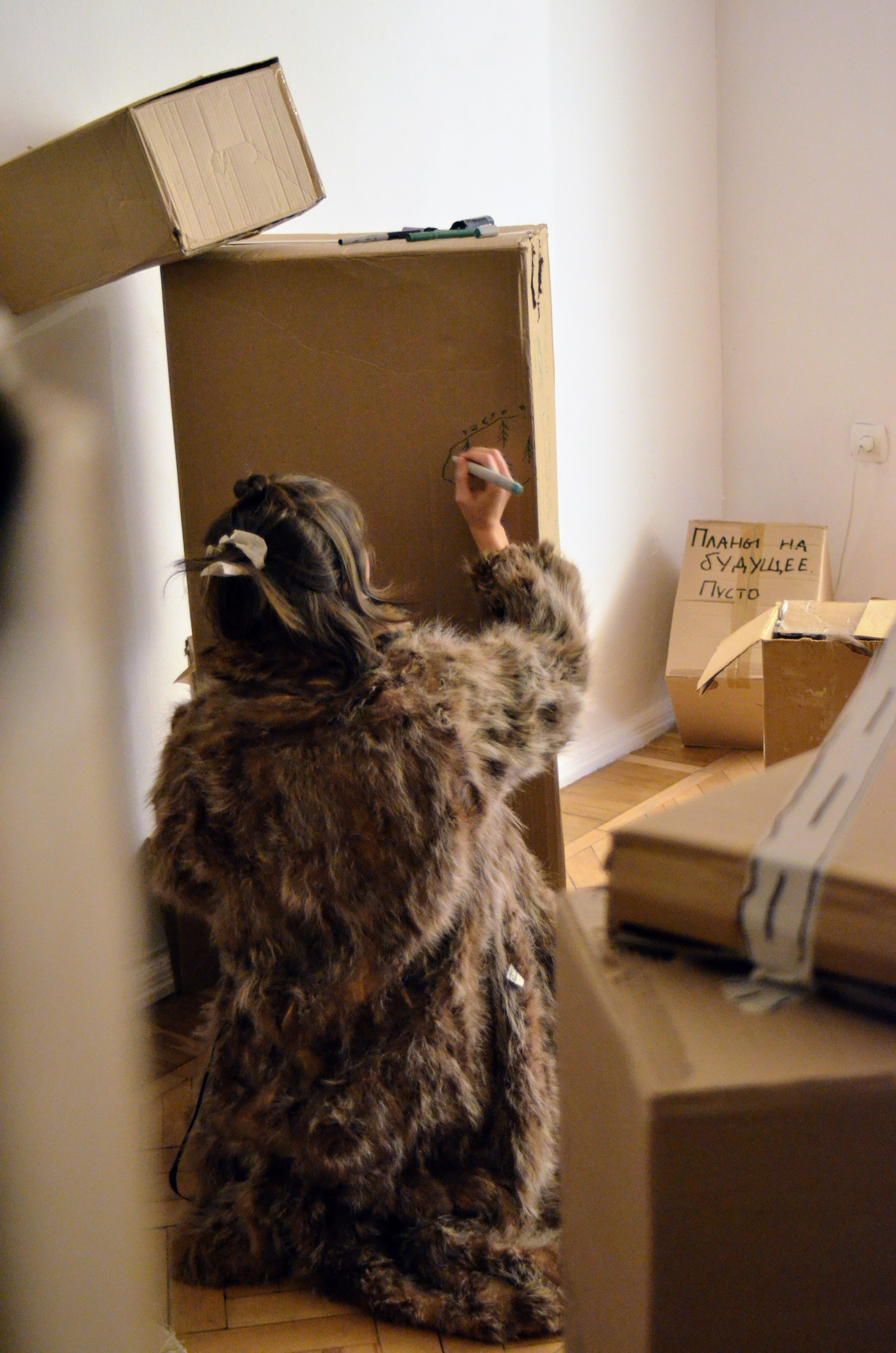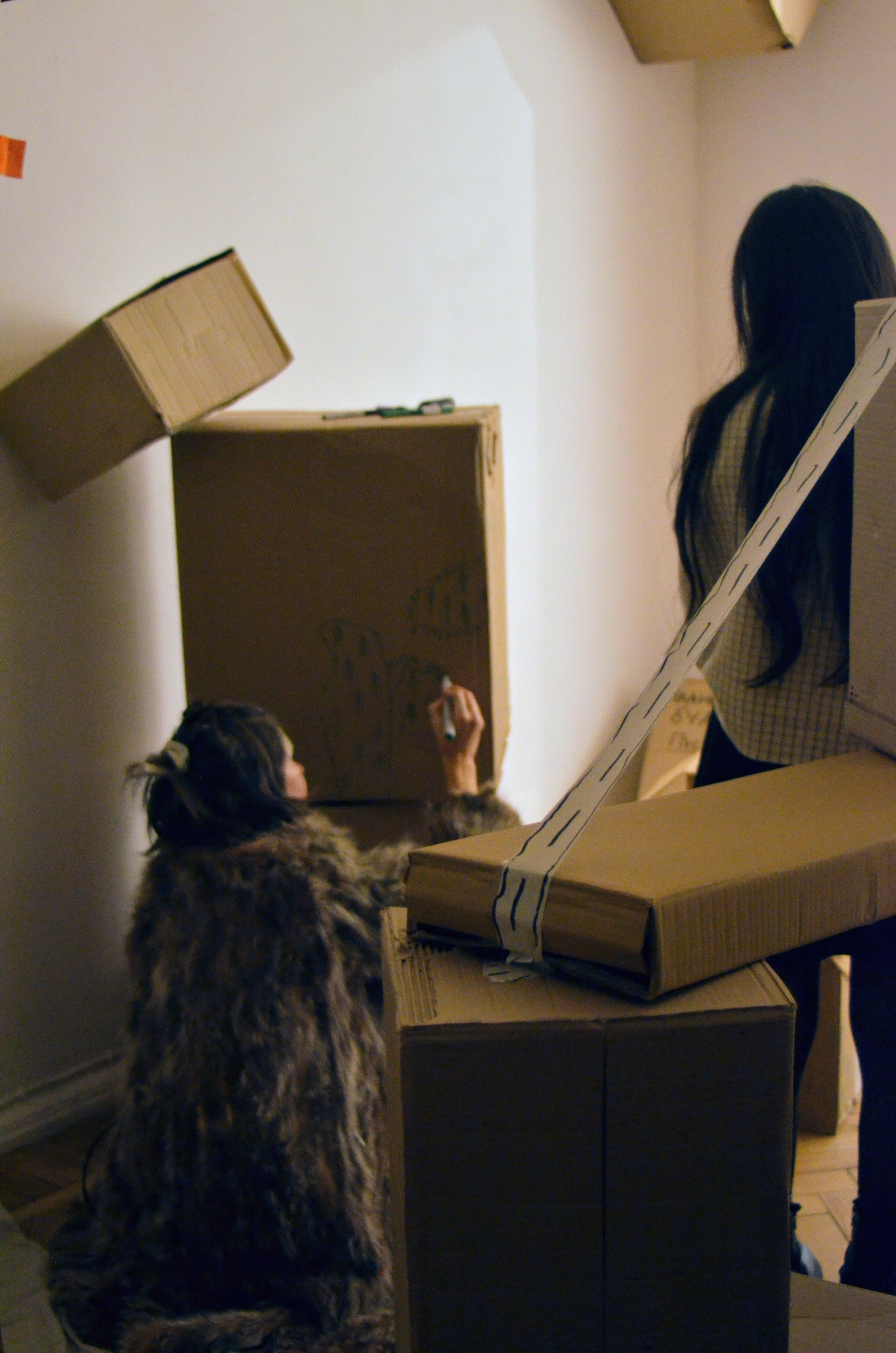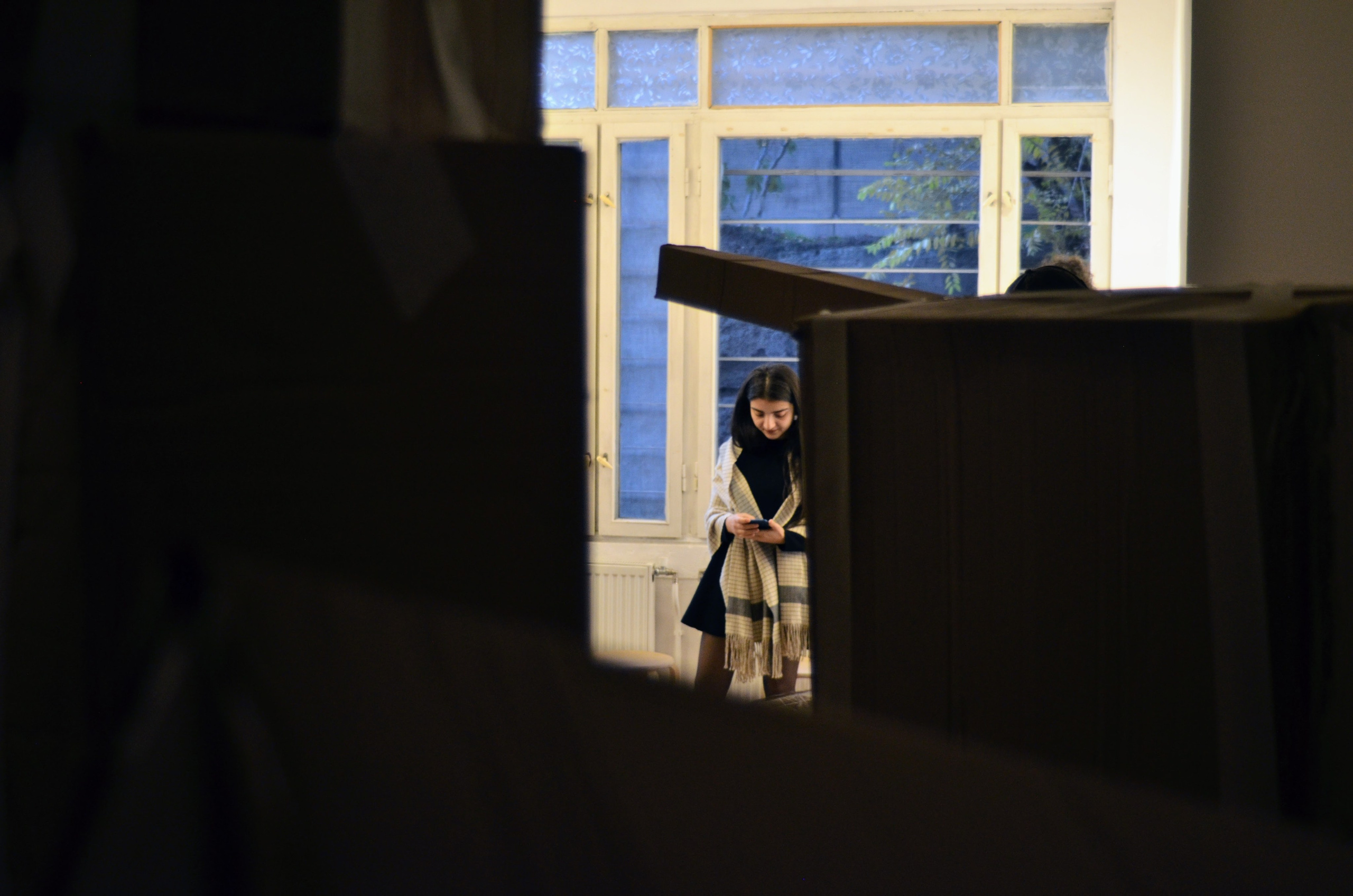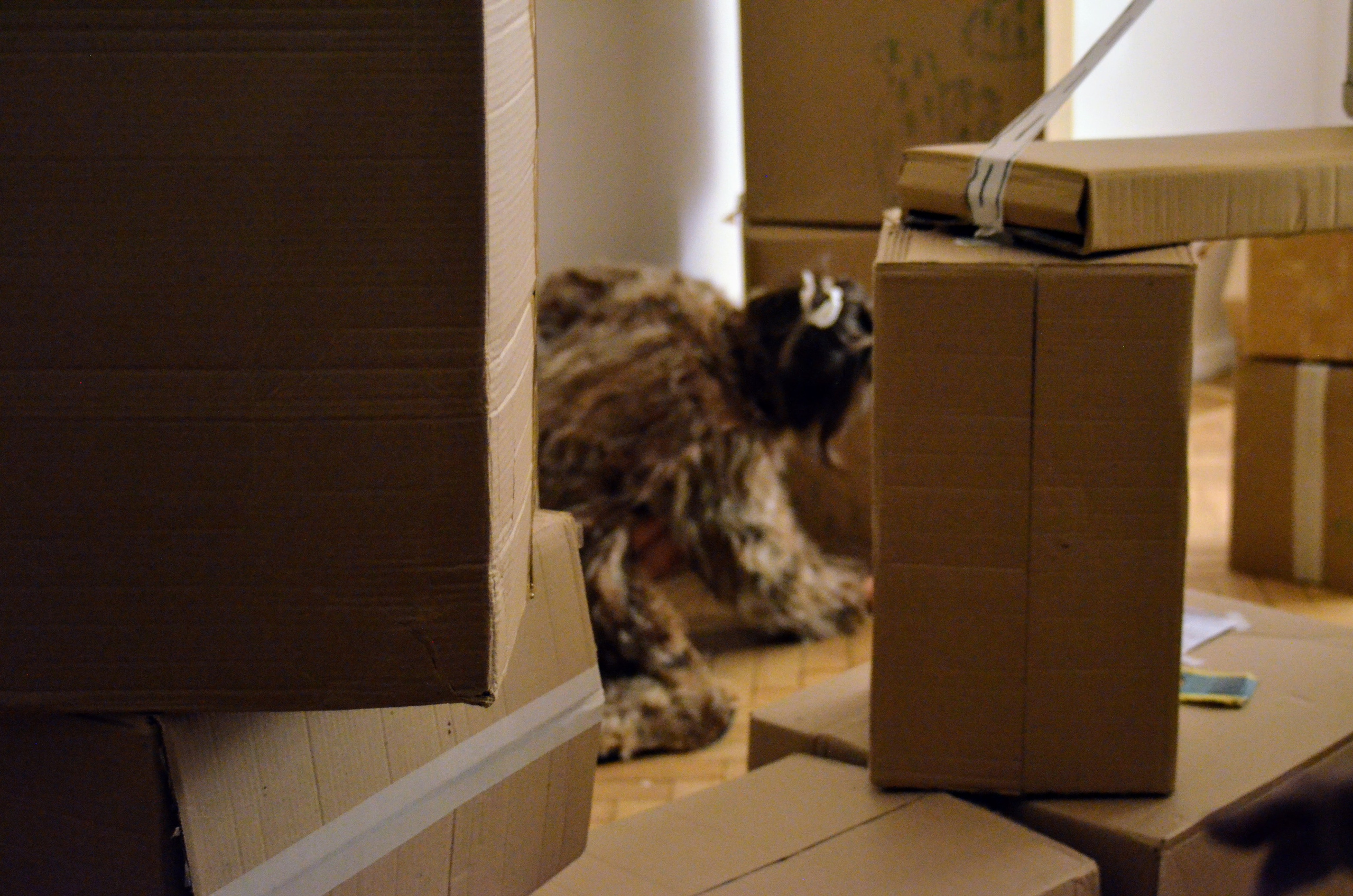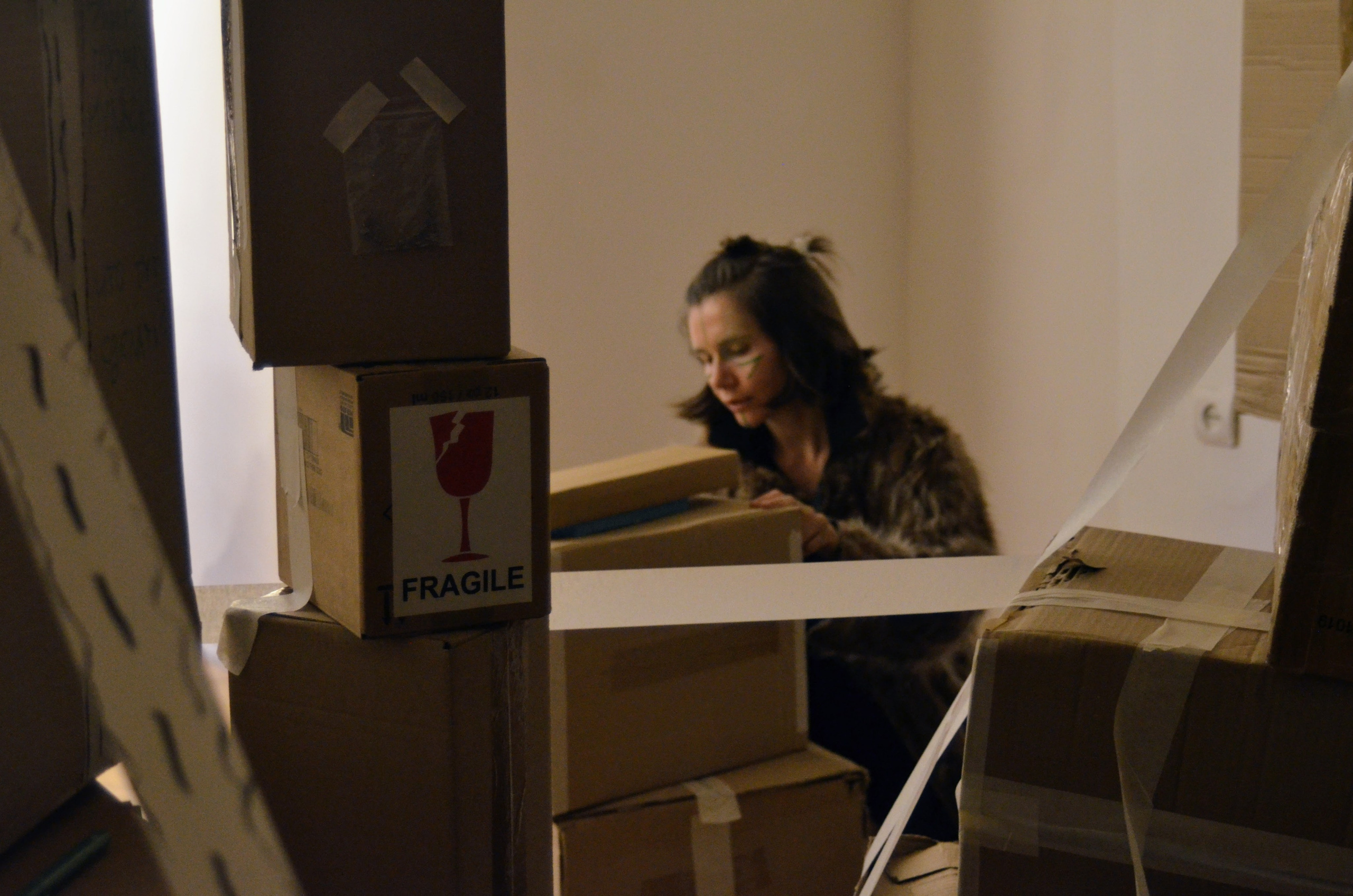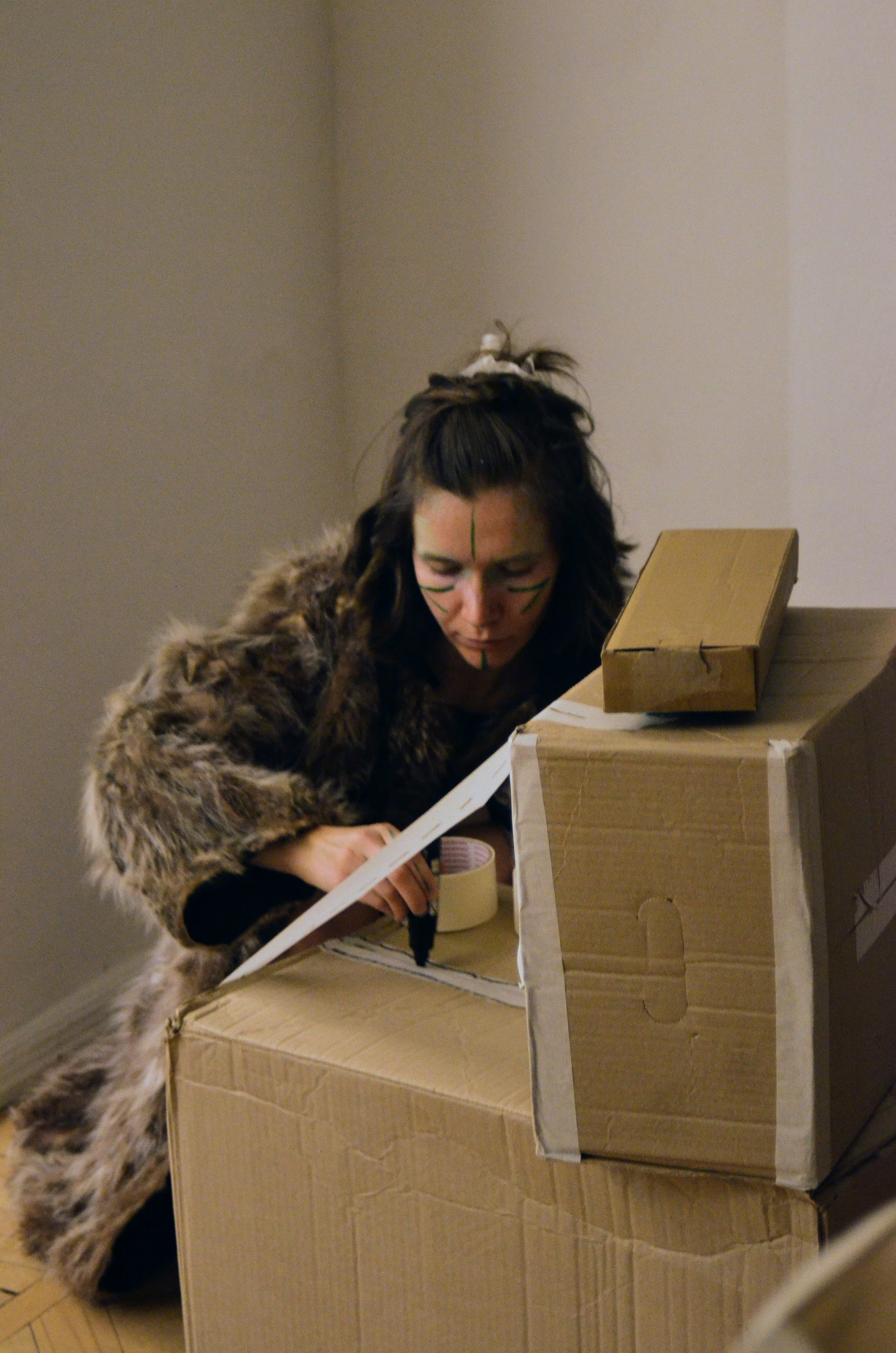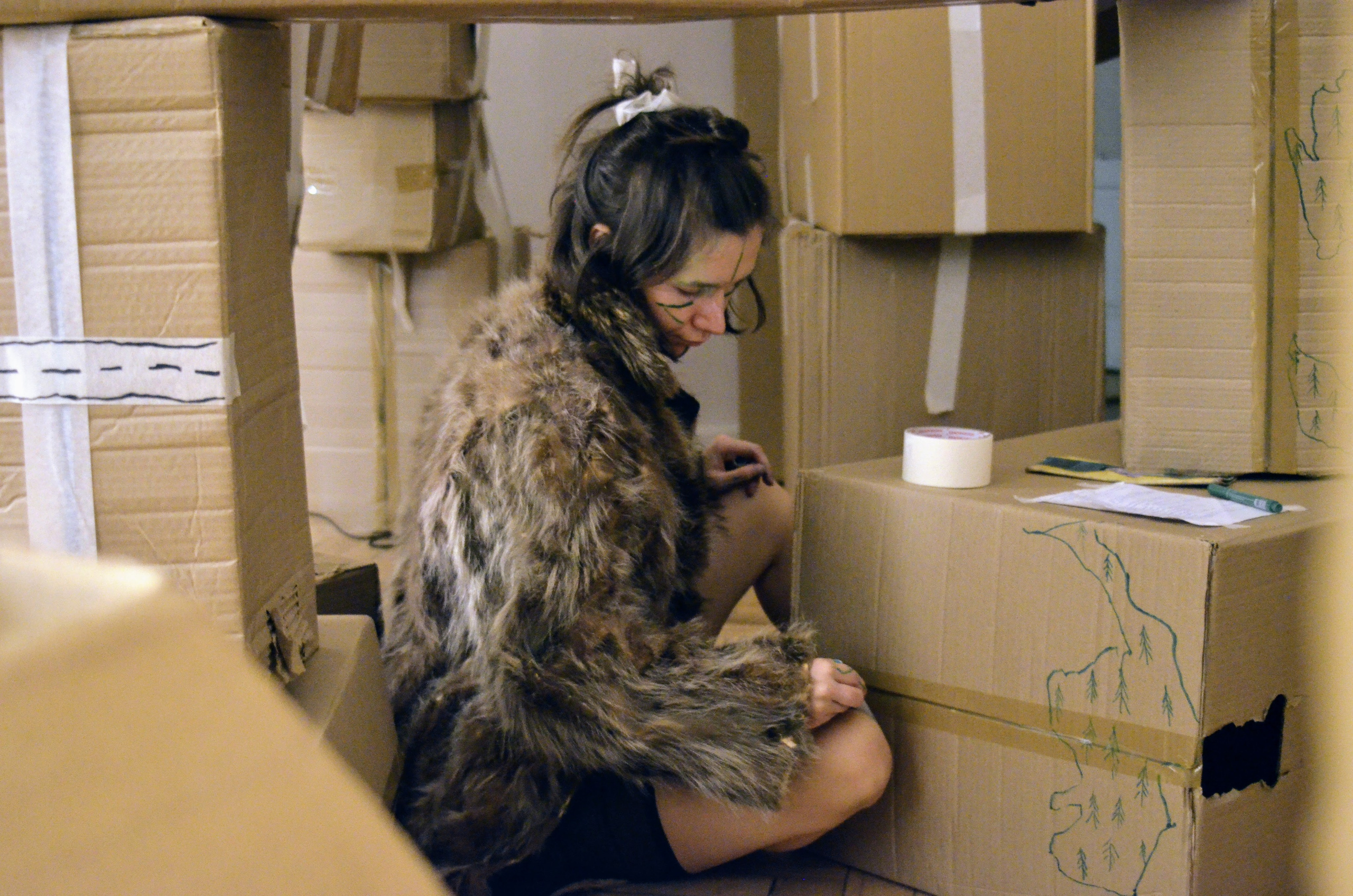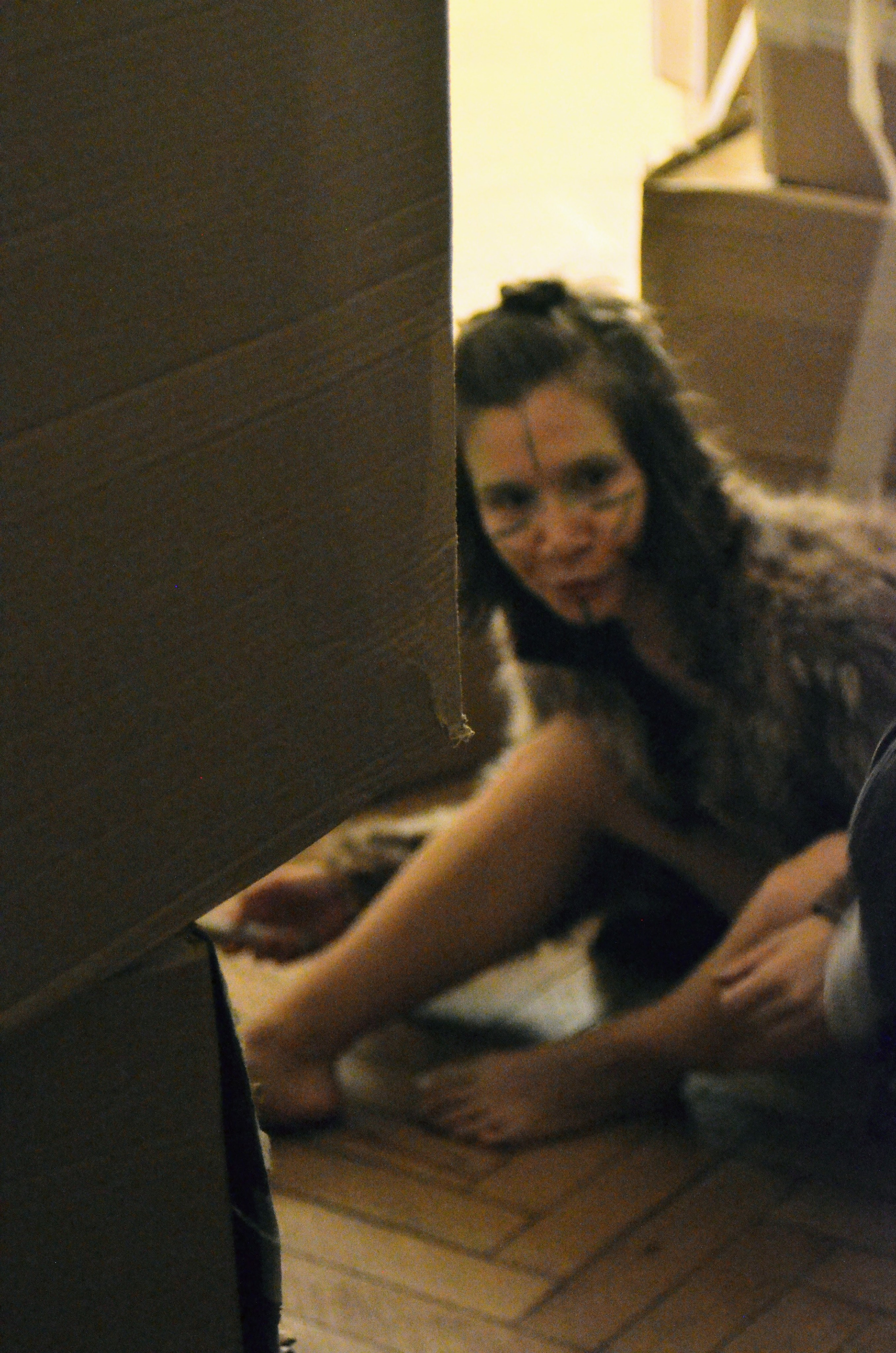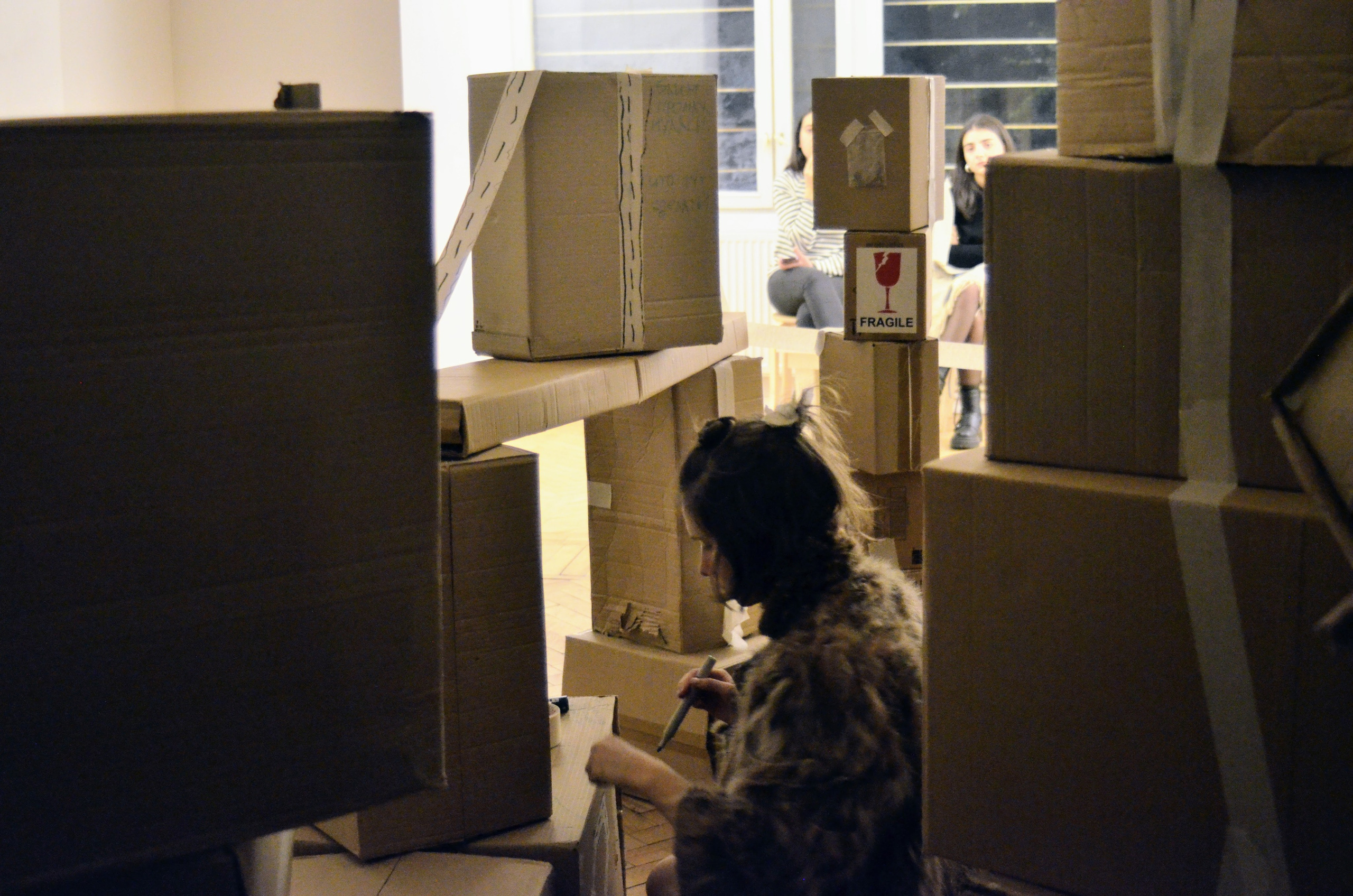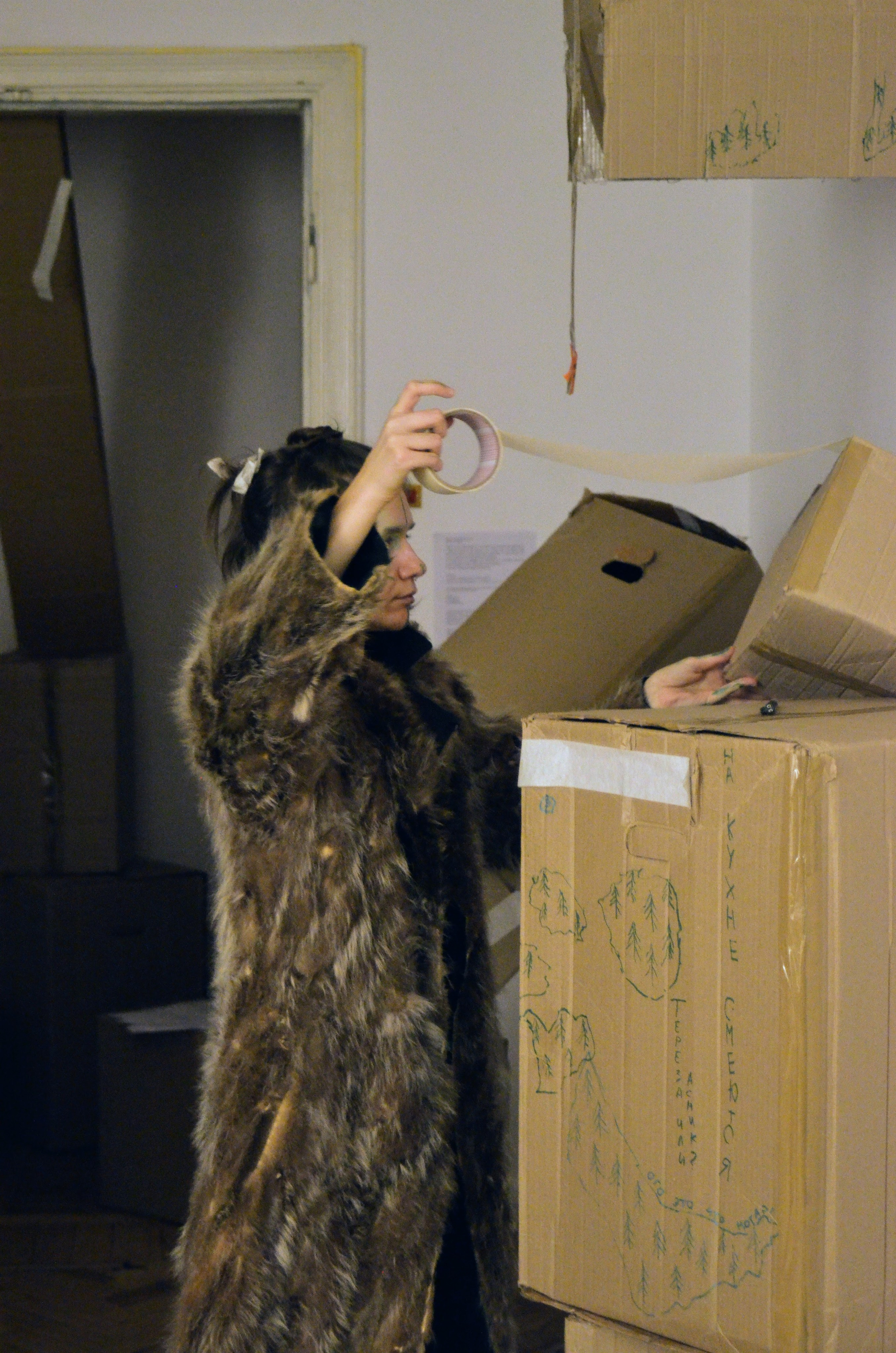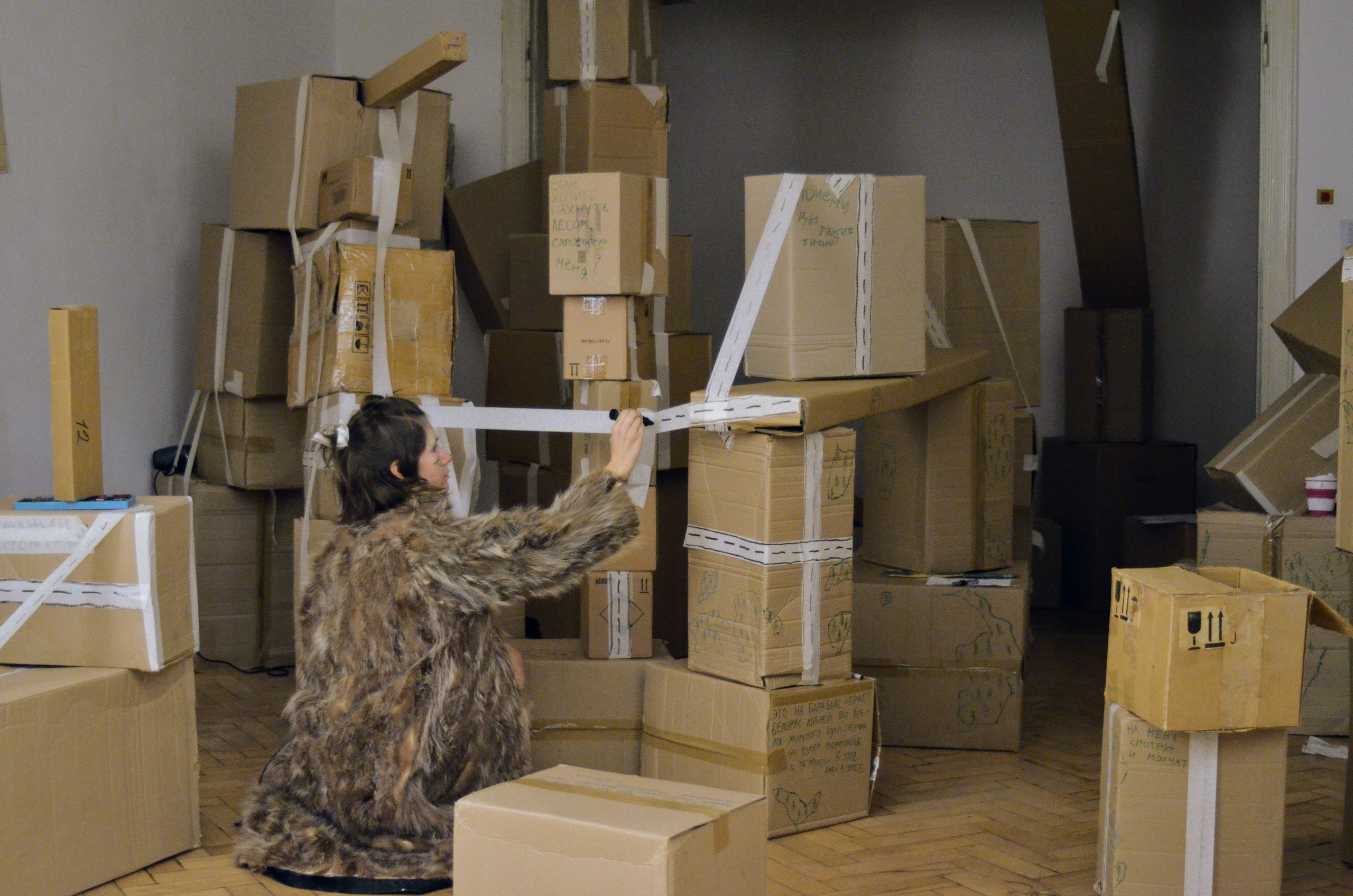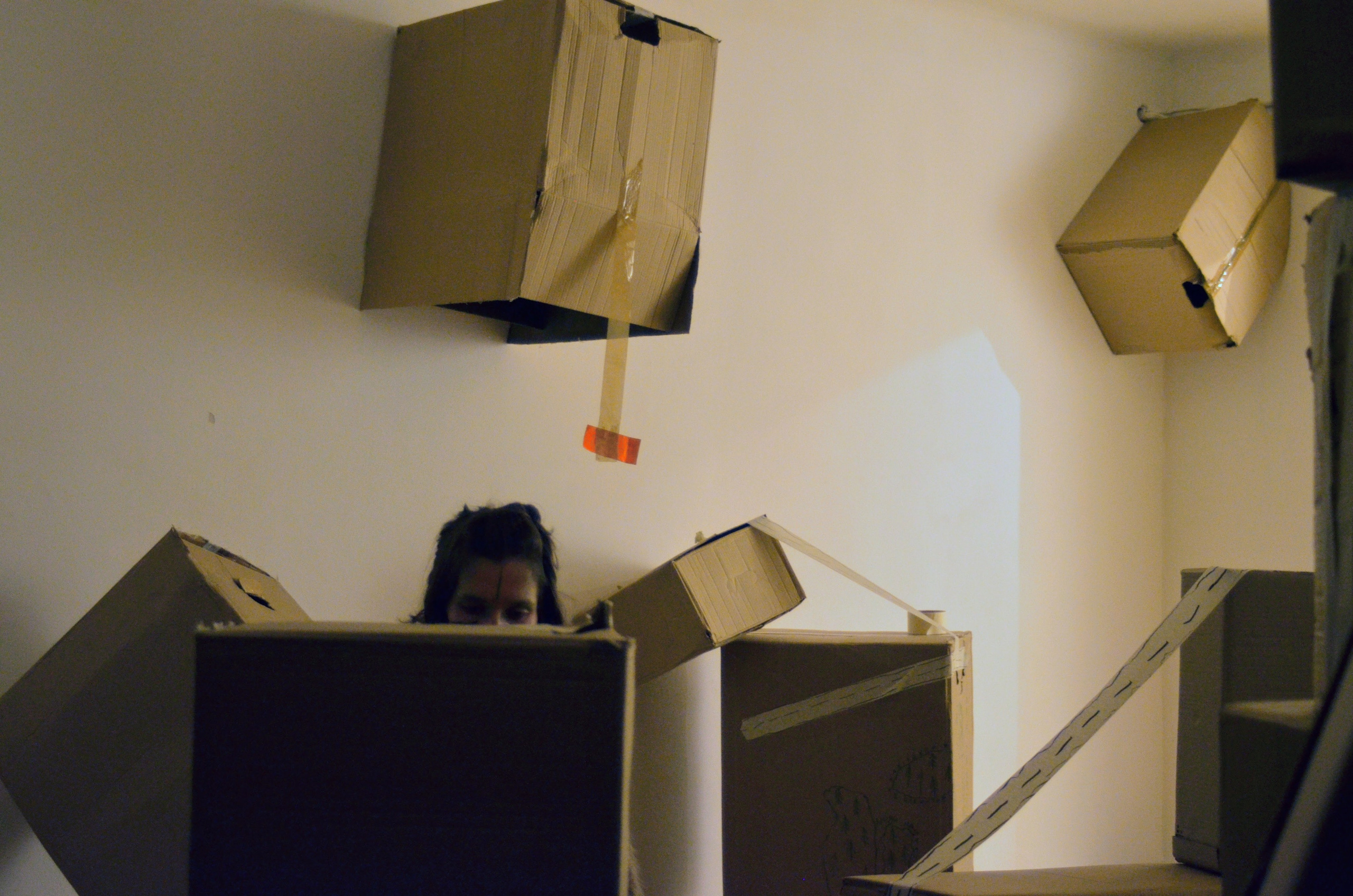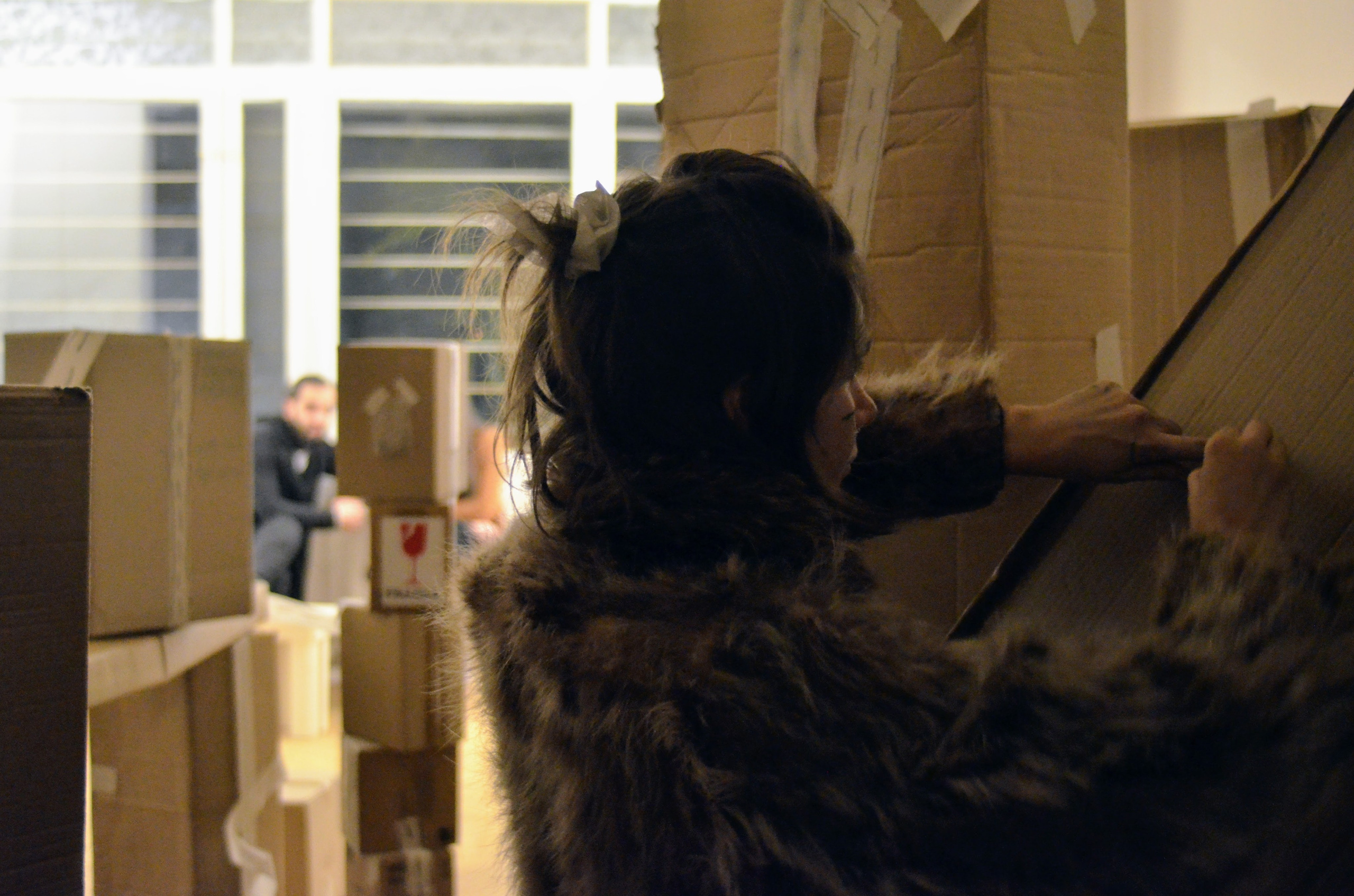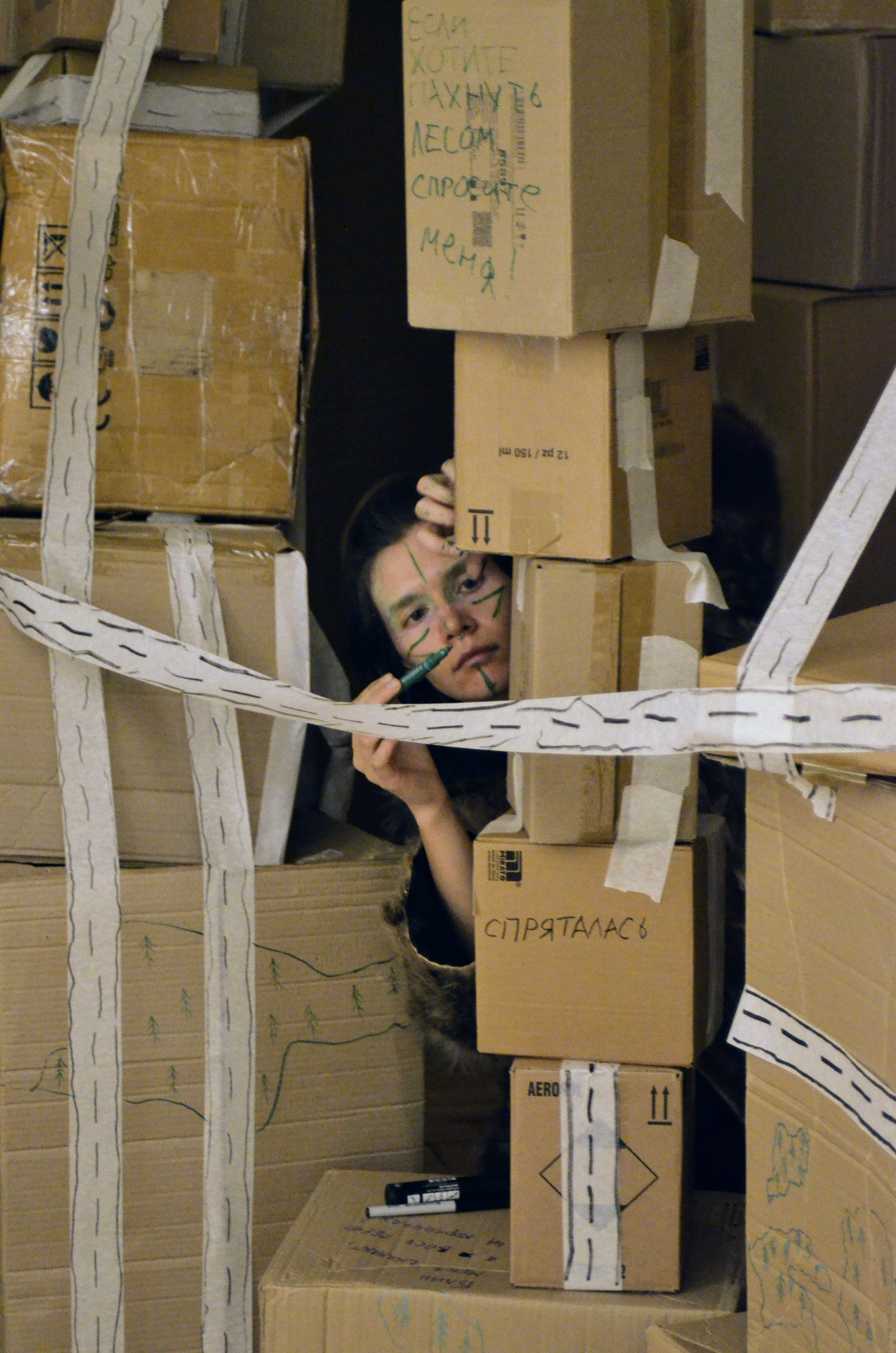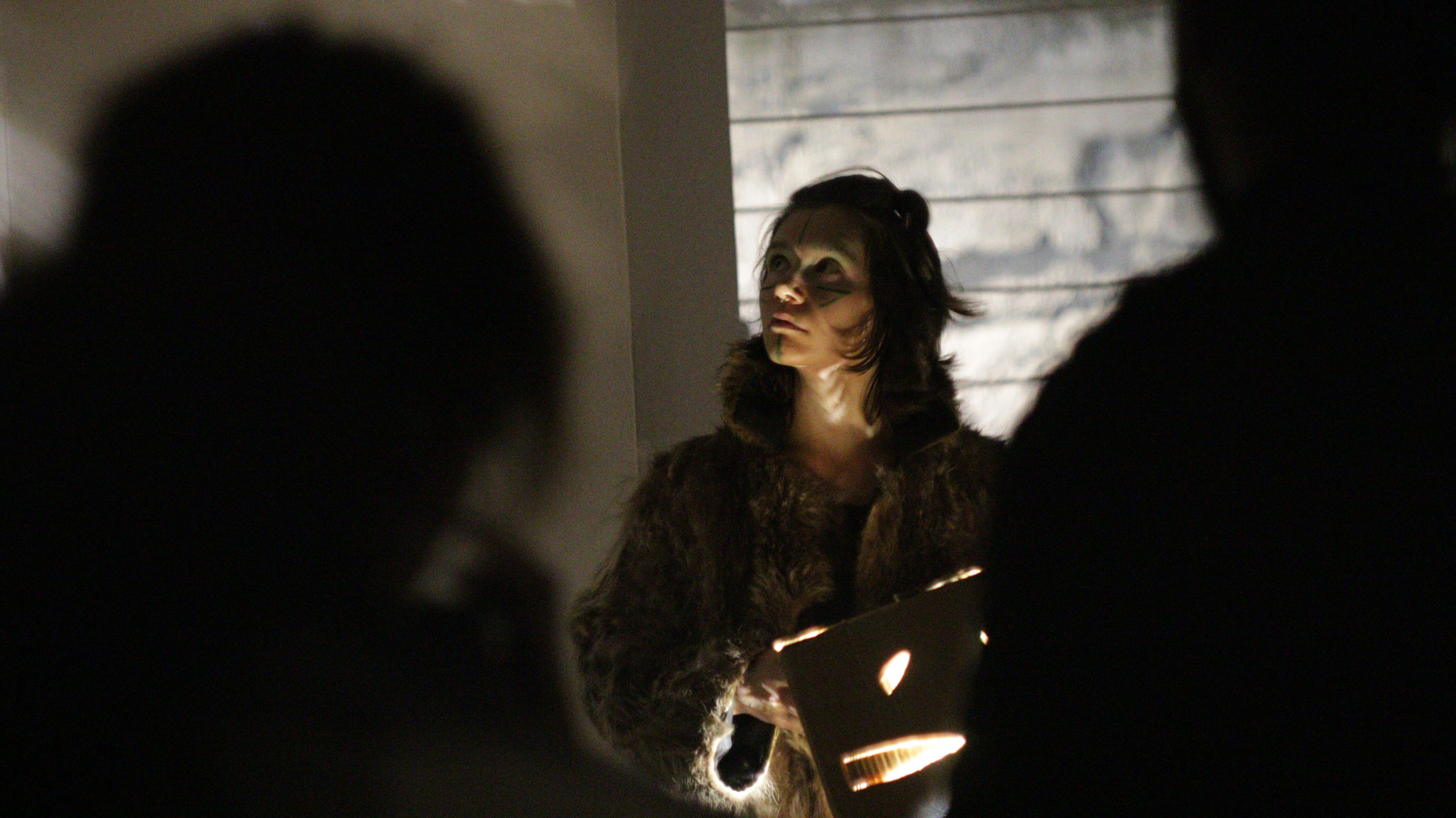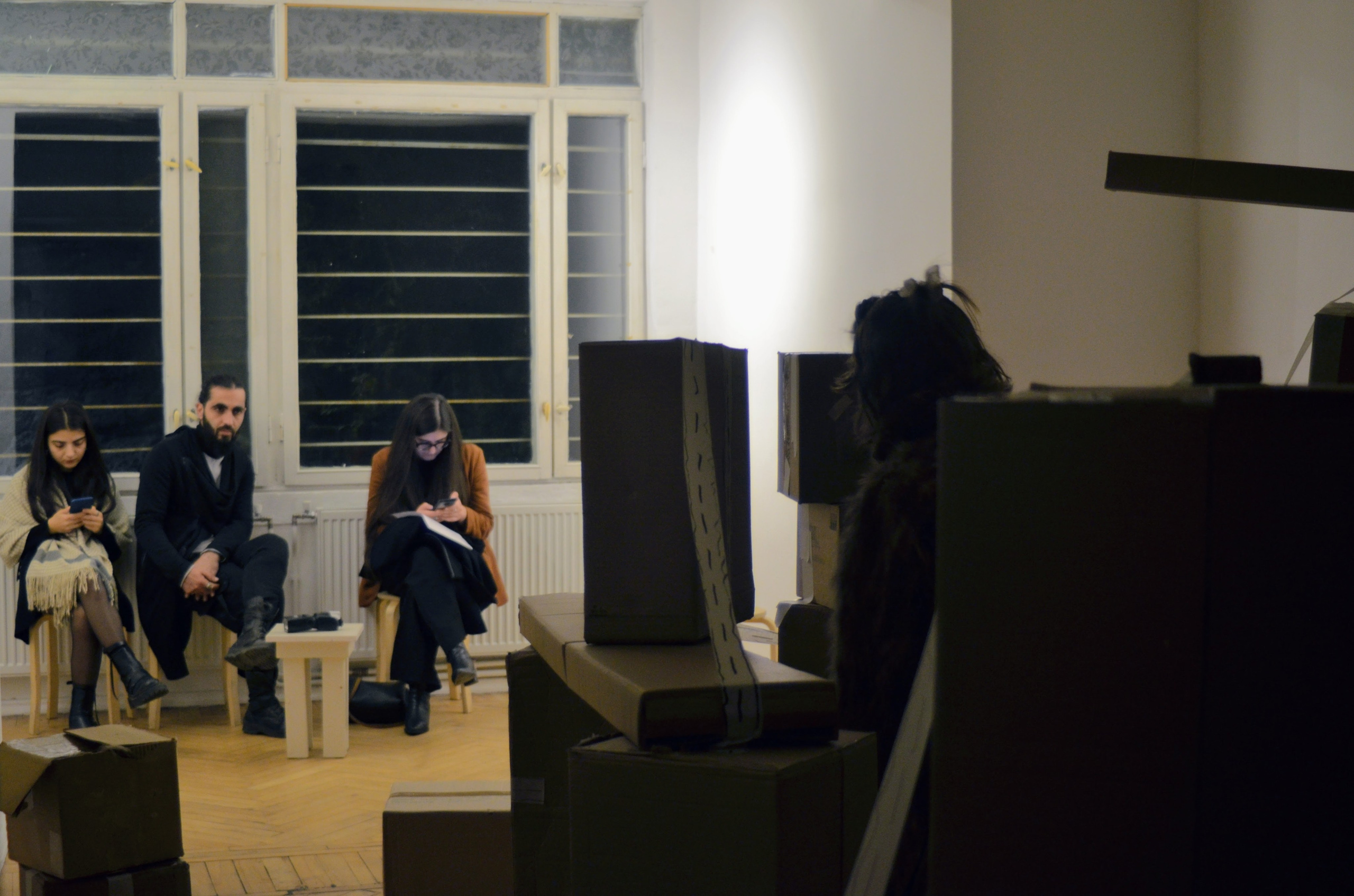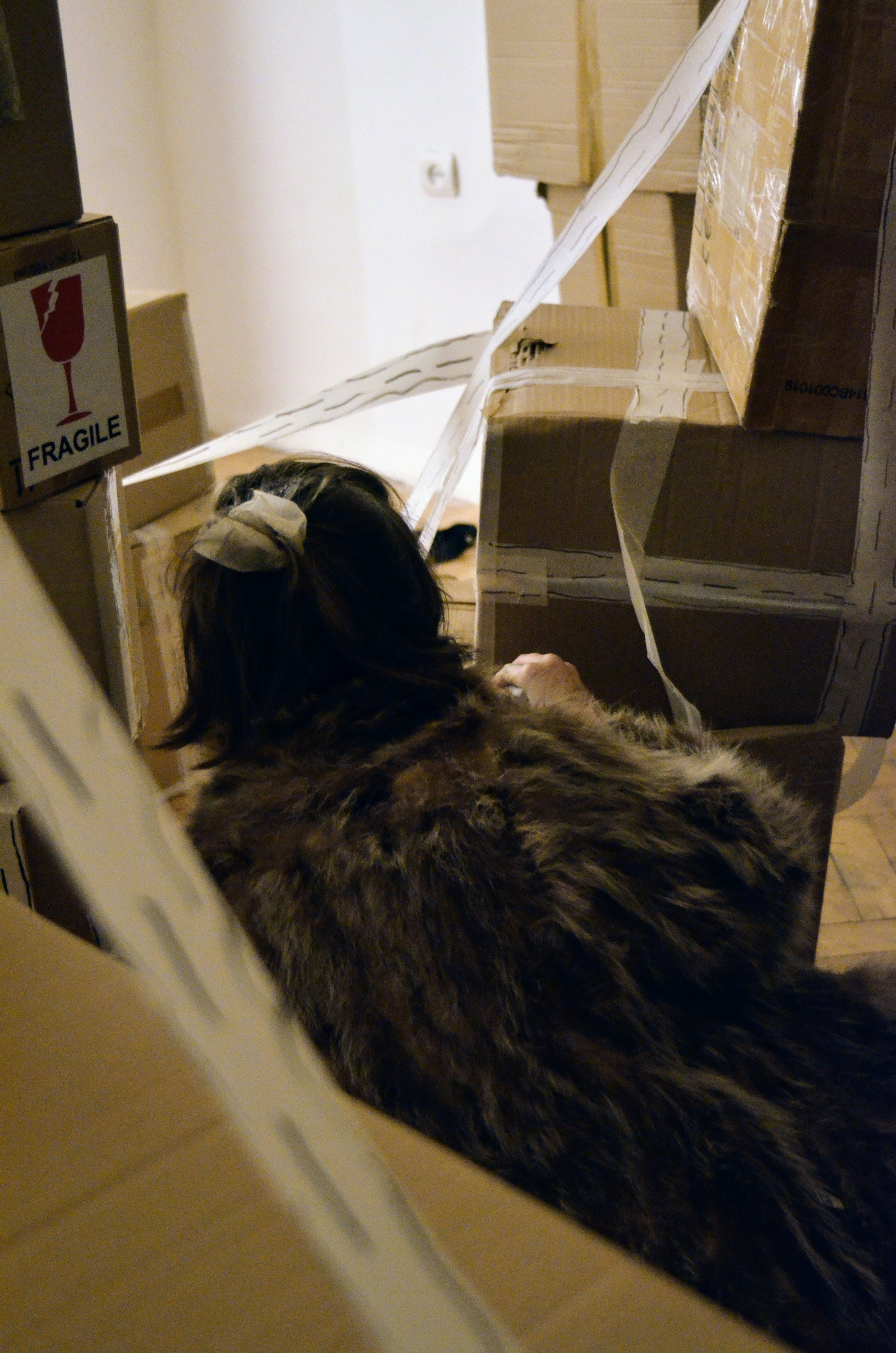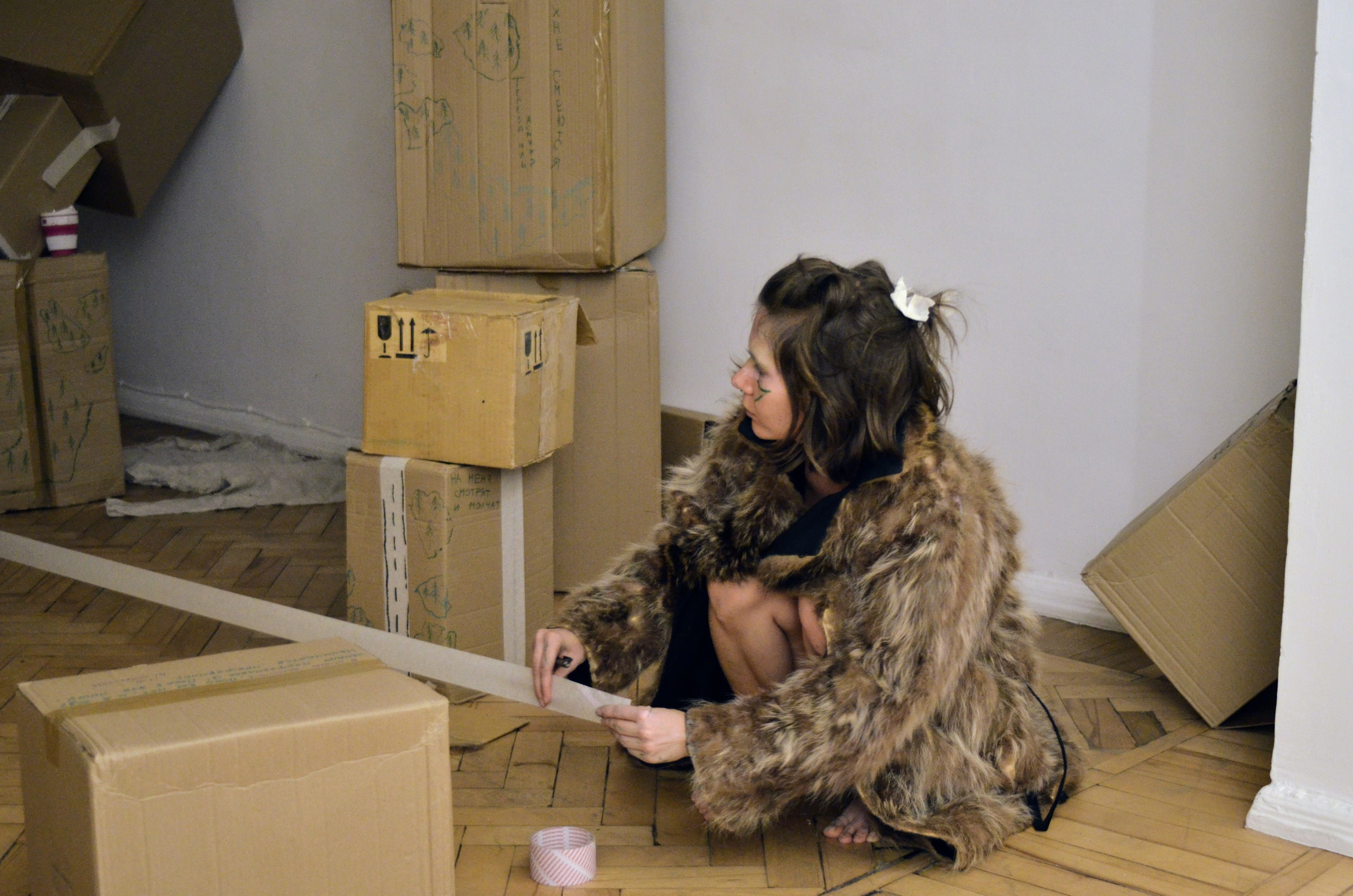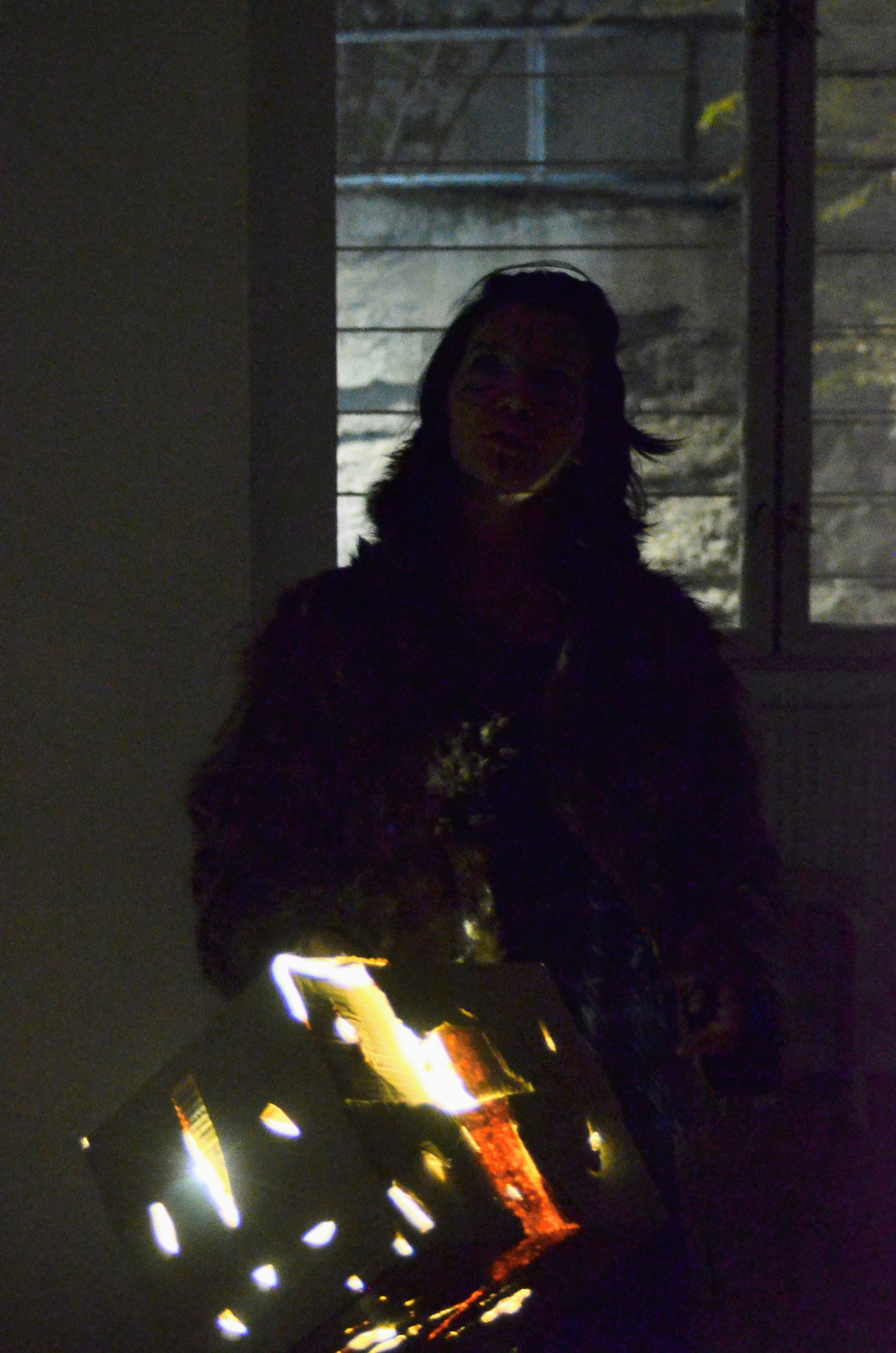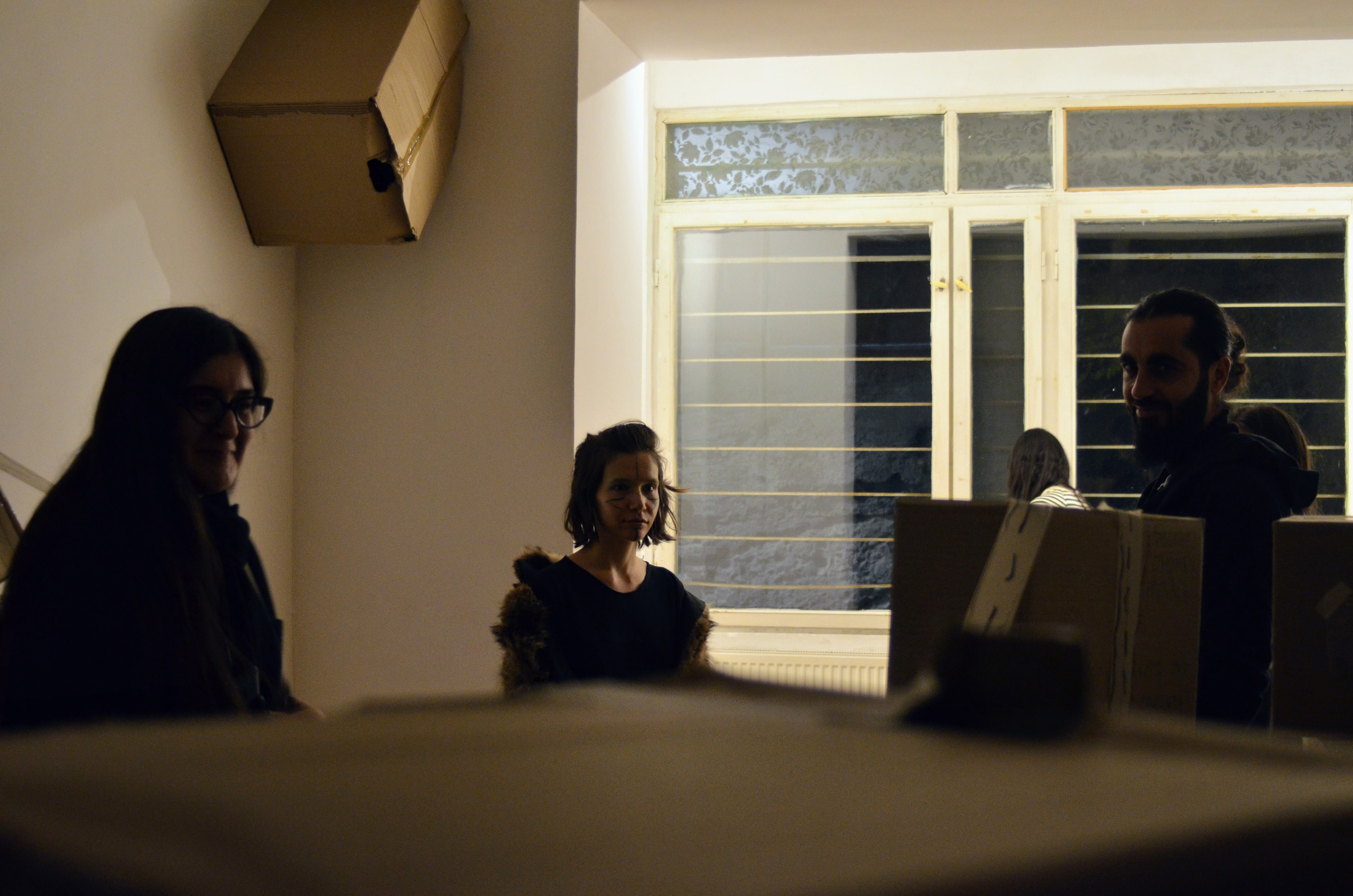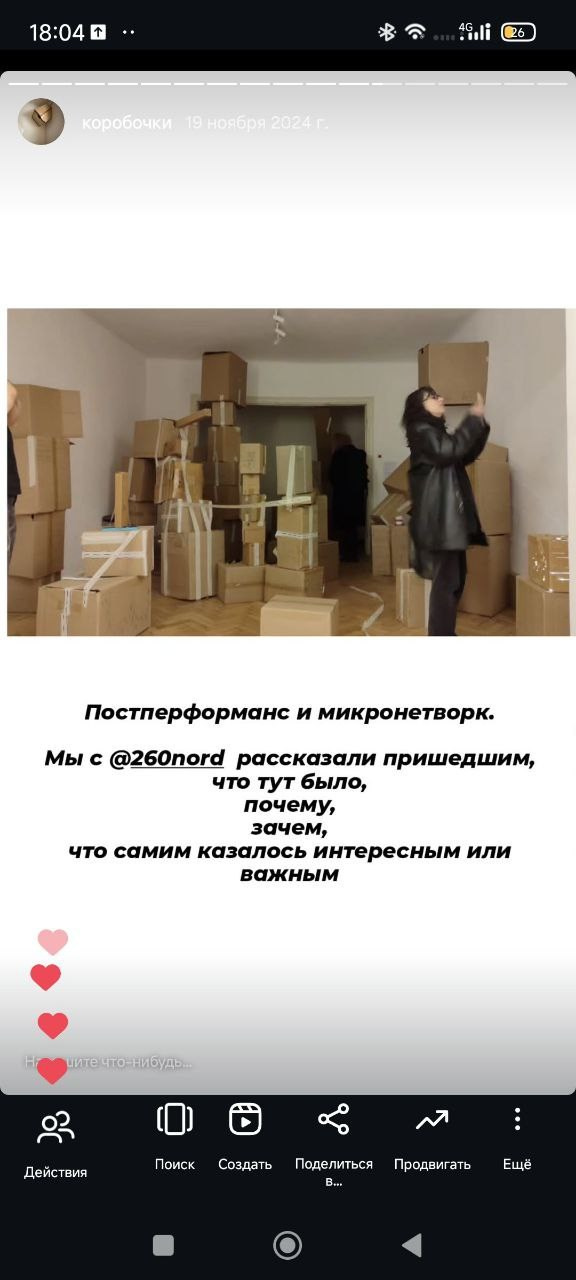On November 19, 2024, a performance — the first part of the diptych “The Boxes” — took place at : DDD Kunst House.
The audience was free to arrive at any time after 17:00.
Authors: Alena Fedorchenko and Mark Sharapov
Curators: Teresa Davtyan, Inna Ghazarian, Petros Ghazanchyan
Curatorial statement:
“Where Is Your Safe Space?” #7 is a series of performances exploring the multifaceted concept of safe spaces in our complex world. The project invites performance artists to share personal experiences of safety, protection, and comfort through live art, fostering collective inquiry.
Its main aim is to explore how individuals and communities create and maintain spaces of comfort — both physical and emotional.
The project is implemented within the framework of the Living Room — the Art and Social Transformation Laboratory, supported by Artasfoundation.
About the performance
Audience members were invited to navigate a spatial structure made of cardboard boxes, collecting messages along the way and encountering the artist’s experience through performance.
The boxes came from the emigration of Mark’s mother from Russia to Armenia. Some had been preserved since the 1990s and had become memory artifacts of his childhood. We chose not to turn those ones inside out (as we did with the others), leaving their history visible.
The performance was conceived as the first part of a diptych on the theme of safe space, and aimed to depict my own “journey in search of a safe space”.
I imagined the boxes forming a kind of labyrinth inside the room, as if they had exploded in every direction and were frozen mid-air, like in a freeze frame.
Within this chaos, Mark and I placed my personal belongings to be found along the way.
I also edited together all the videos I’d taken over the past couple of years — on trains, at stations, in cars, on hikes, and walks — all while in motion. The final video was 45 minutes long and looped continuously as part of the piece.
Text for visitors:
“In my view, curiosity is the opposite of fear.
Since childhood I’ve been constantly moving, and I’m still in transit, always searching.
Sometimes the very stability of movement becomes my safe space,
sometimes it’s simply the possibility of being able to leave at any time.
But the best thing is when a place welcomes me — and I welcome it back.”
Inside the performance
We had to compromise and use only part of the space — which actually supported the idea: visitors entered not only my inner chaos, but also had the possibility to exit it.
My inner world is not the whole world.
For about three hours, I continued to lay tape lines between the boxes and draw road markings on them. I randomly traced outlines of my own body on the boxes, enclosing them in imaginary islands and filling the shapes with schematic little fir trees.
Sometimes I left written messages for the audience — I wrote about my feelings and thoughts in the moment, observations, or questions. But my self-contained existence and focus on my own process didn’t invite conversation.
People took photos of the messages, discussed them with each other, but didn’t respond directly to me.
At some point I felt an accumulating discomfort from the impossibility of direct contact within the structure of the piece, and I tried to break through it. I picked up the tape and started laying a path on the floor toward the viewers — but the tape suddenly ran out.
My path ended with the last strip.
So I started speaking to the audience and pointed out how this accident became a symbol — and that it was the most appropriate way to end the performance.
Then I placed a lamp inside a box pierced with many holes, and little points of light scattered across the room.
“The Boxes” — Part Two. Installation.
Coming soon.
